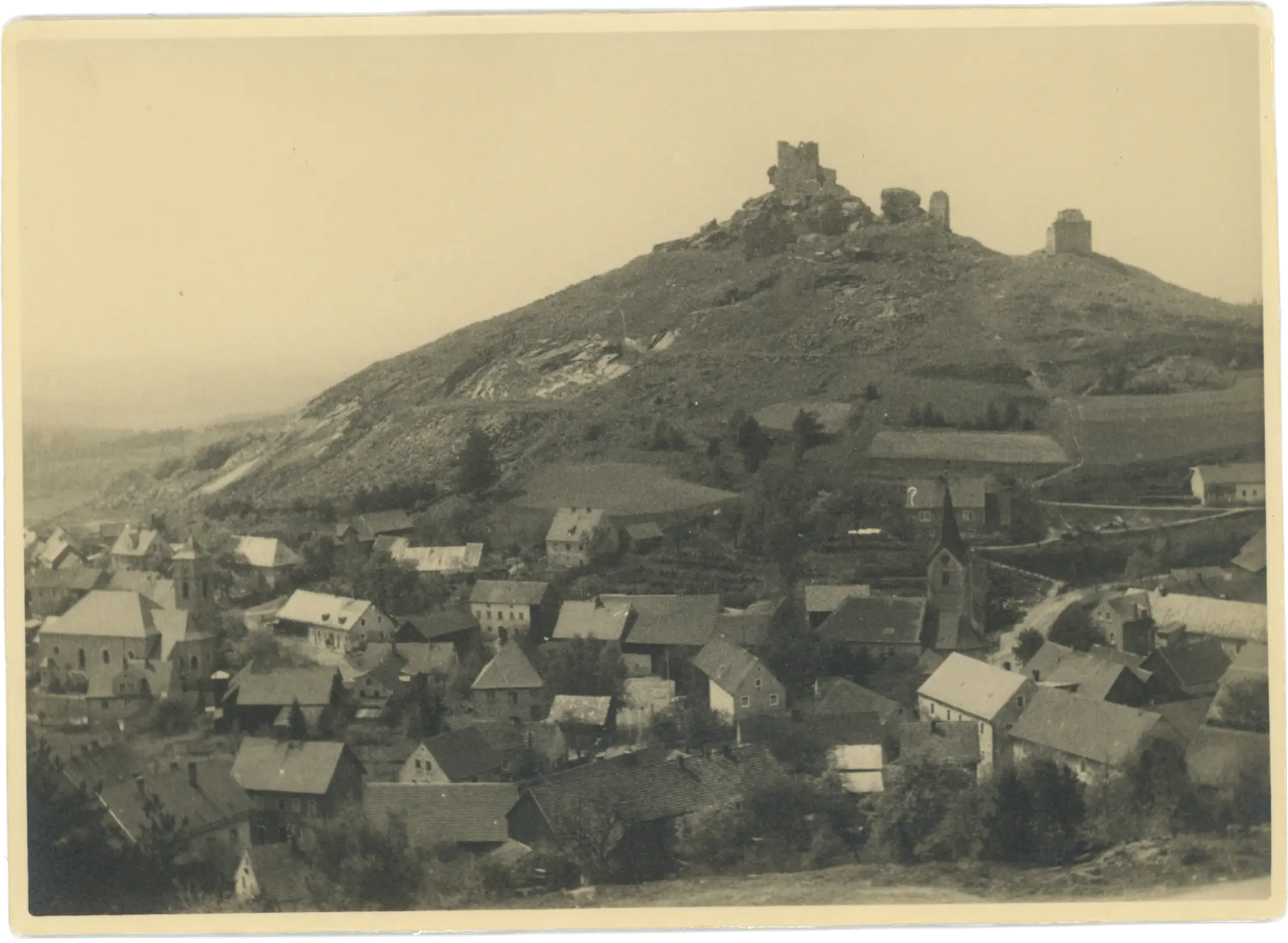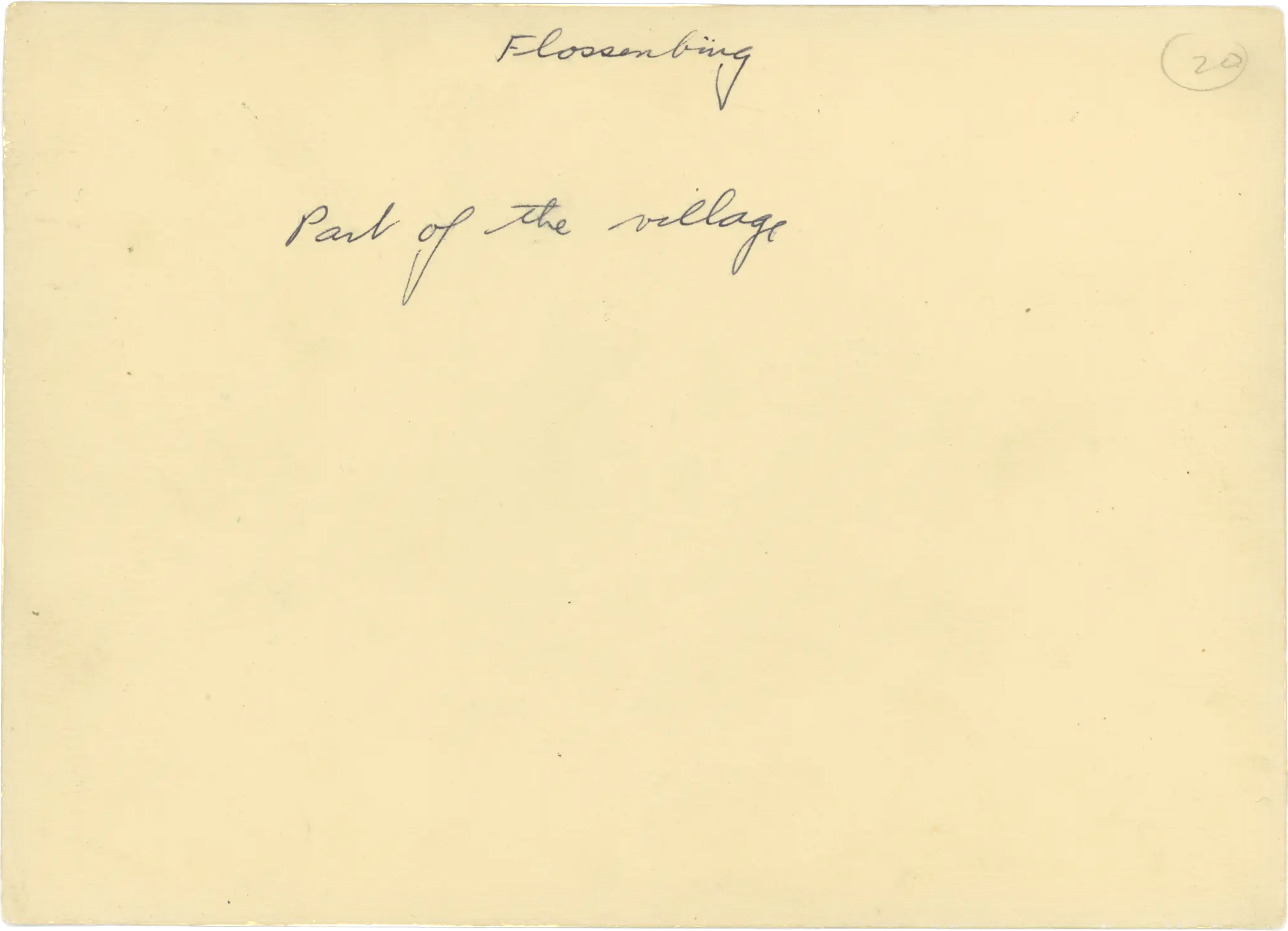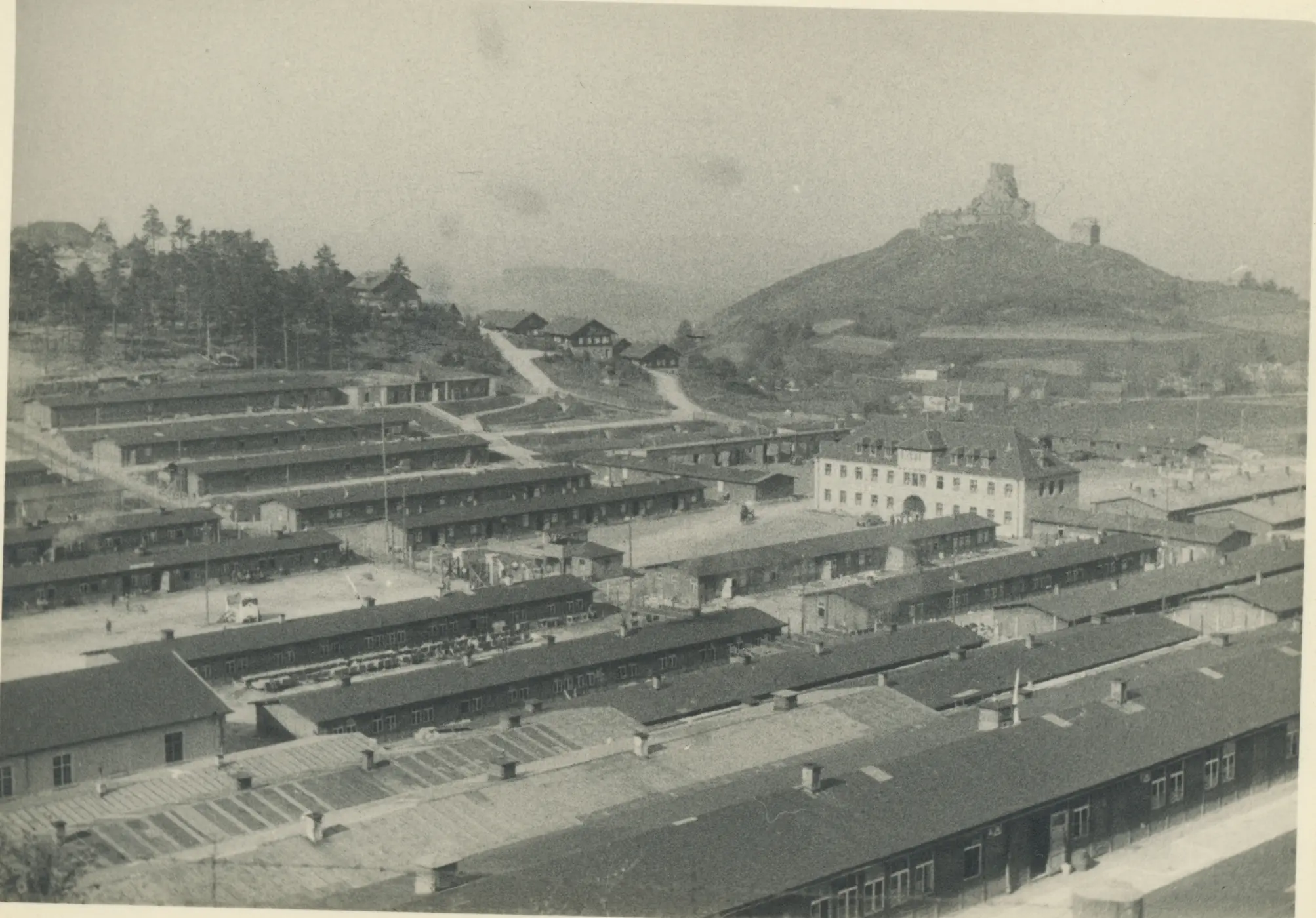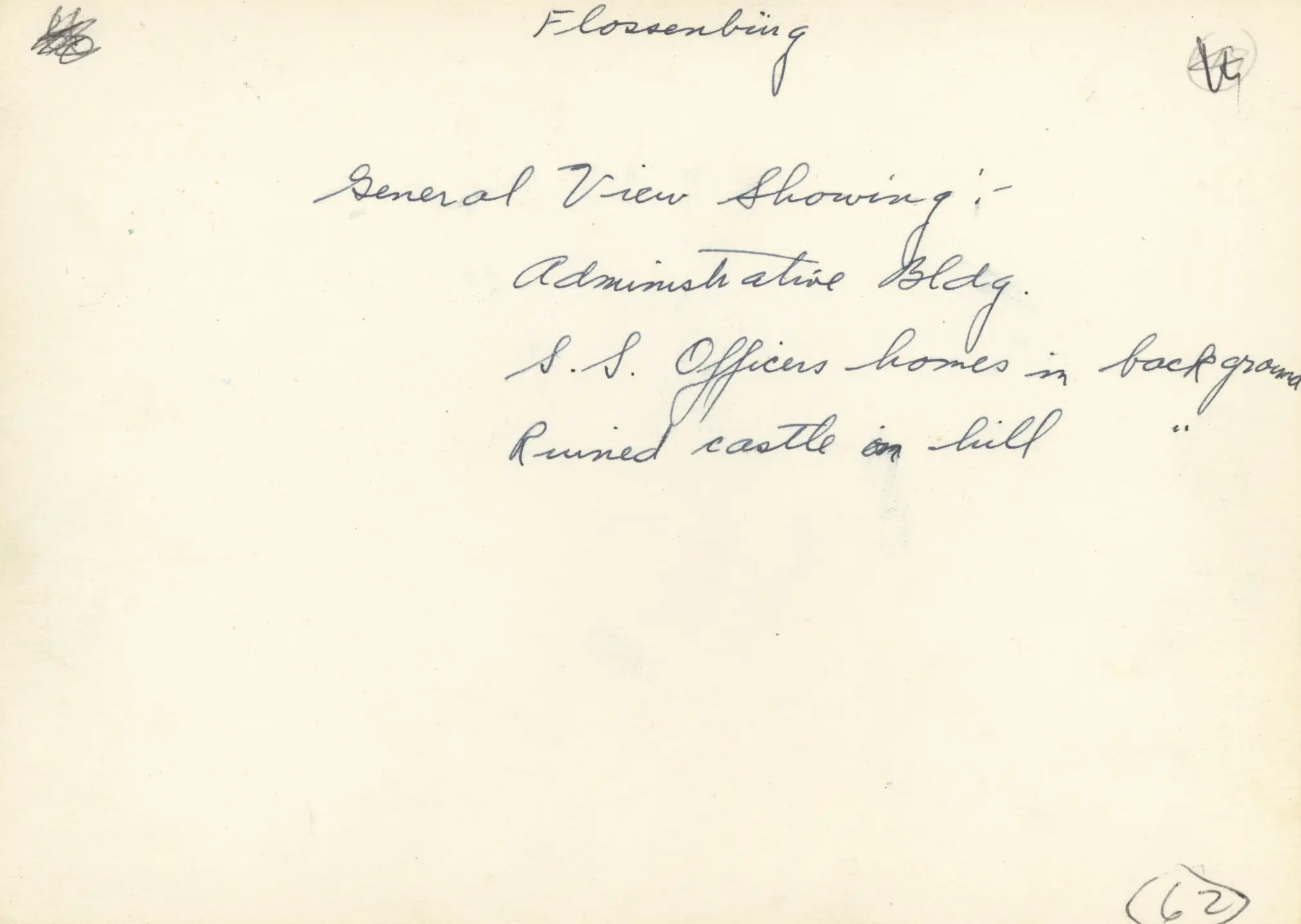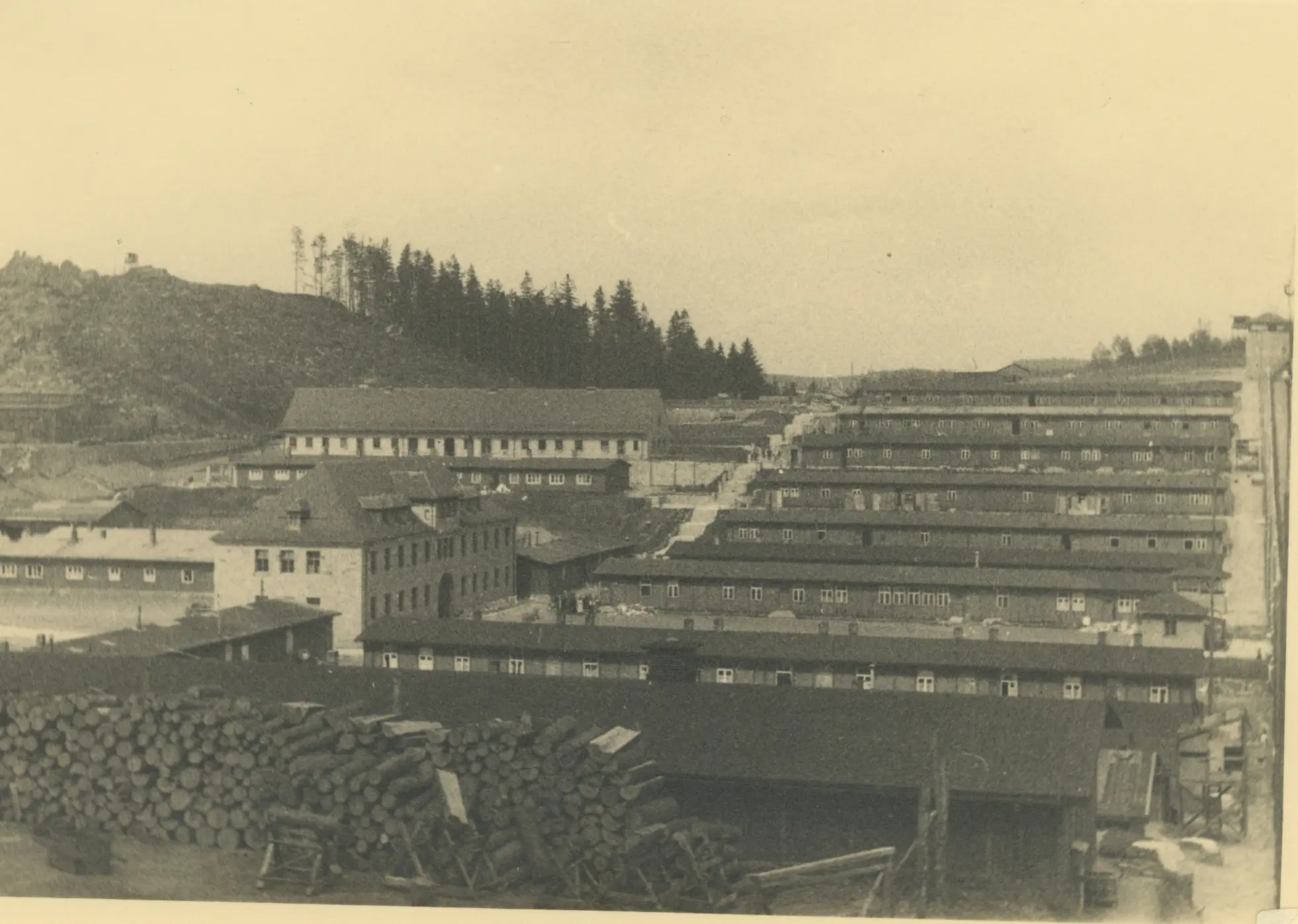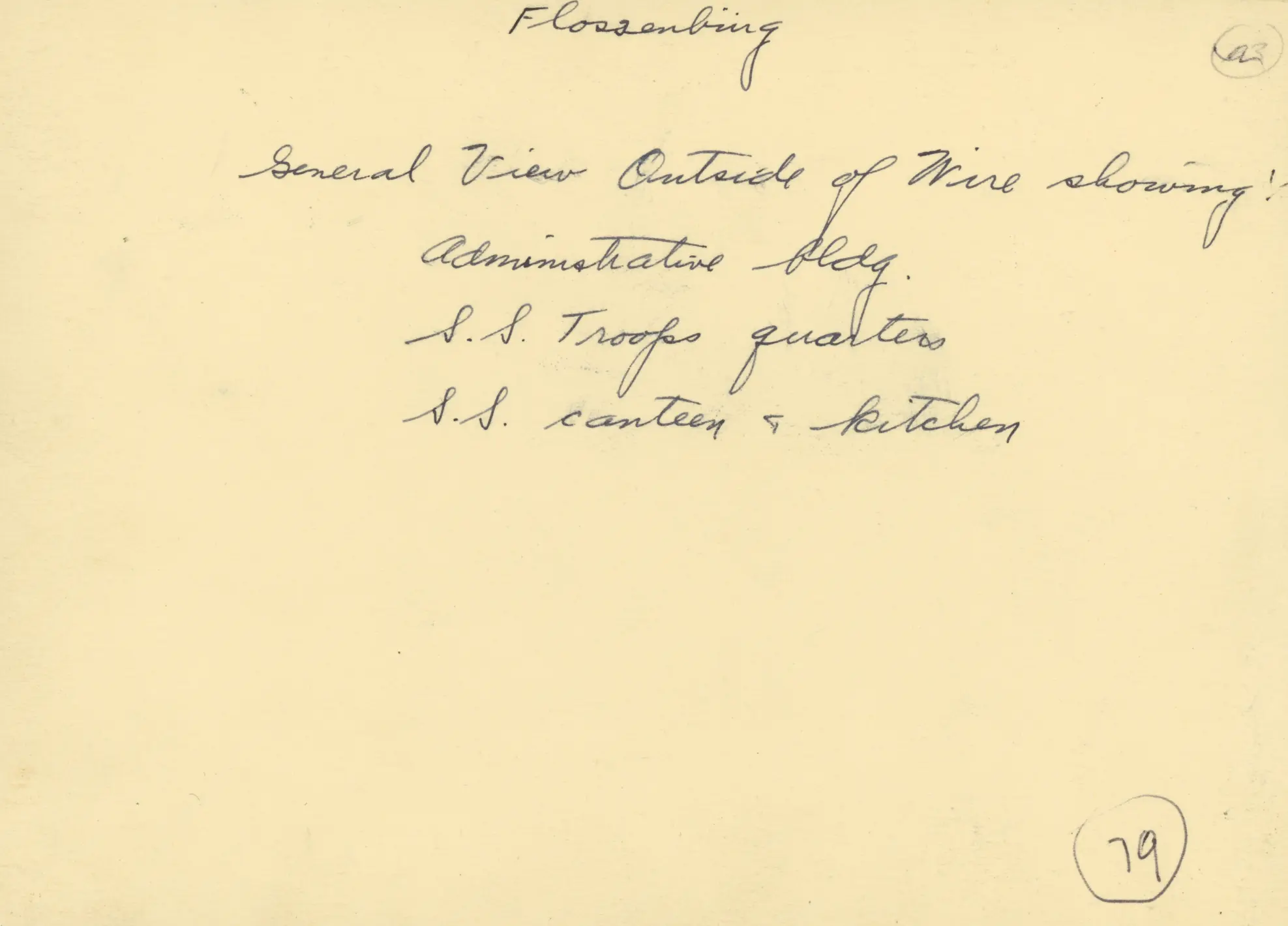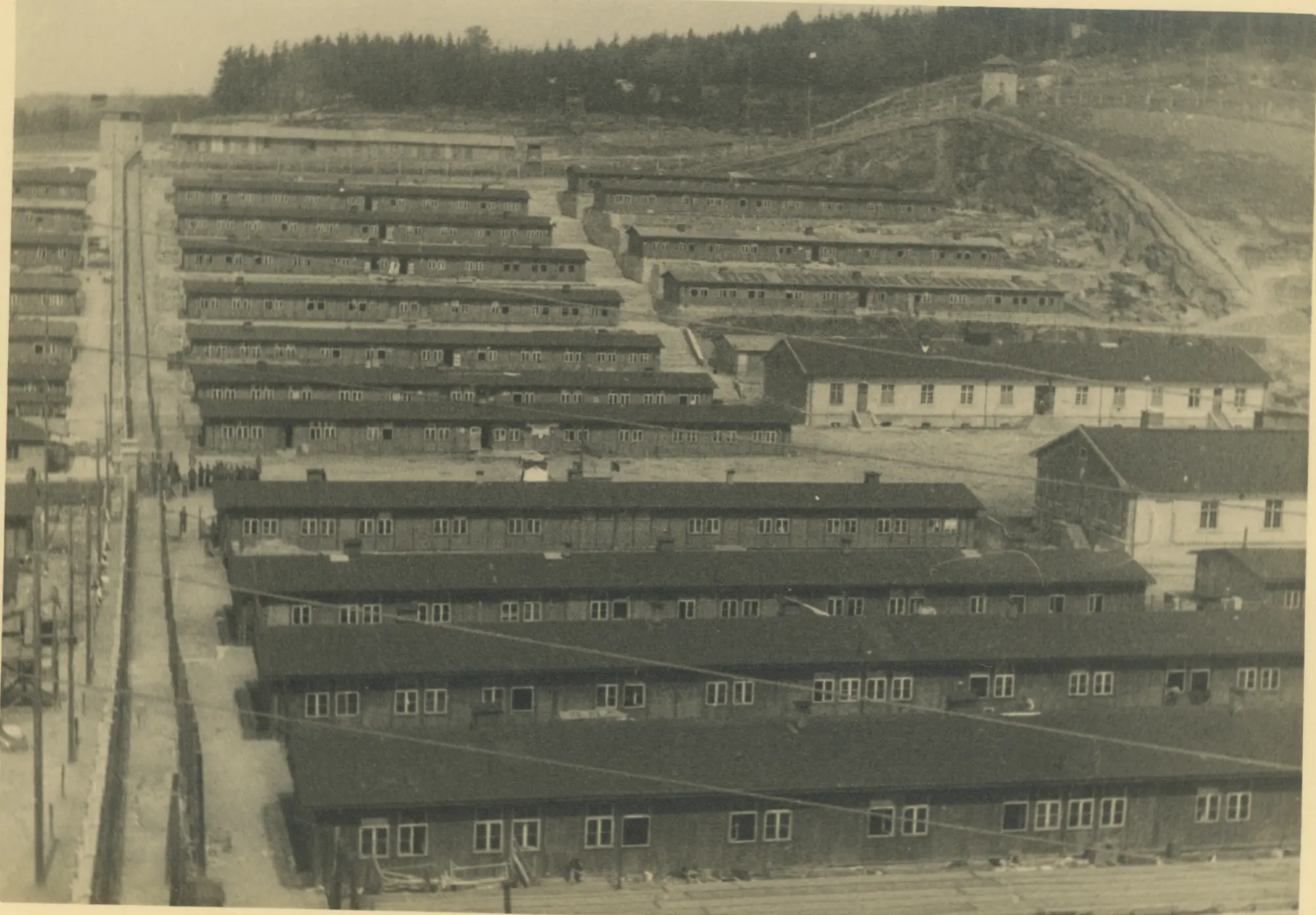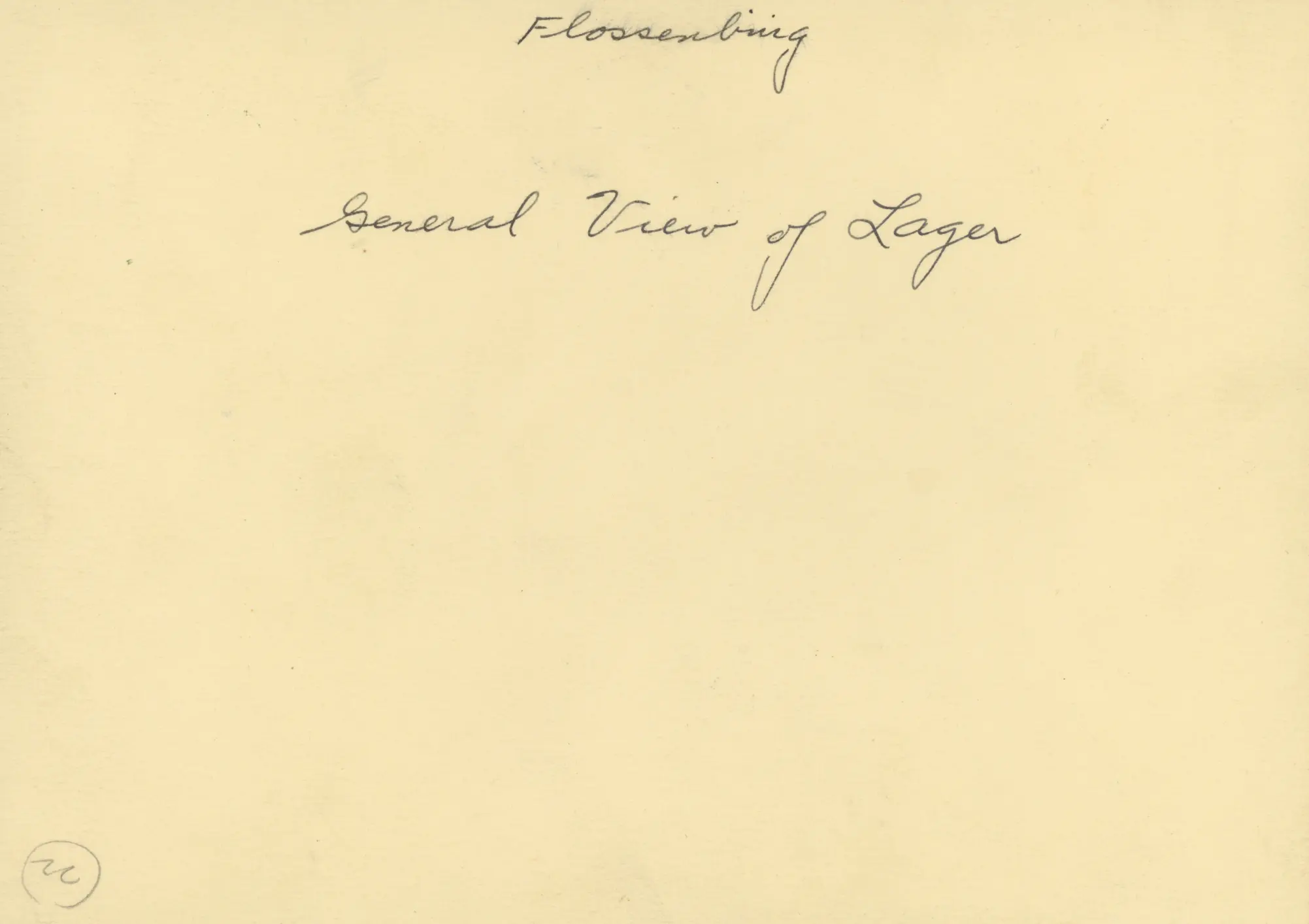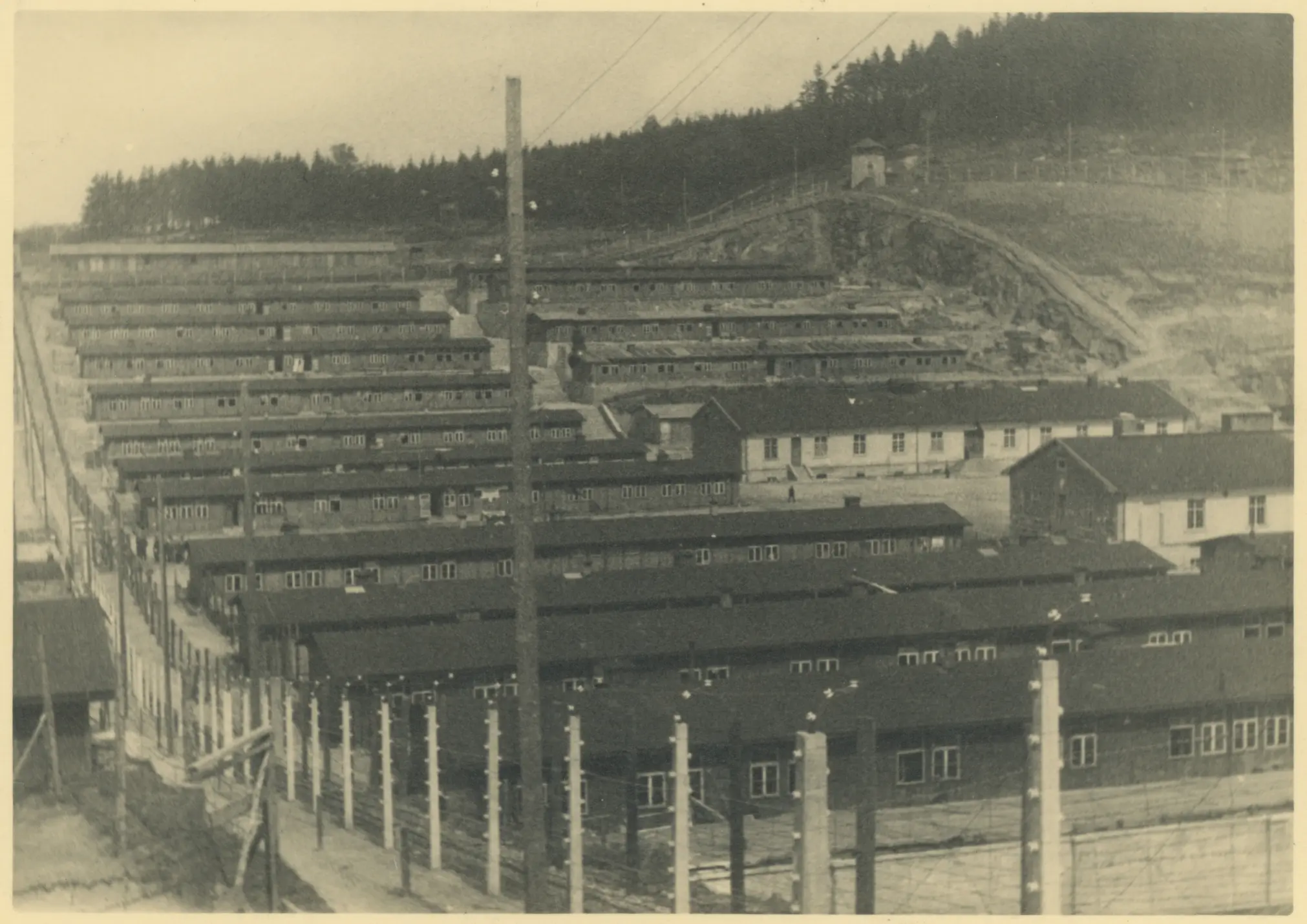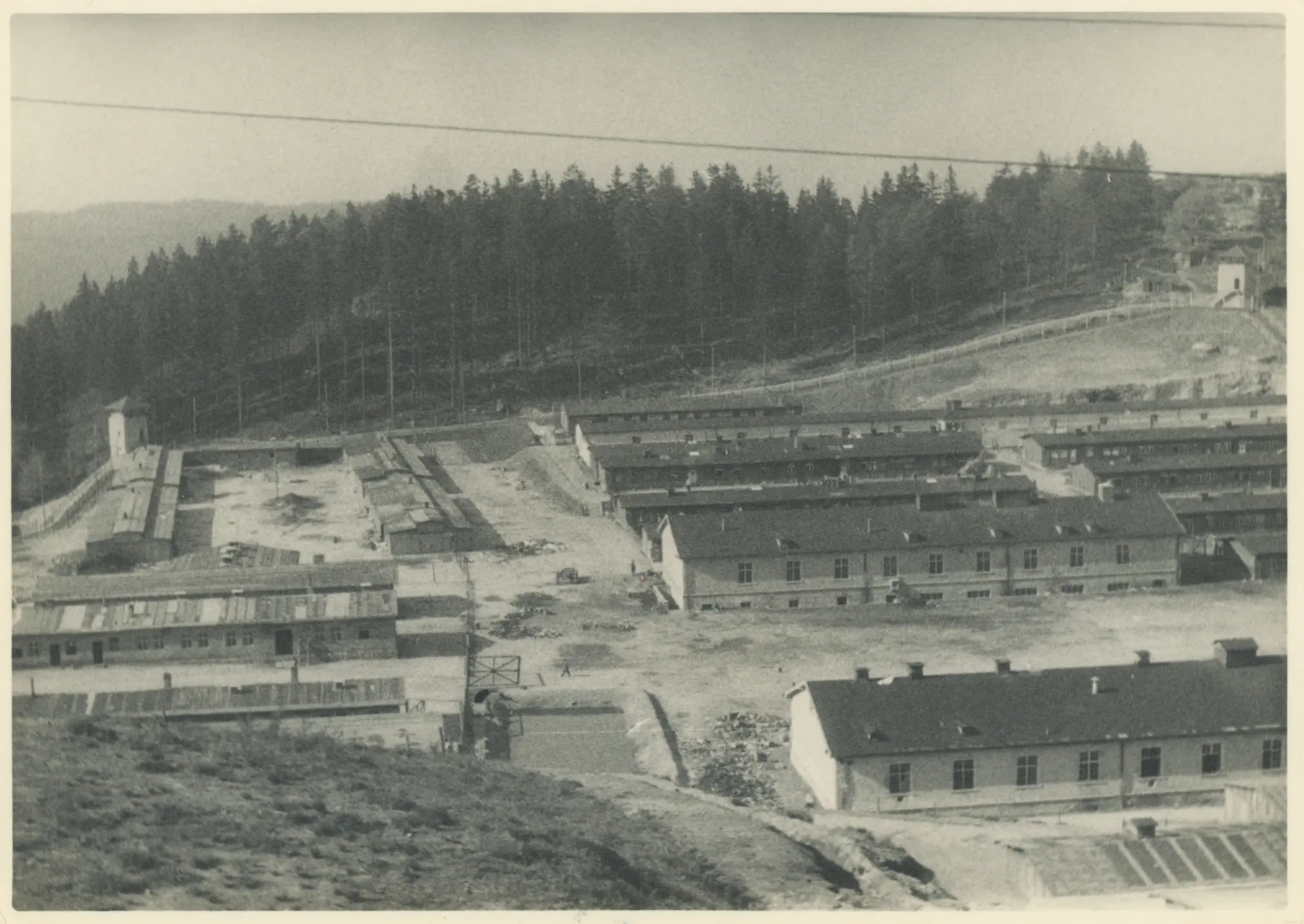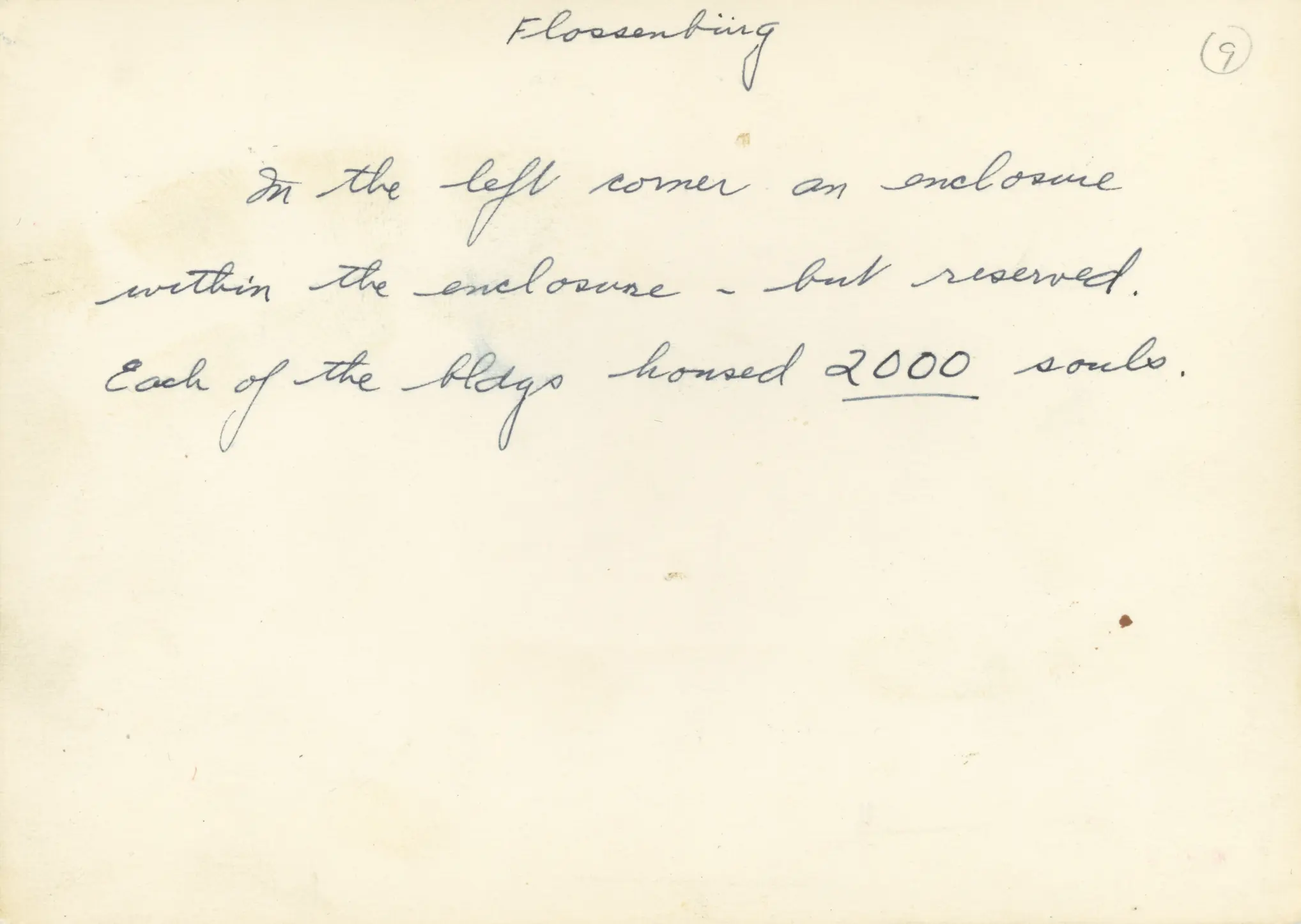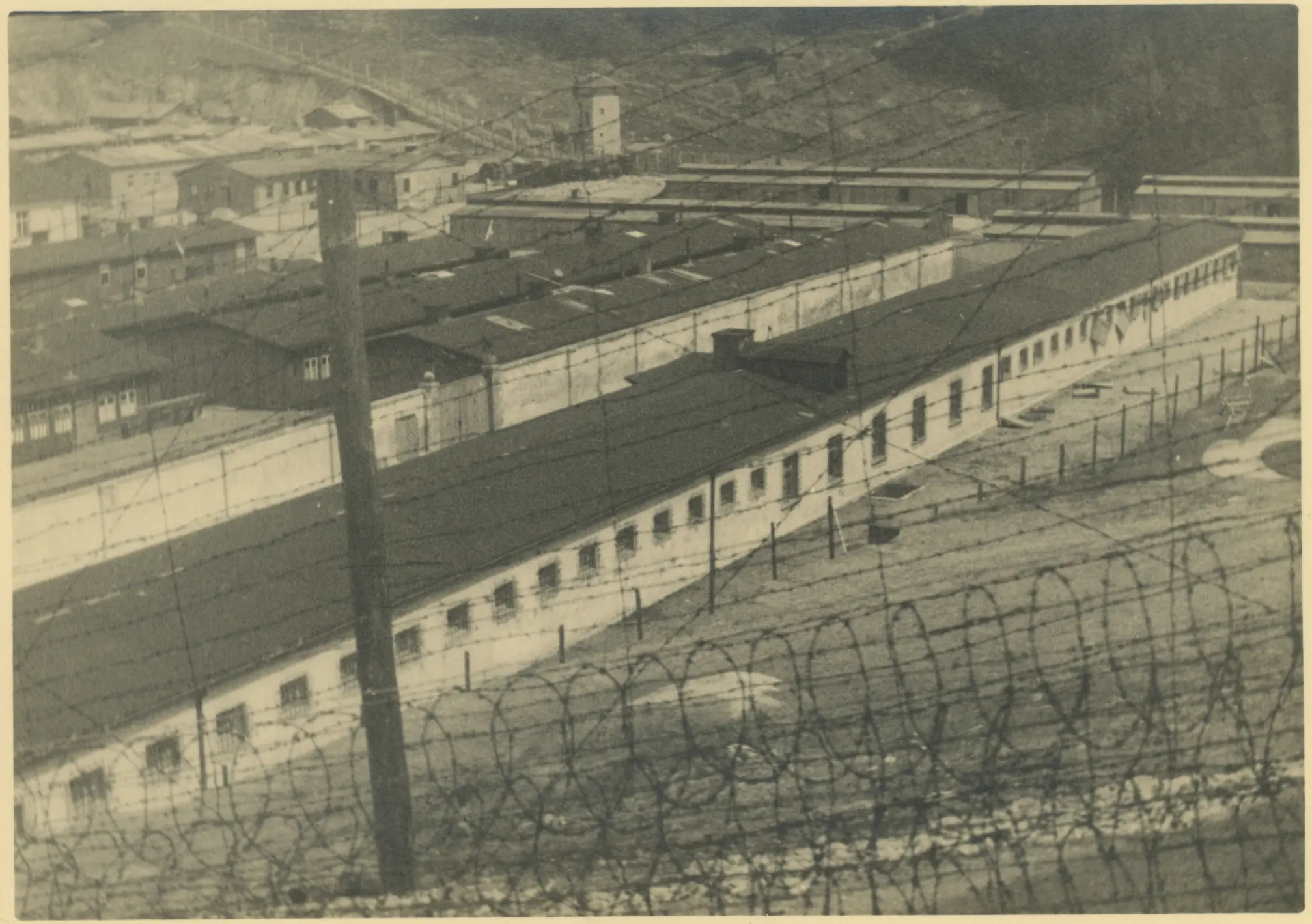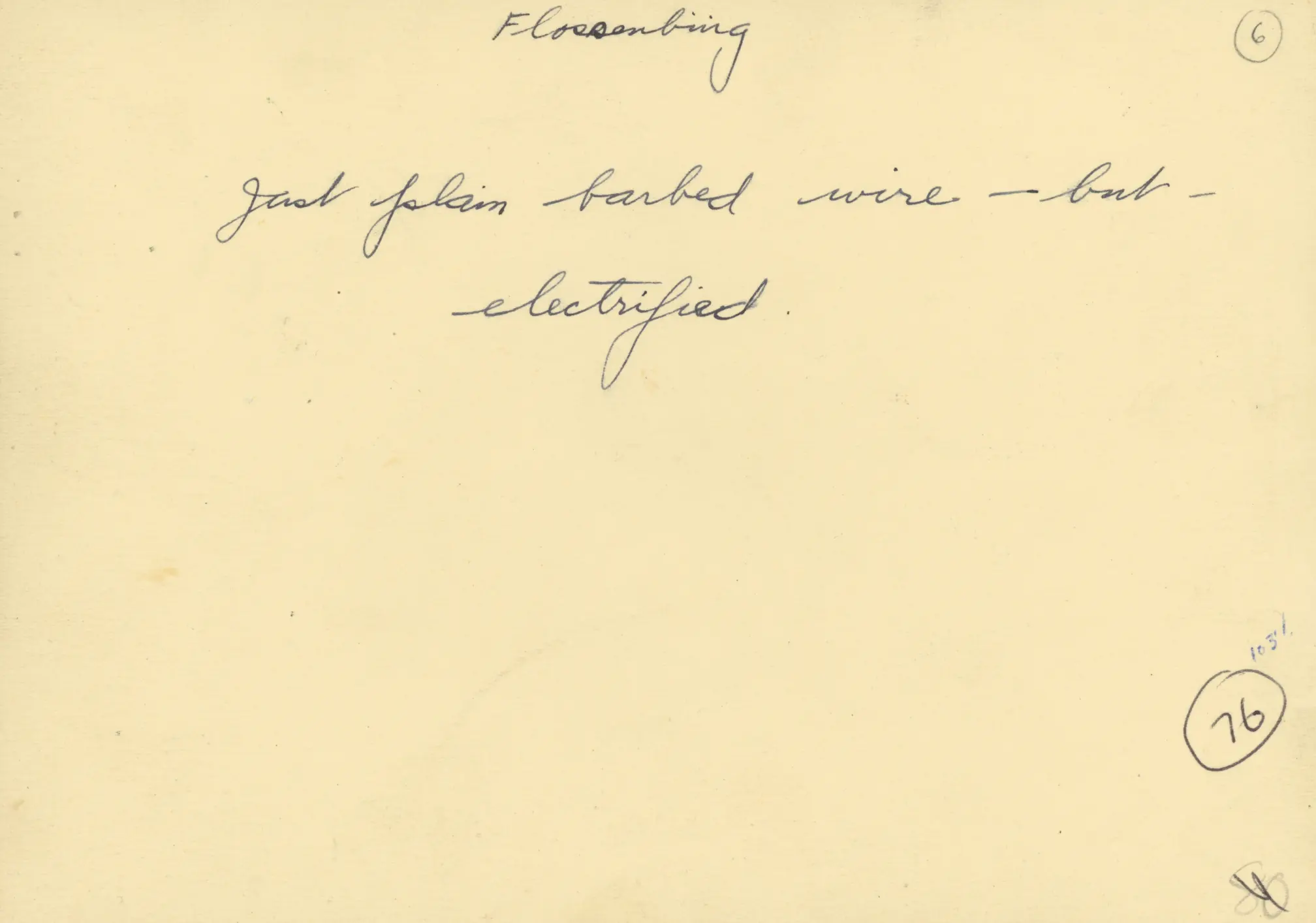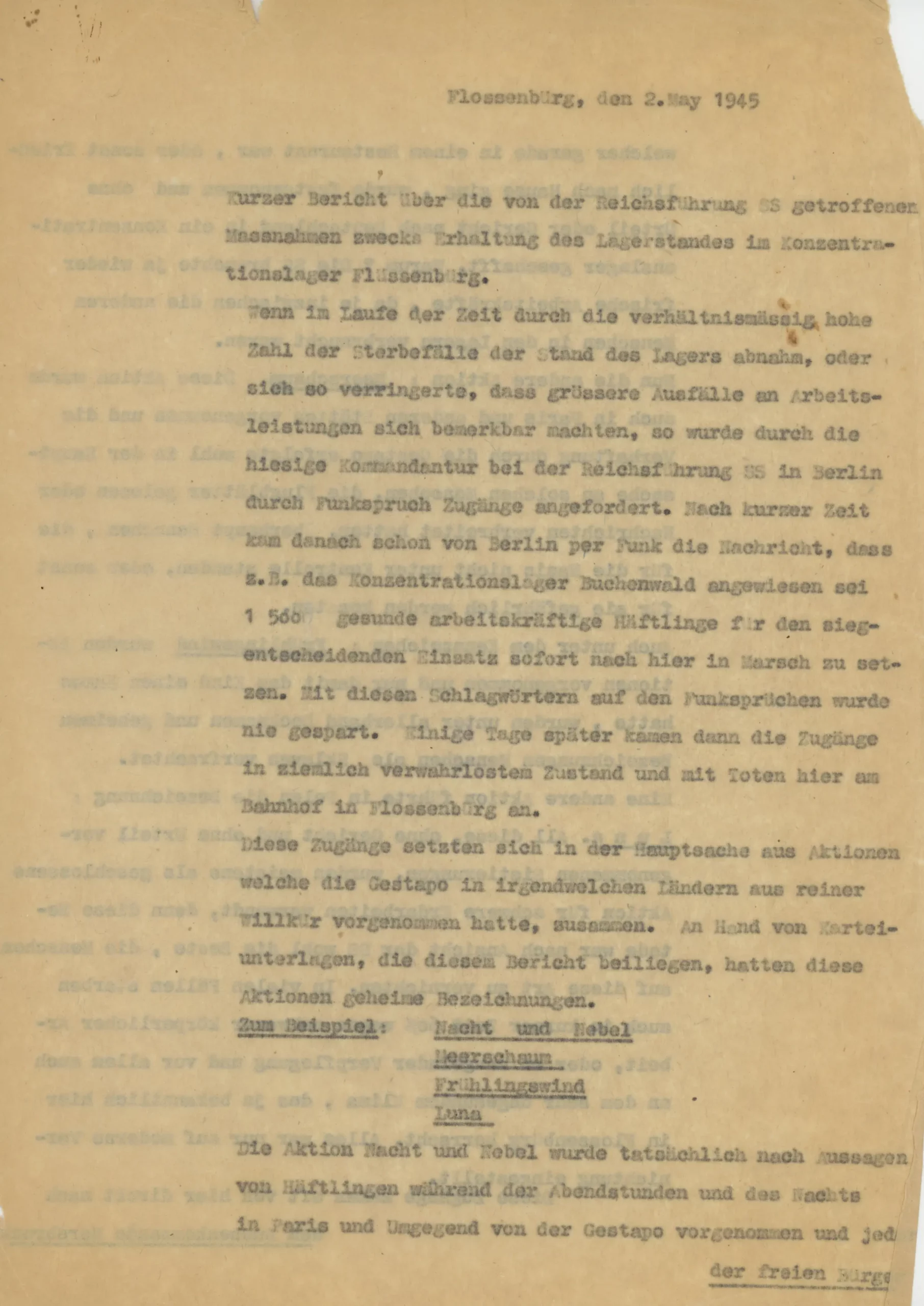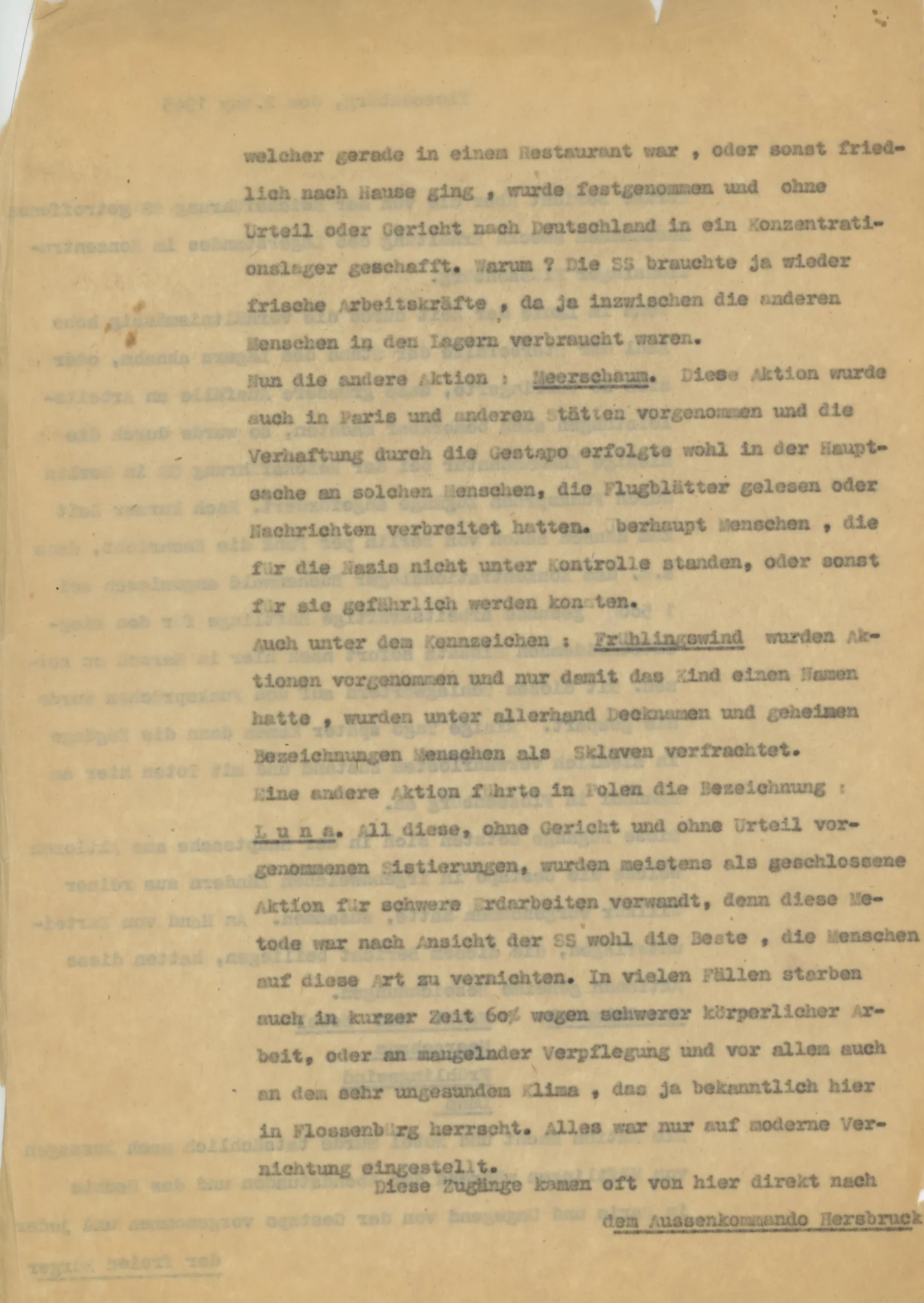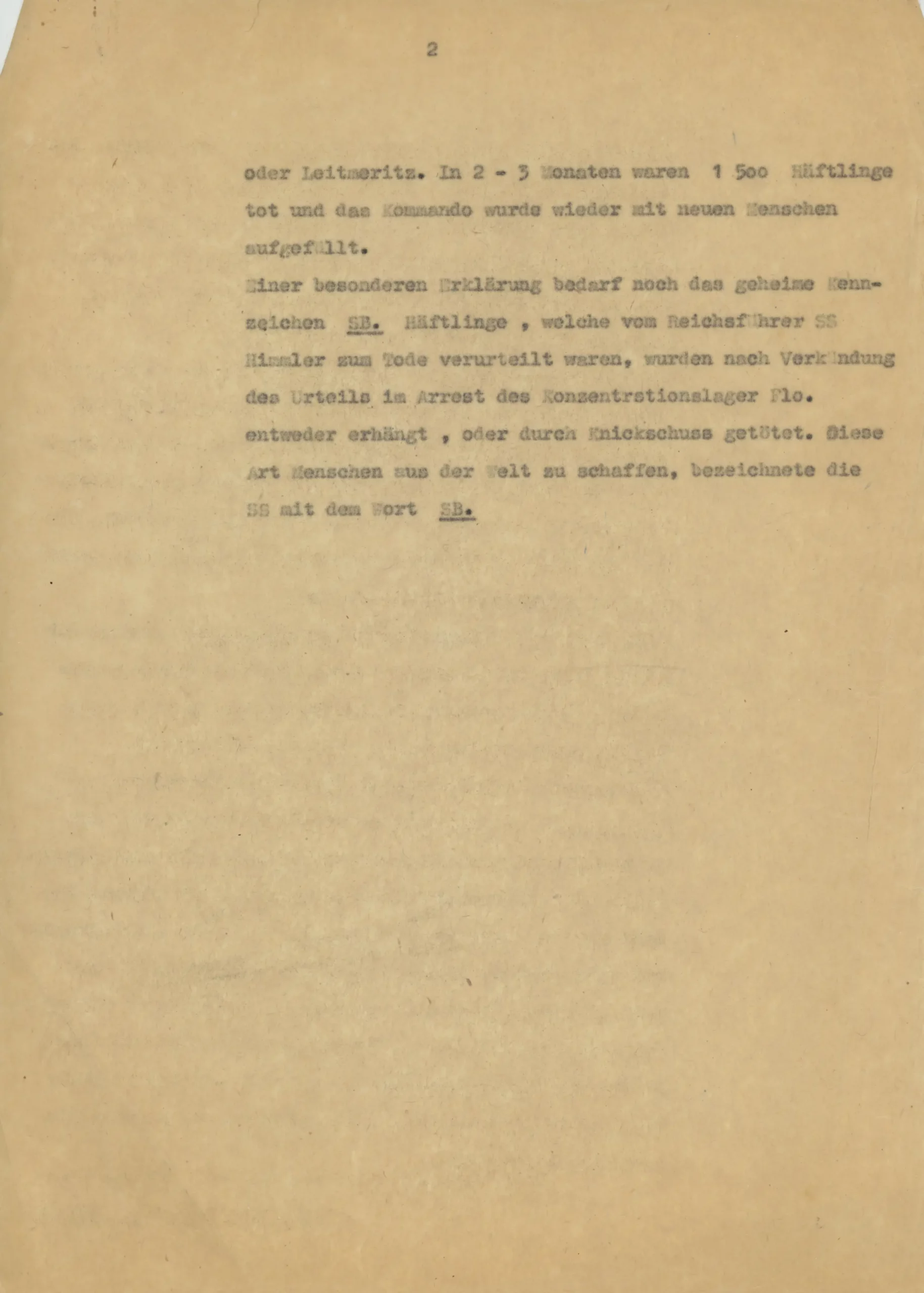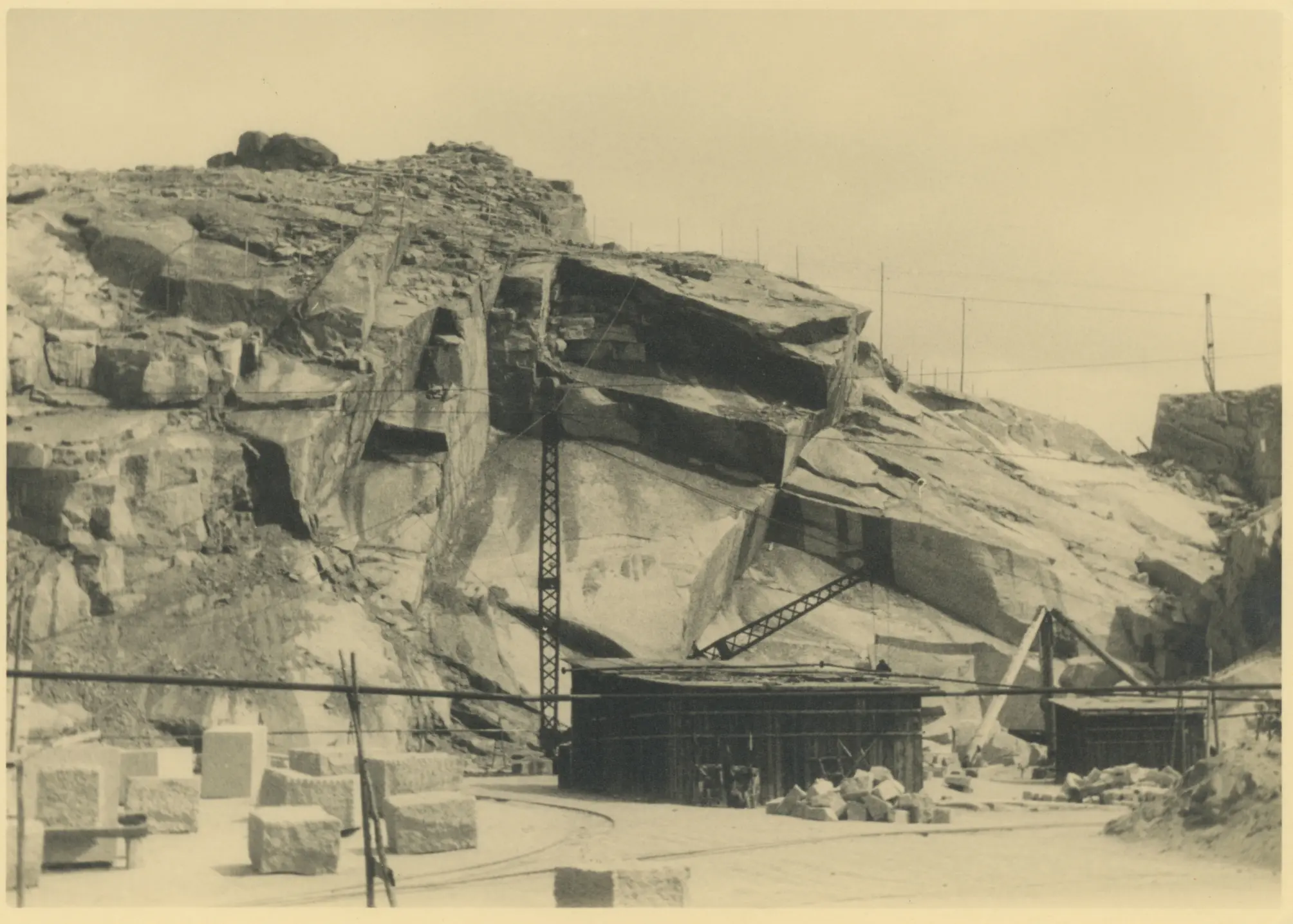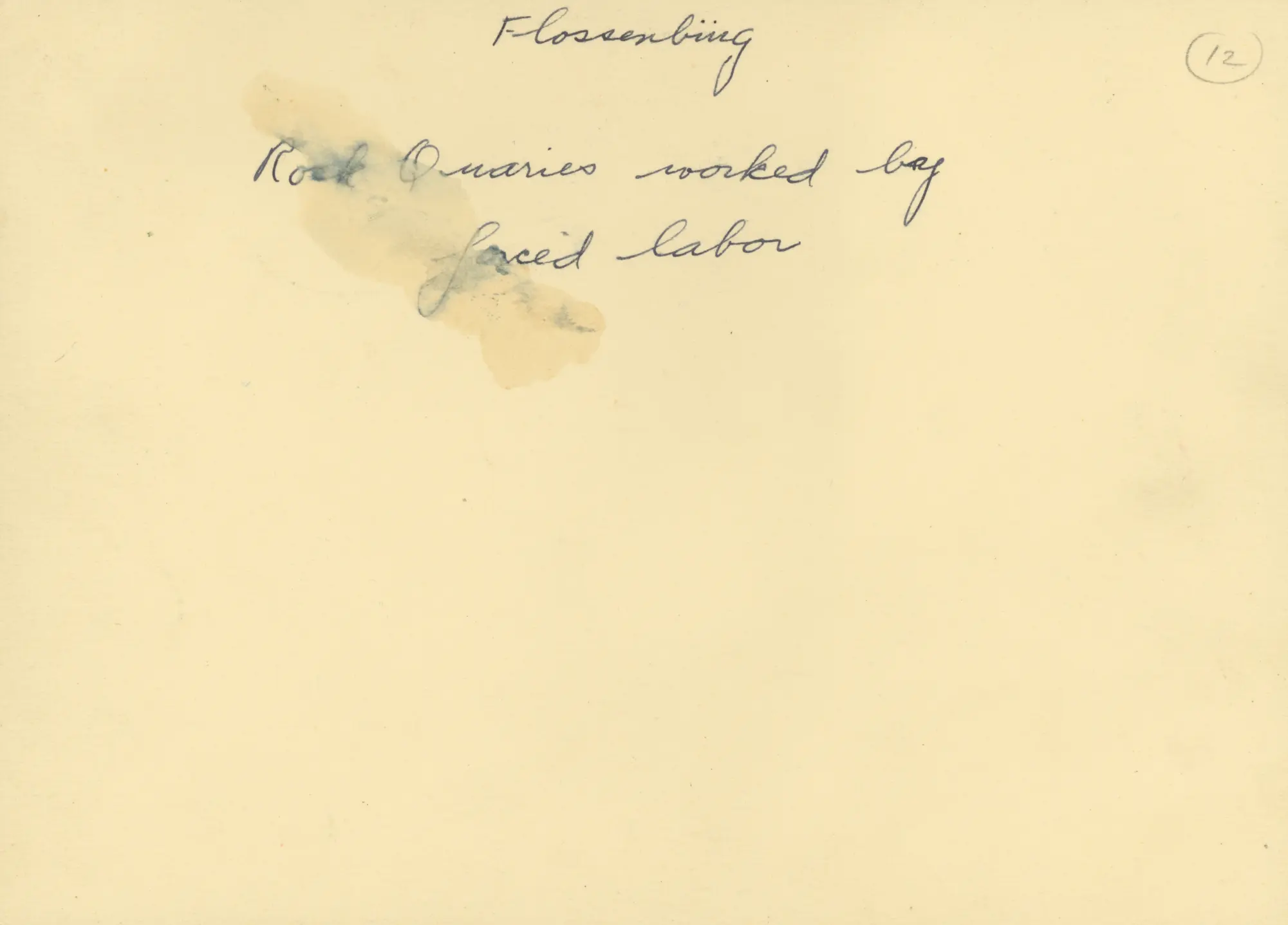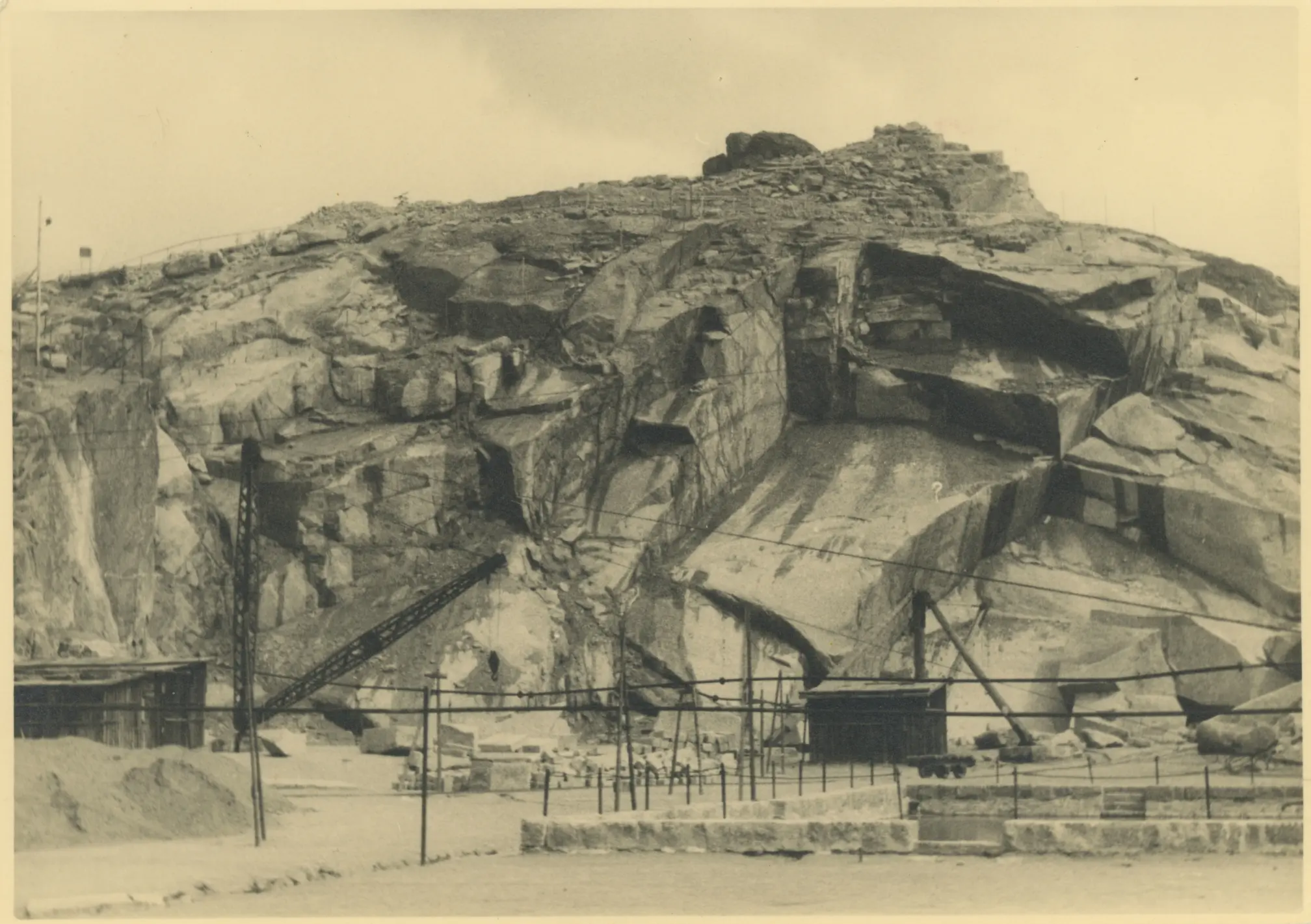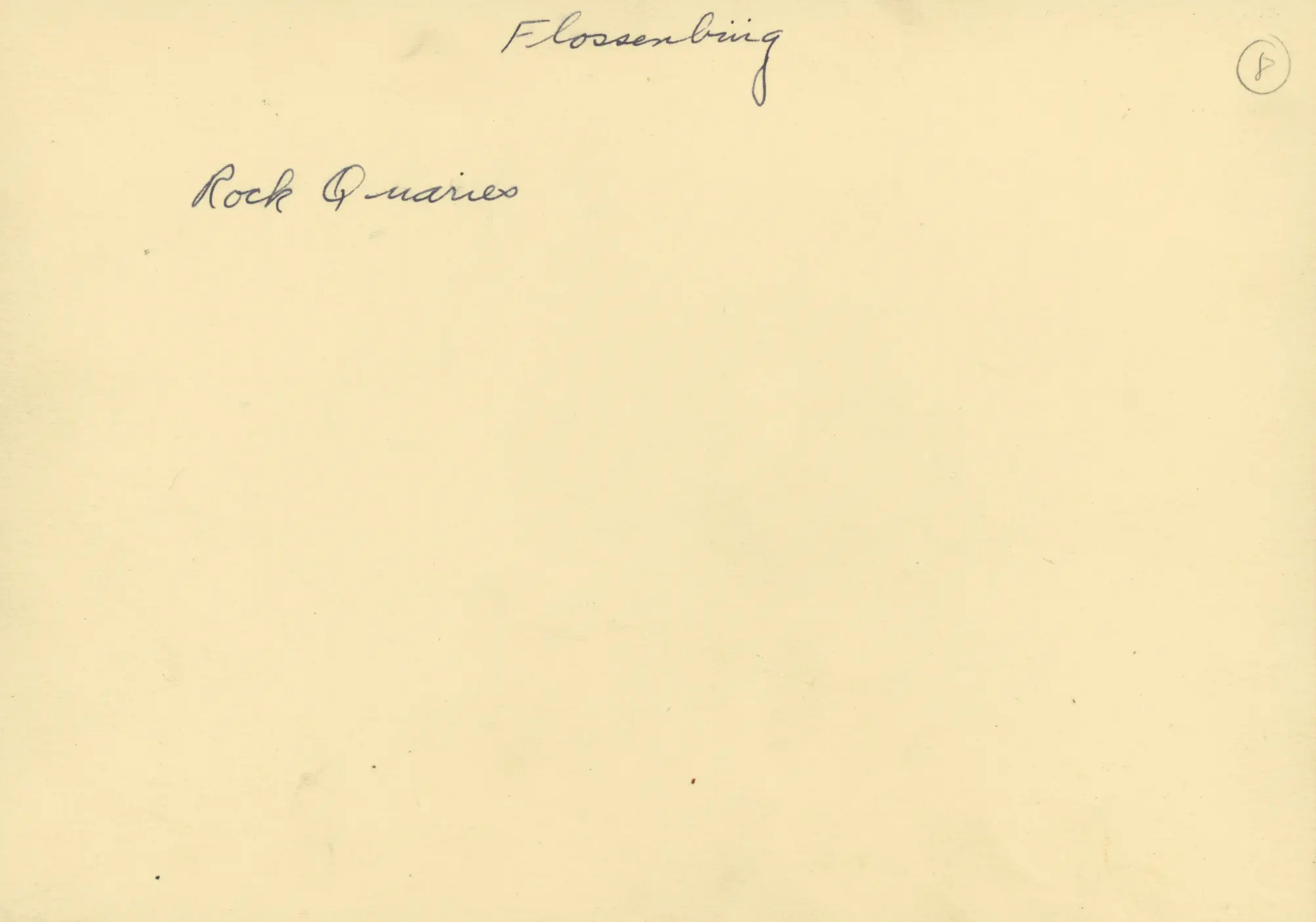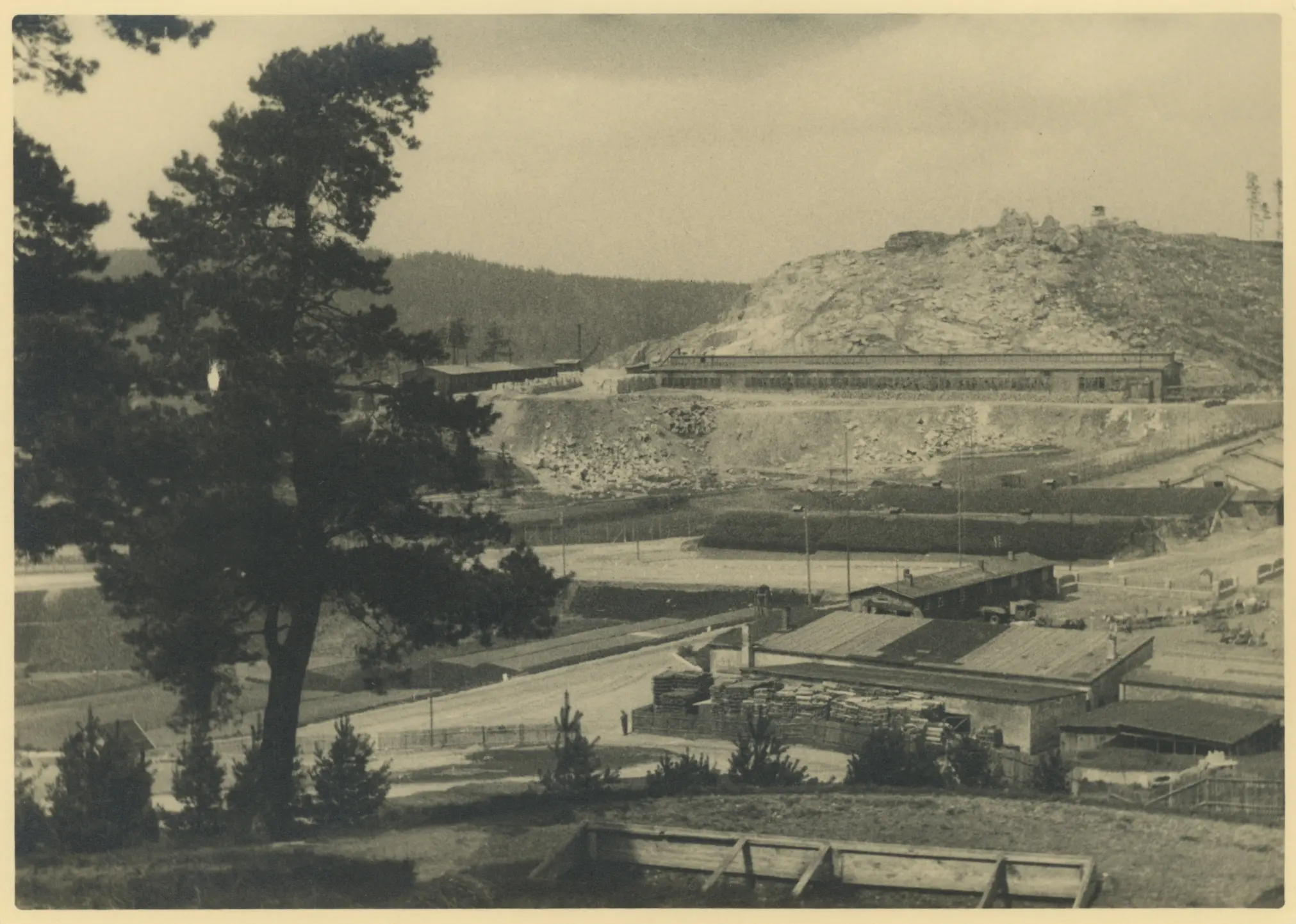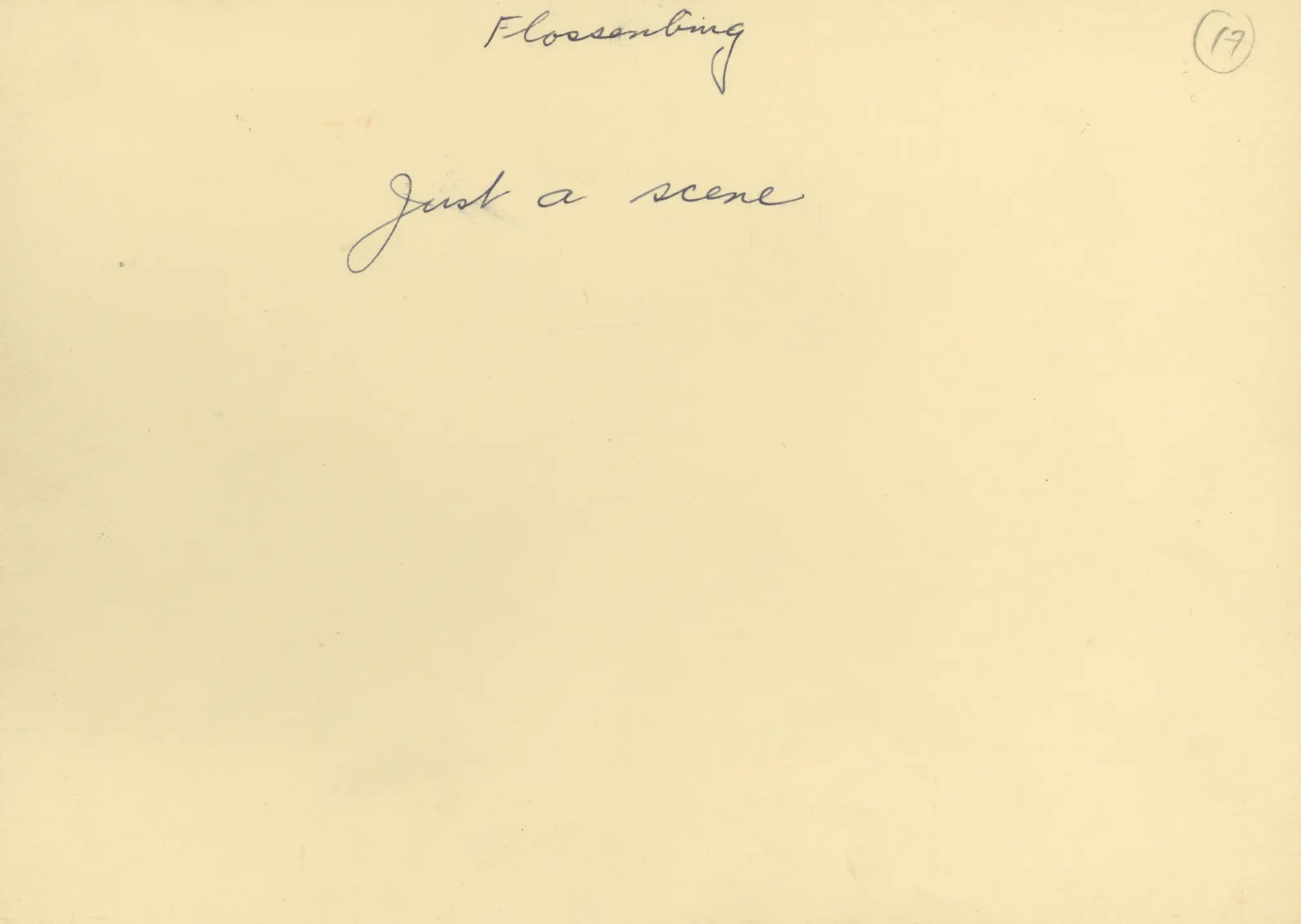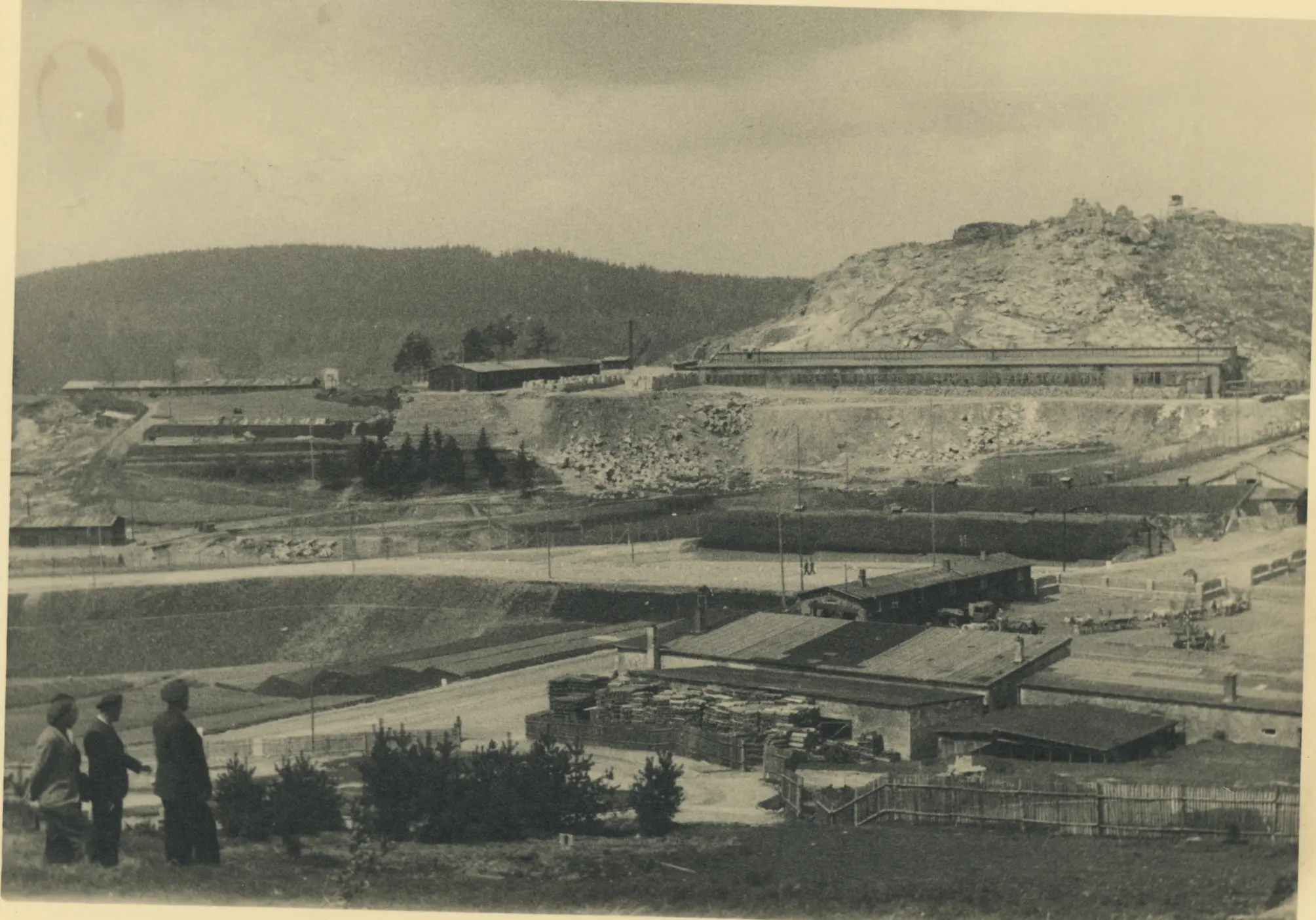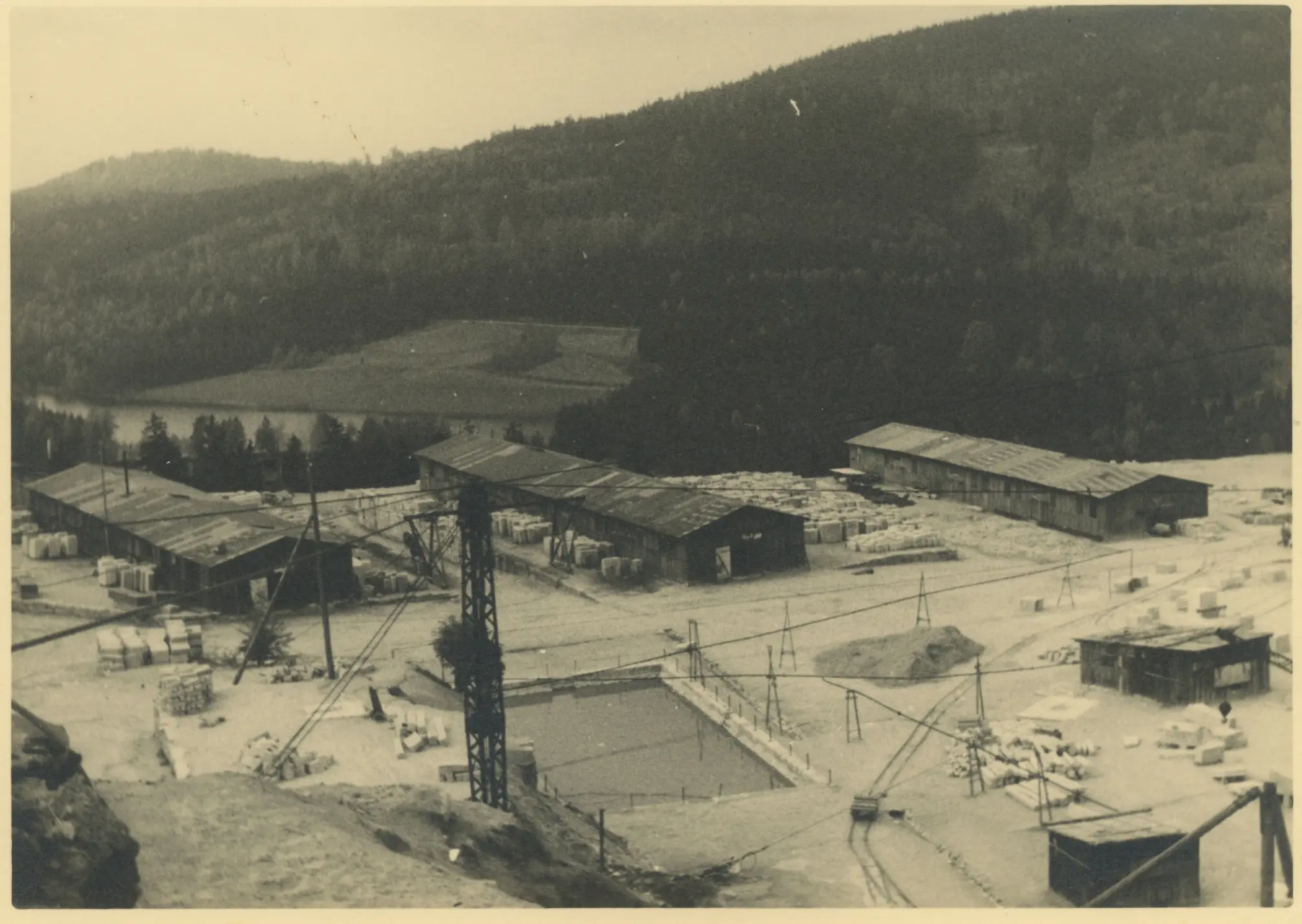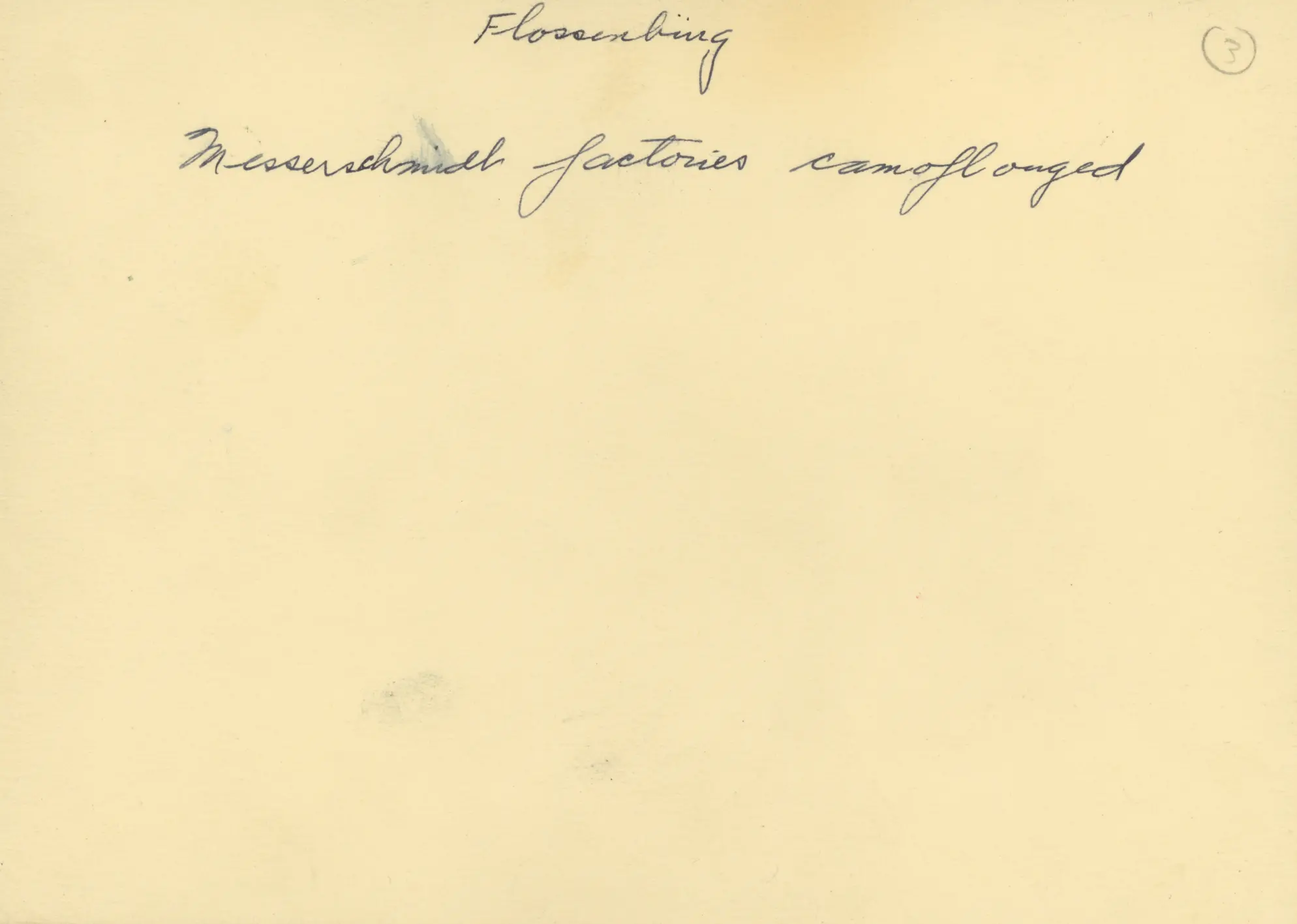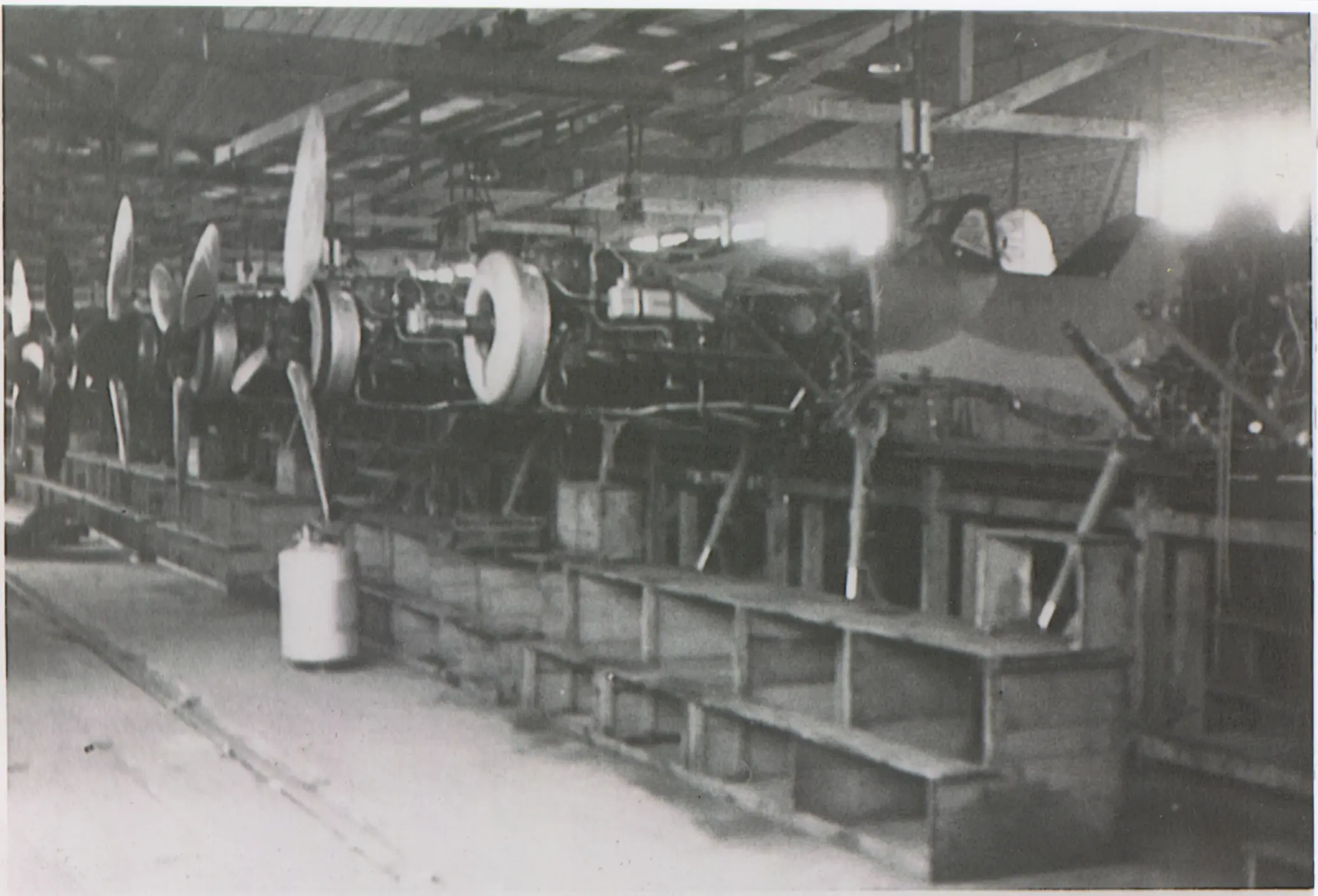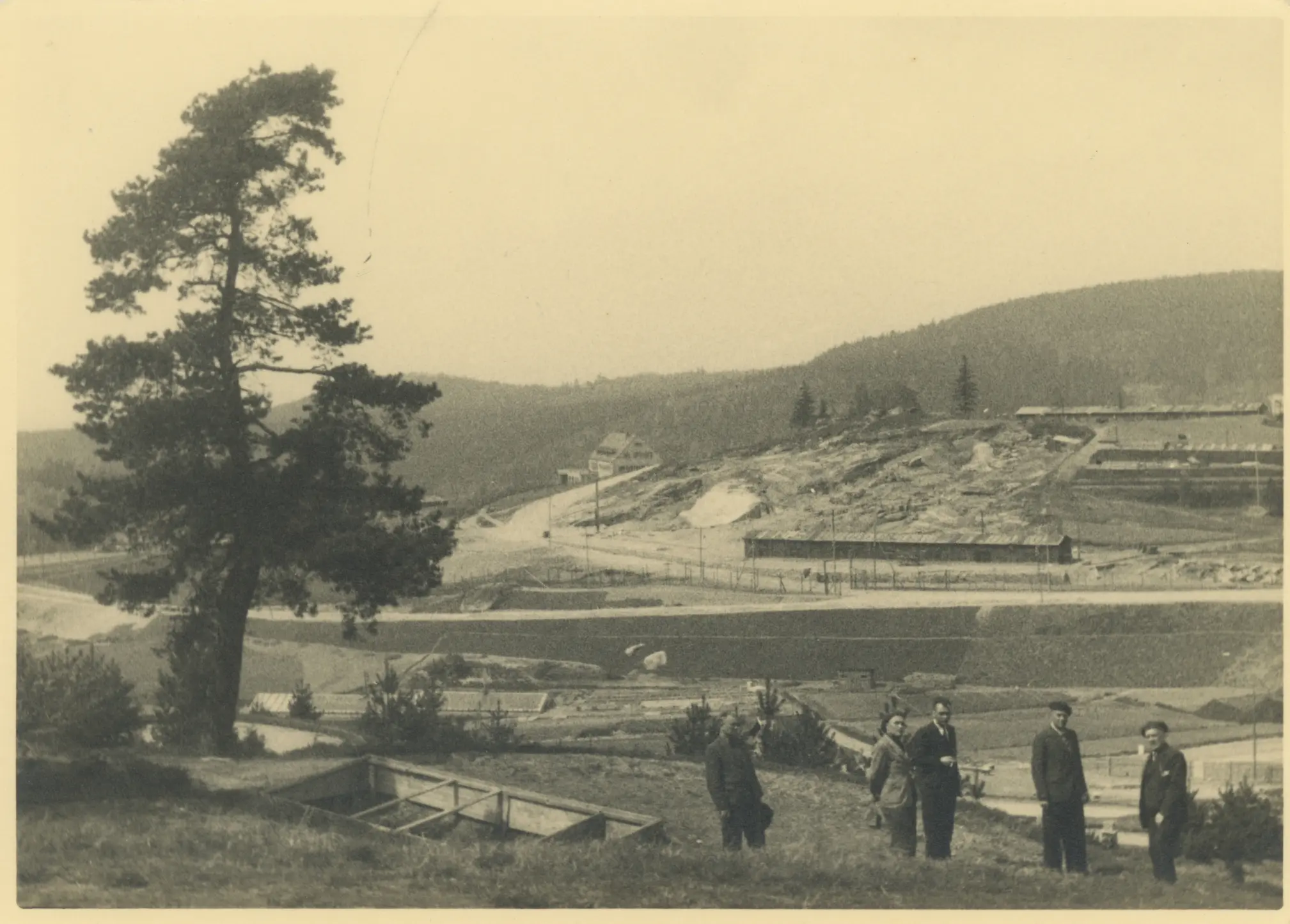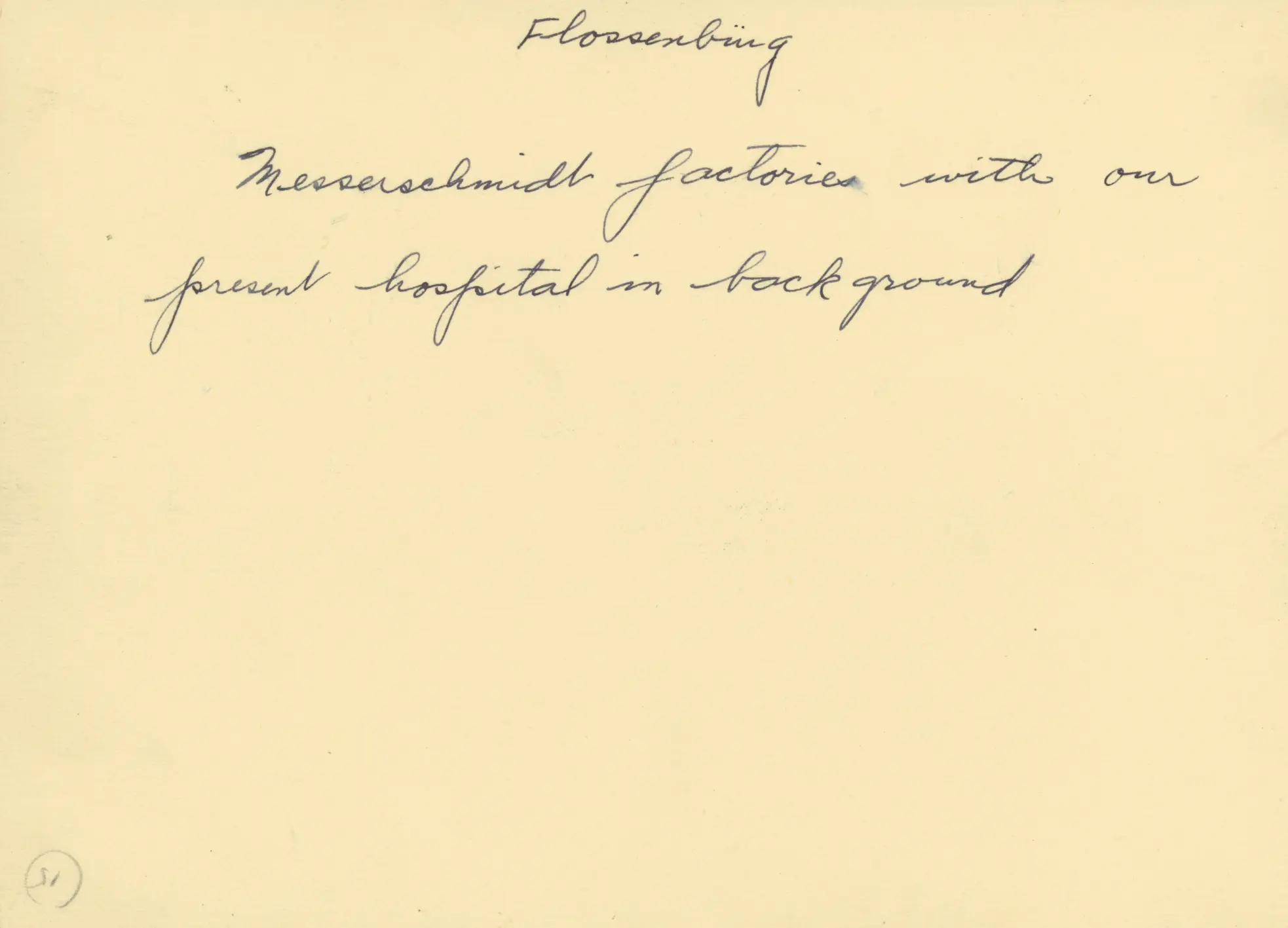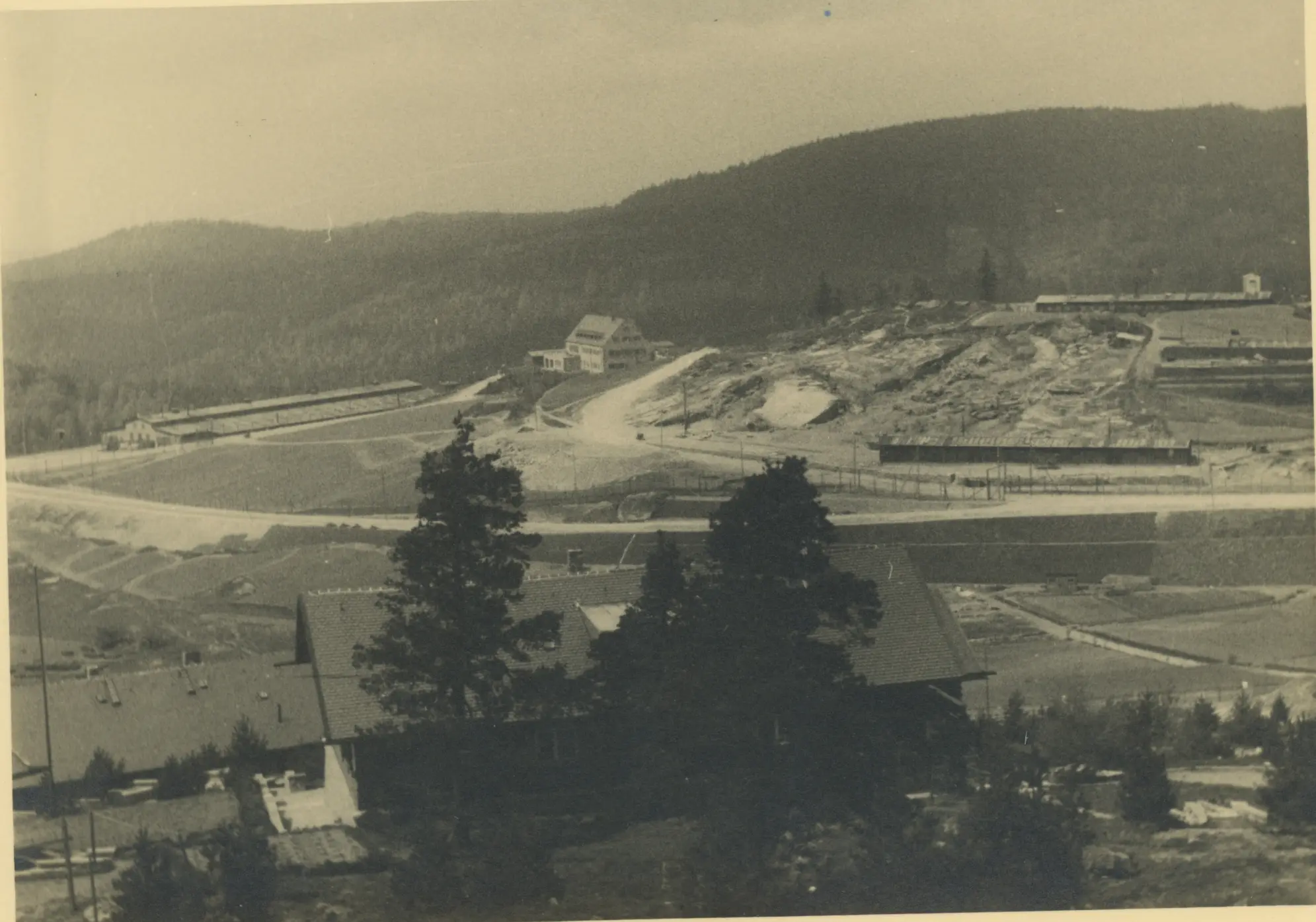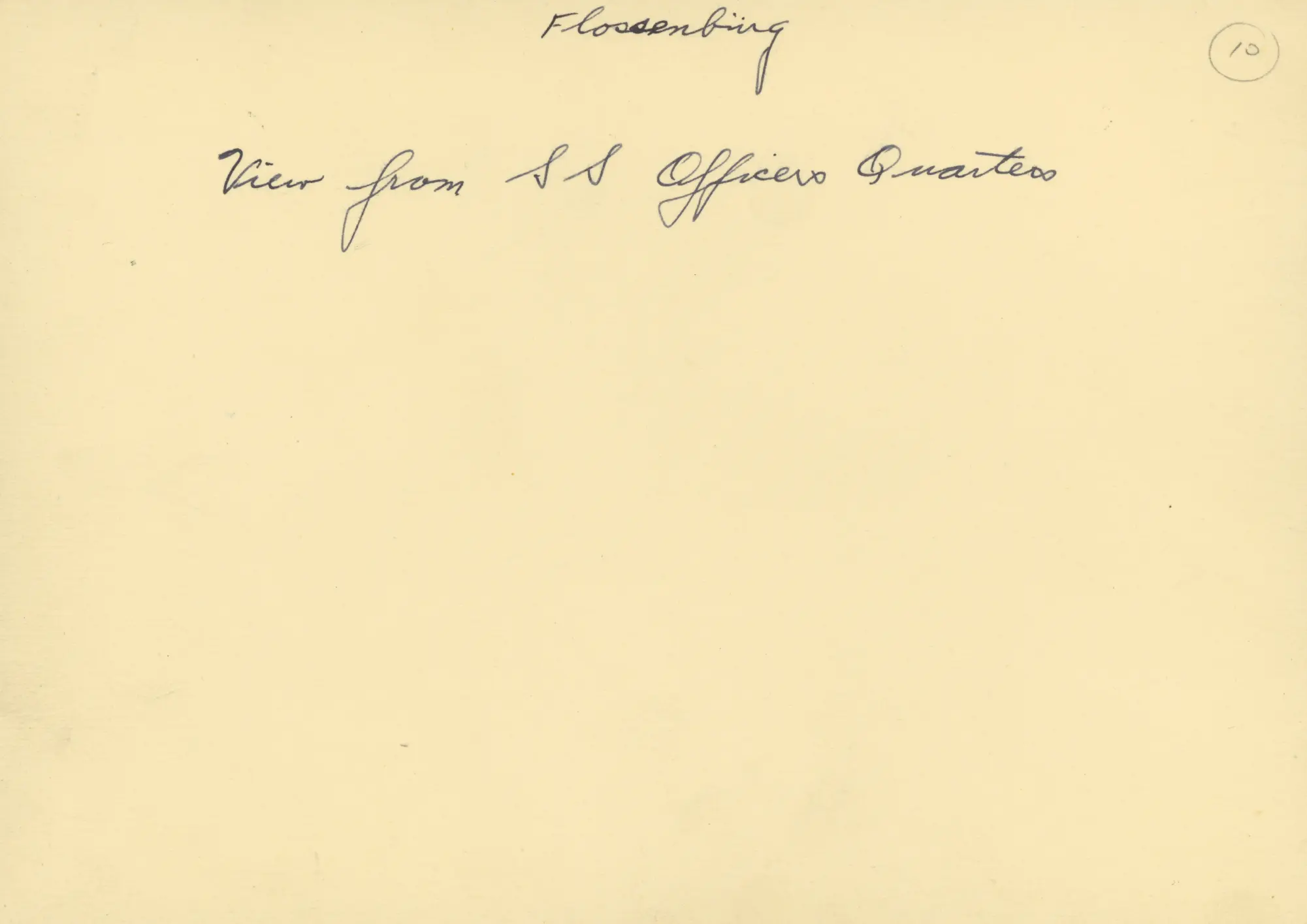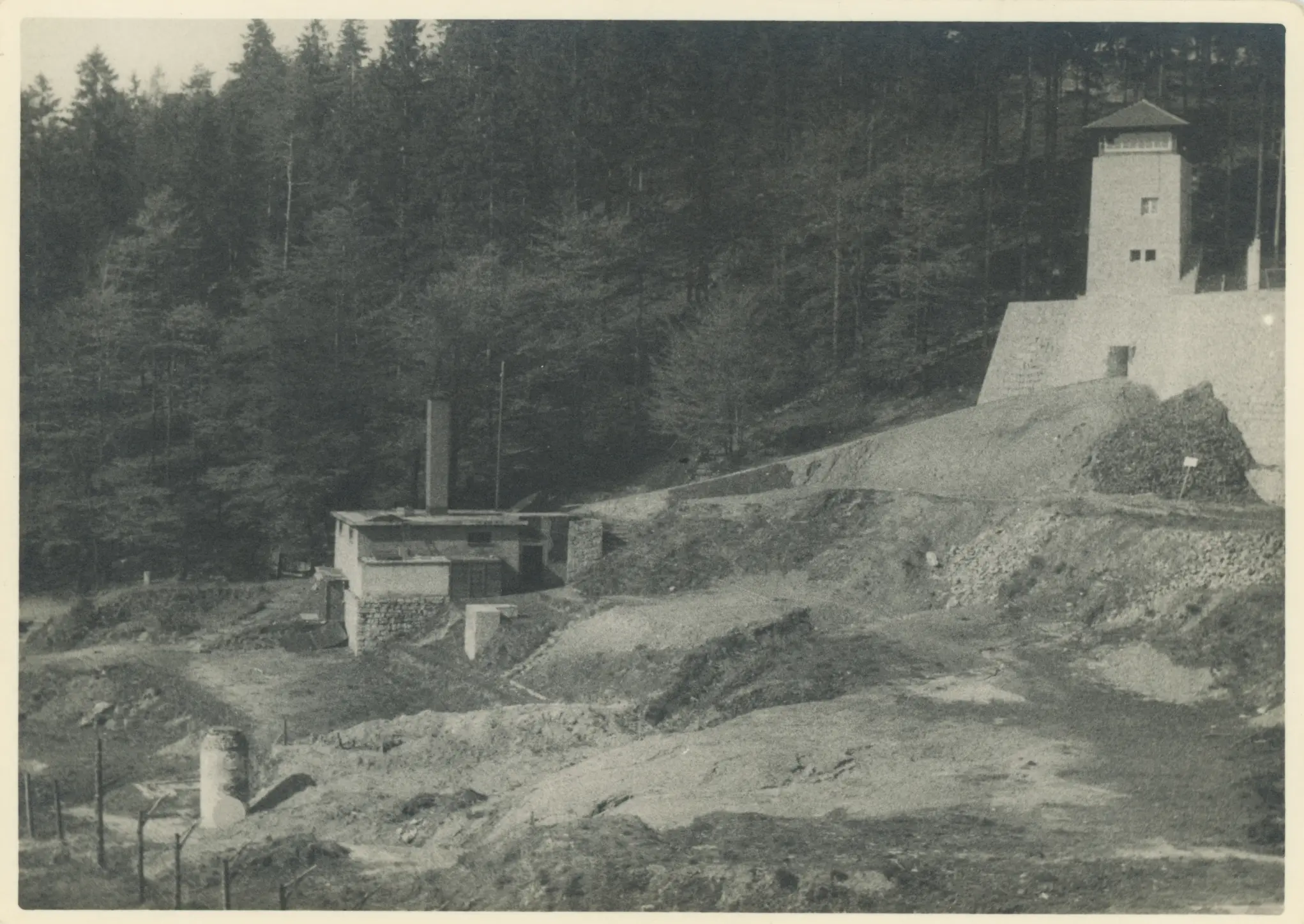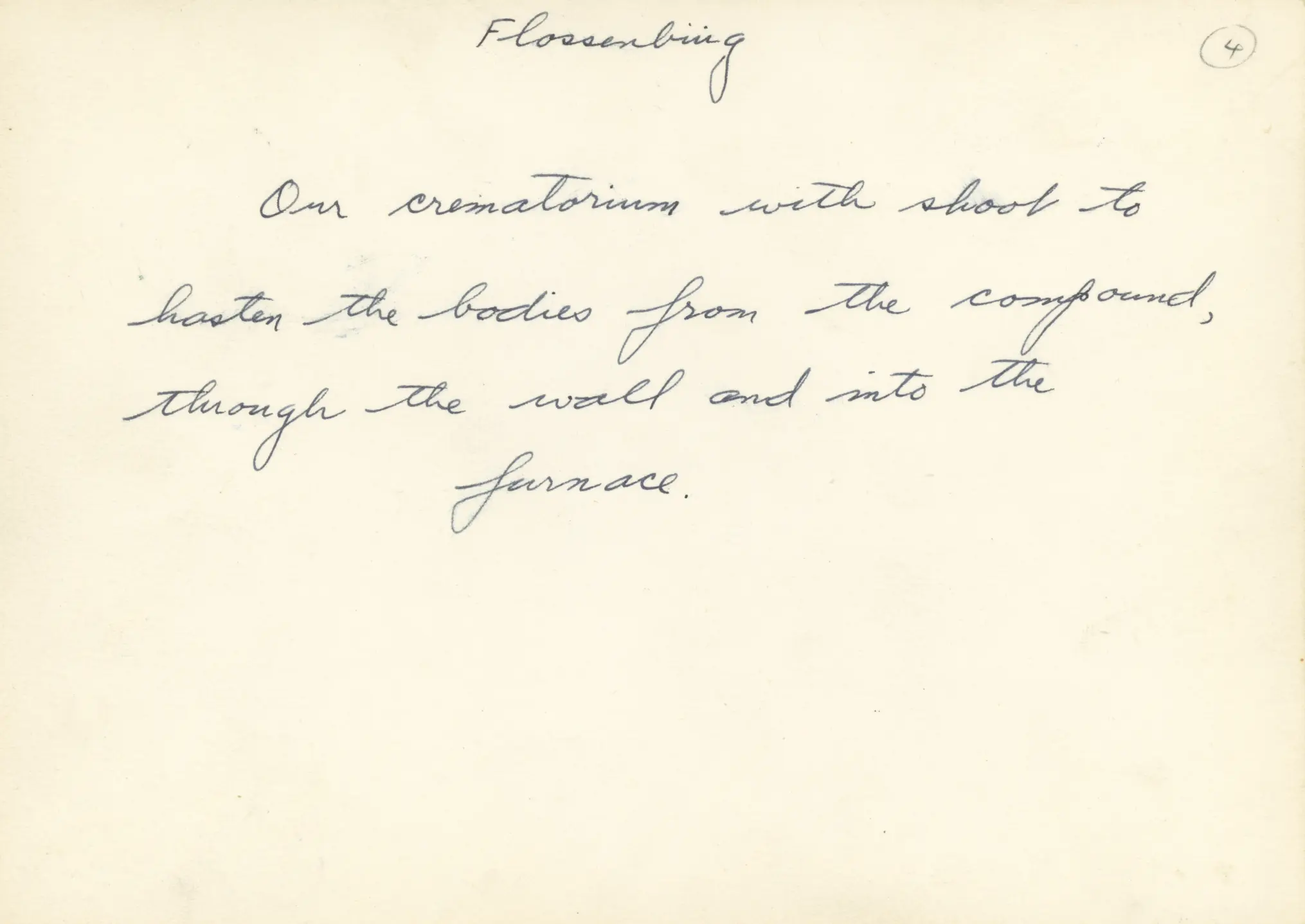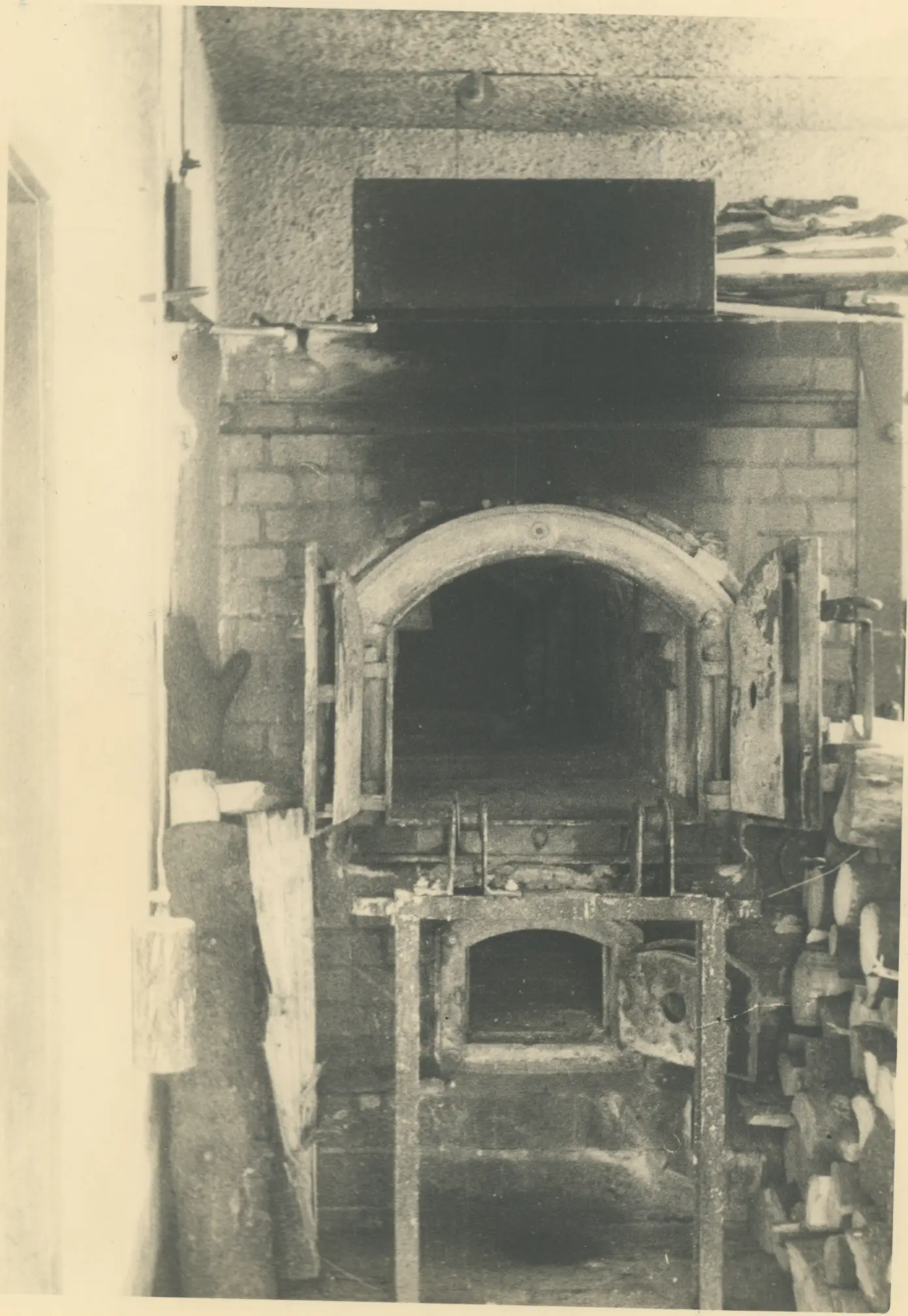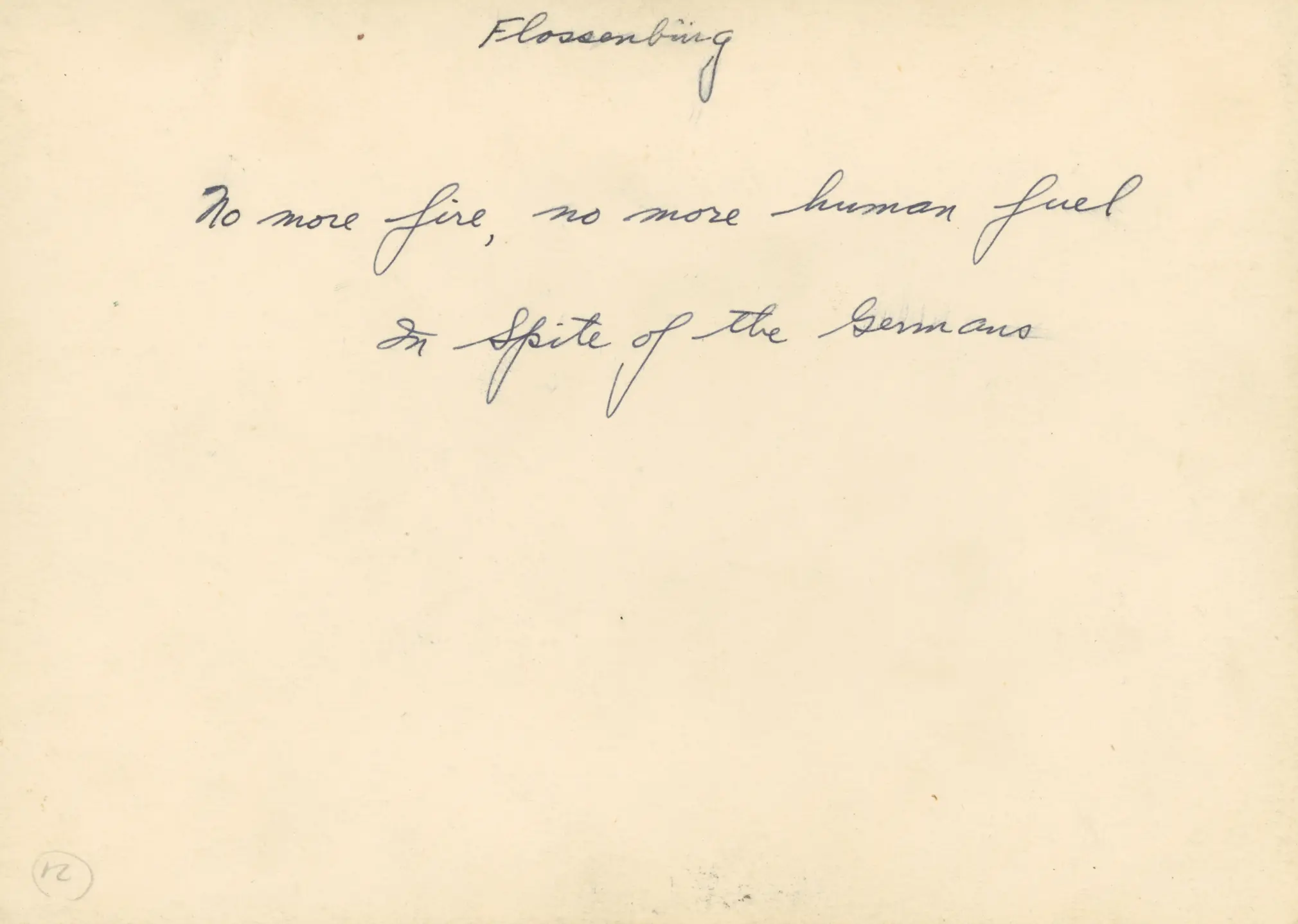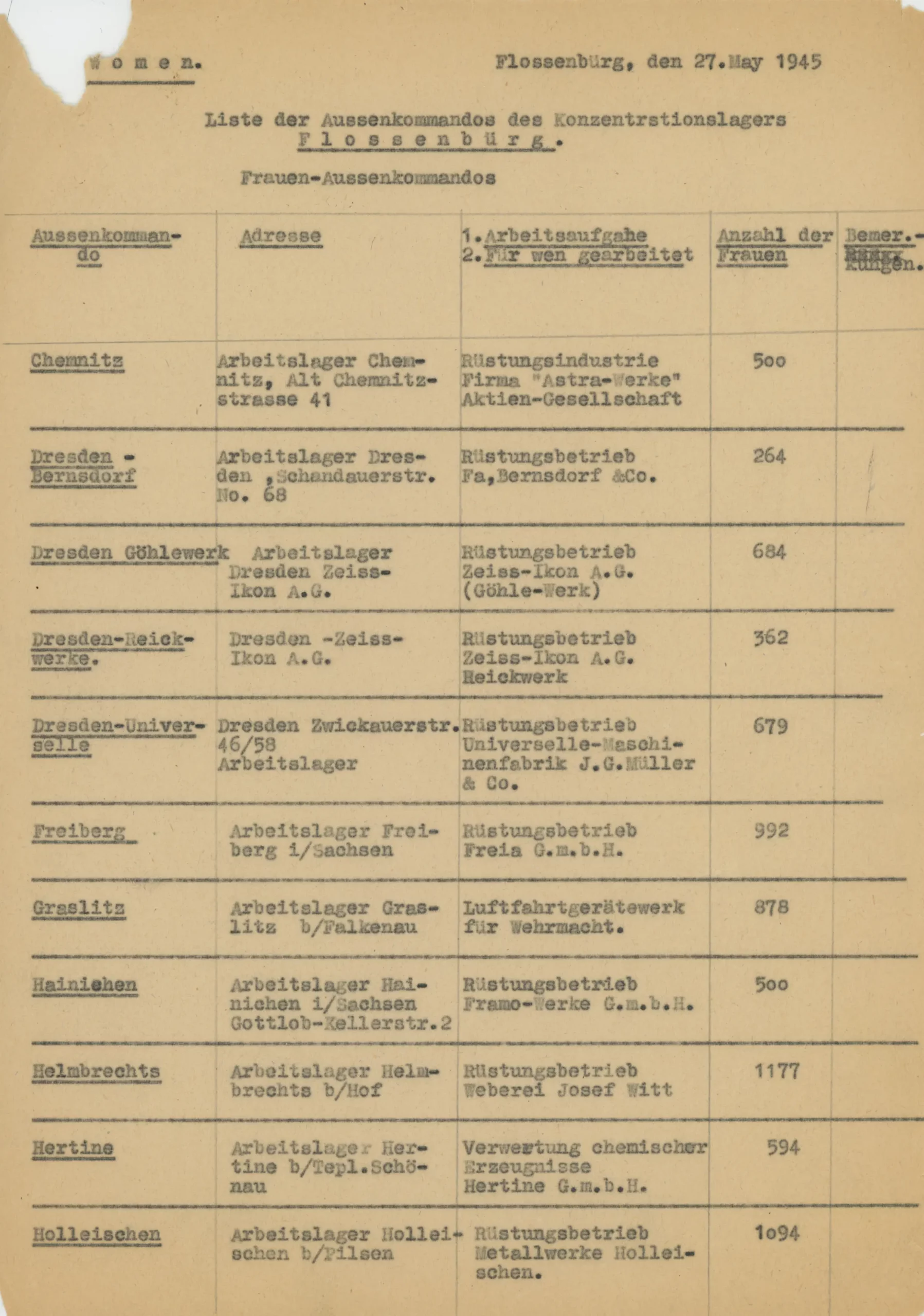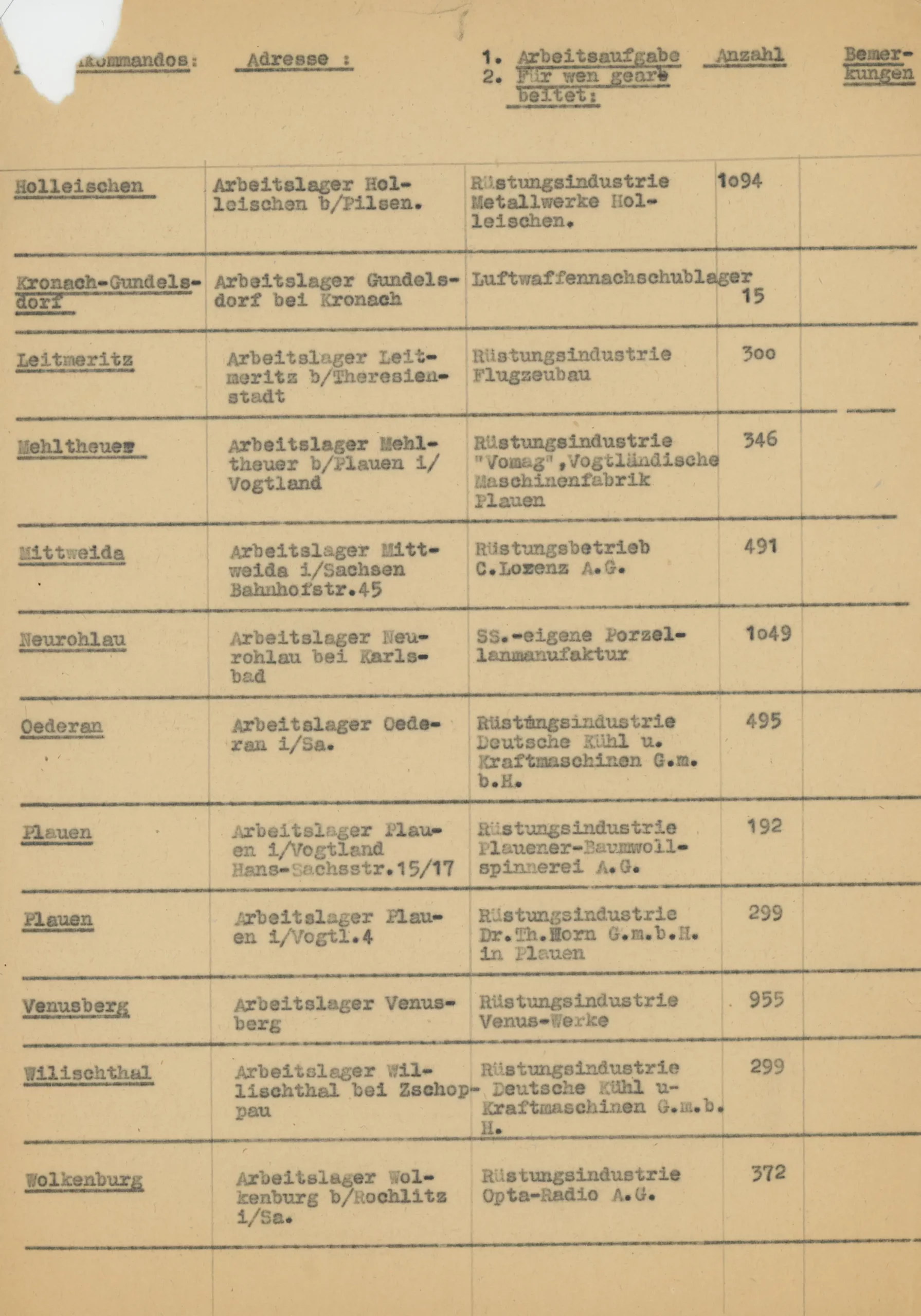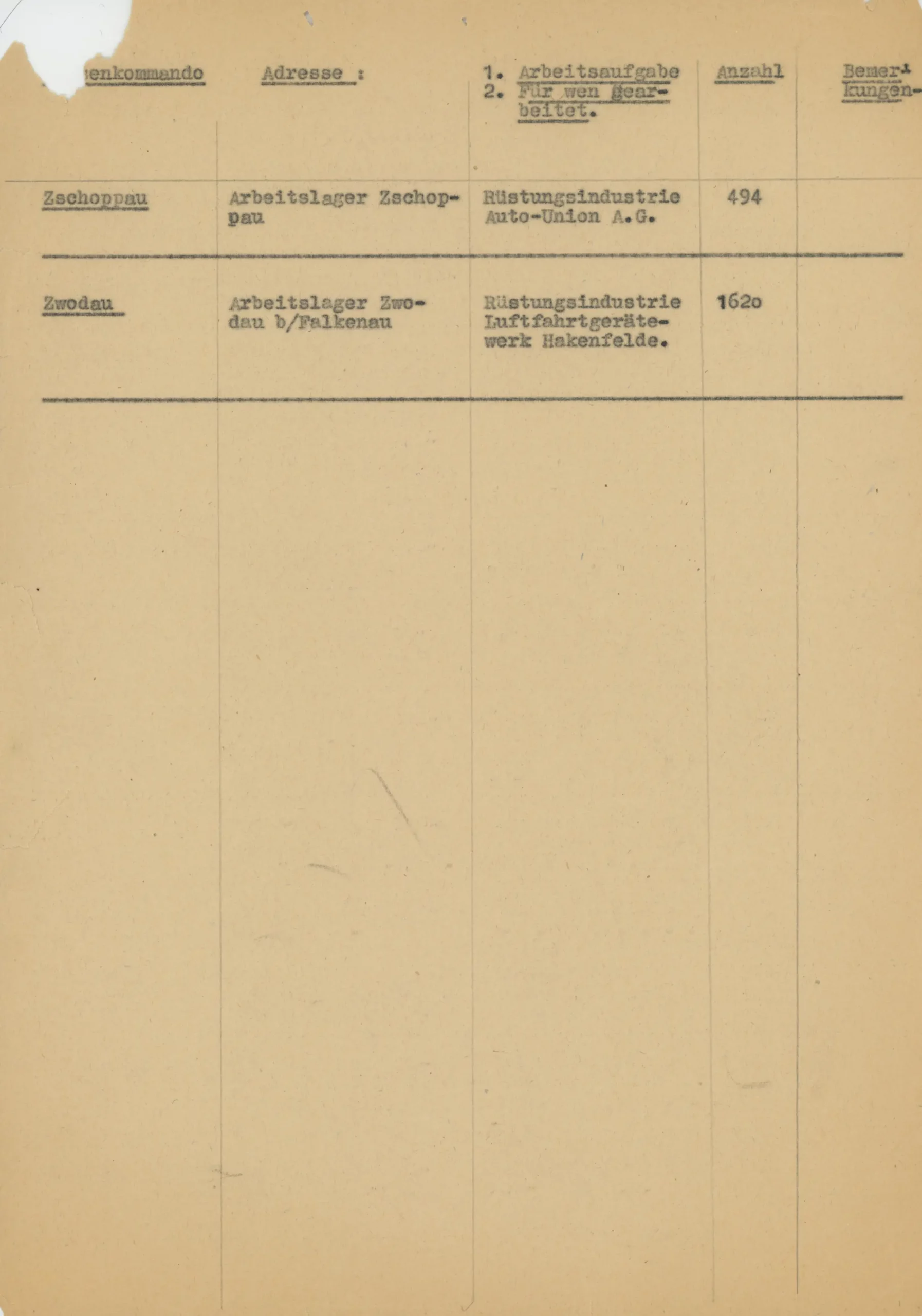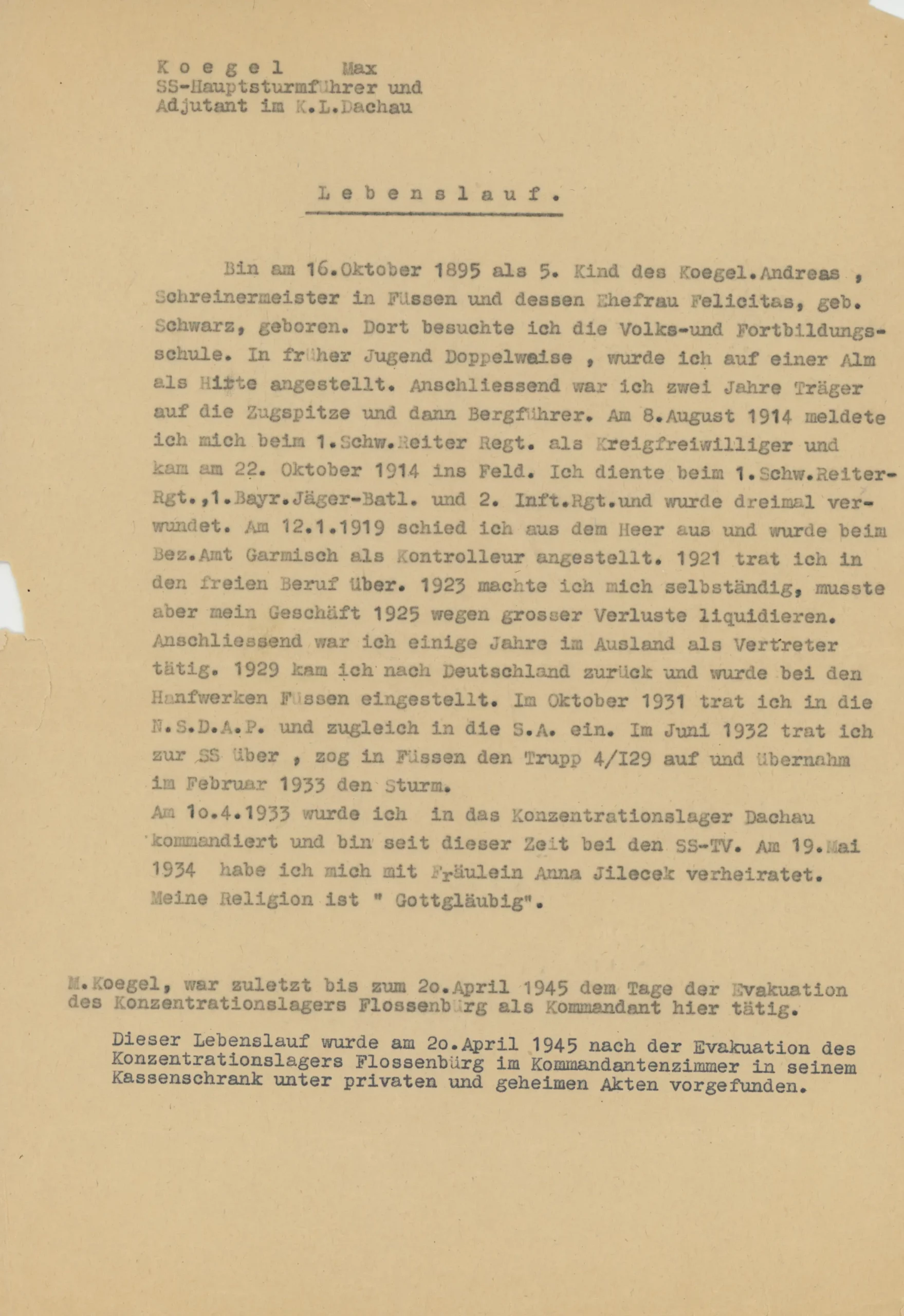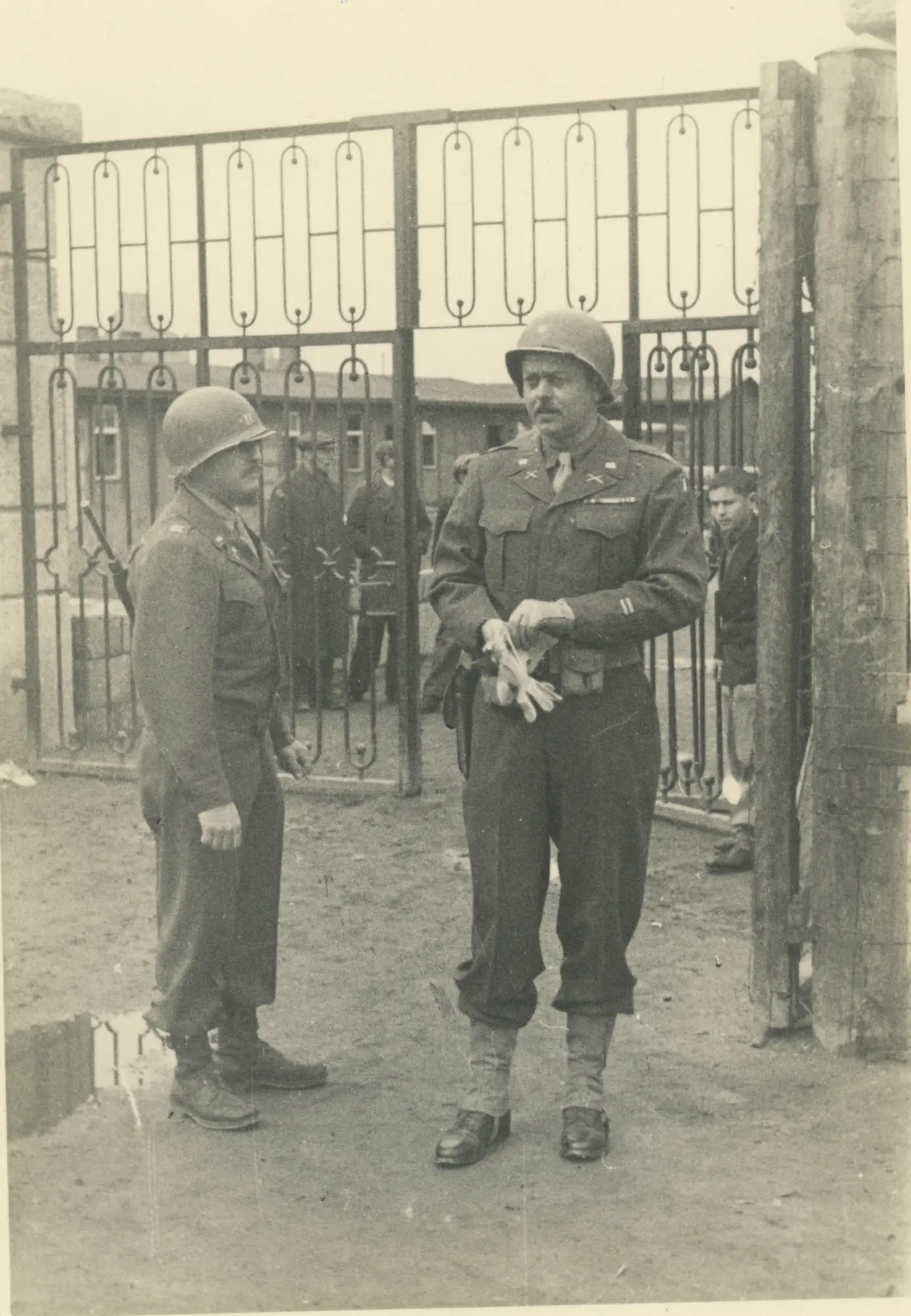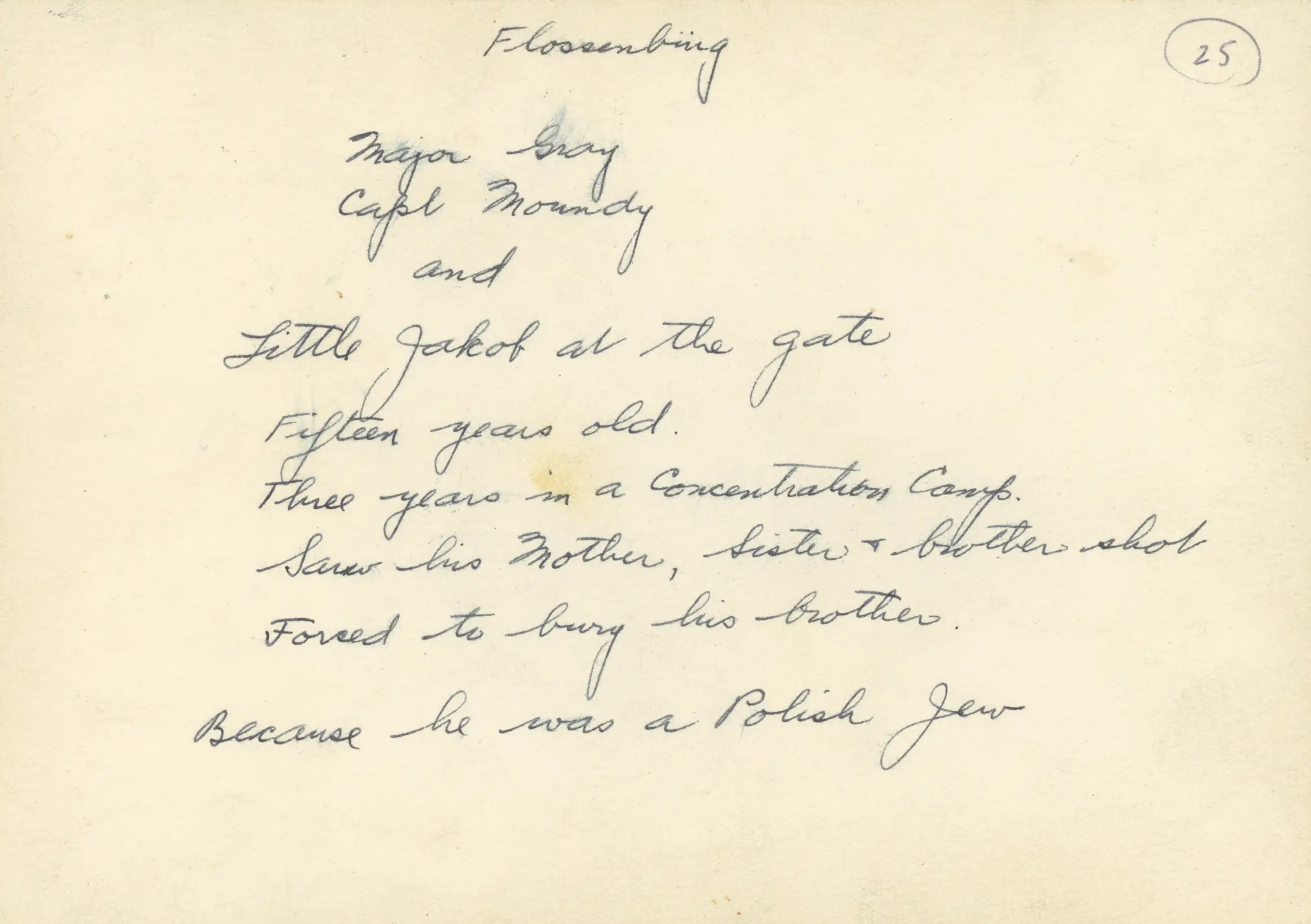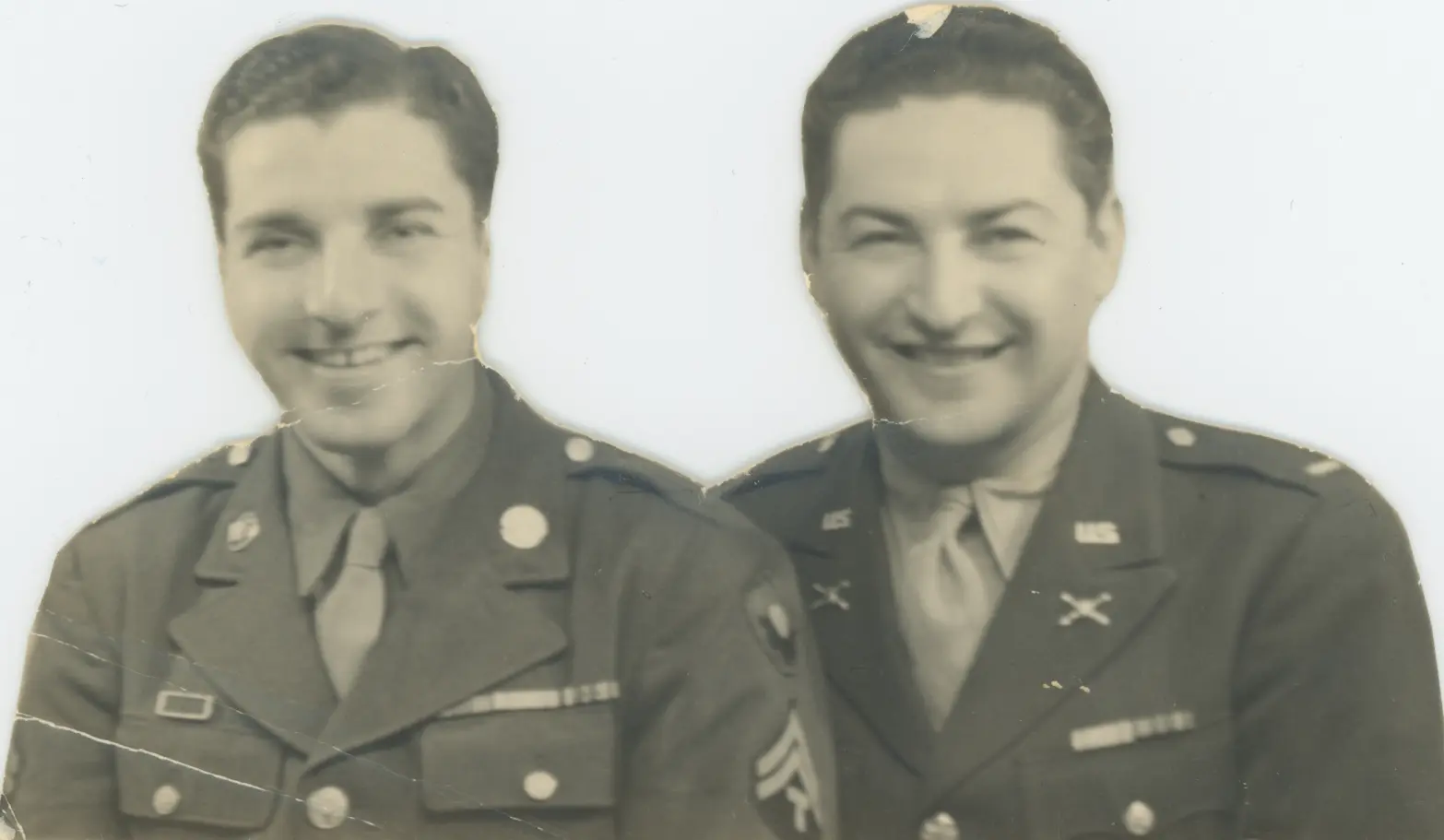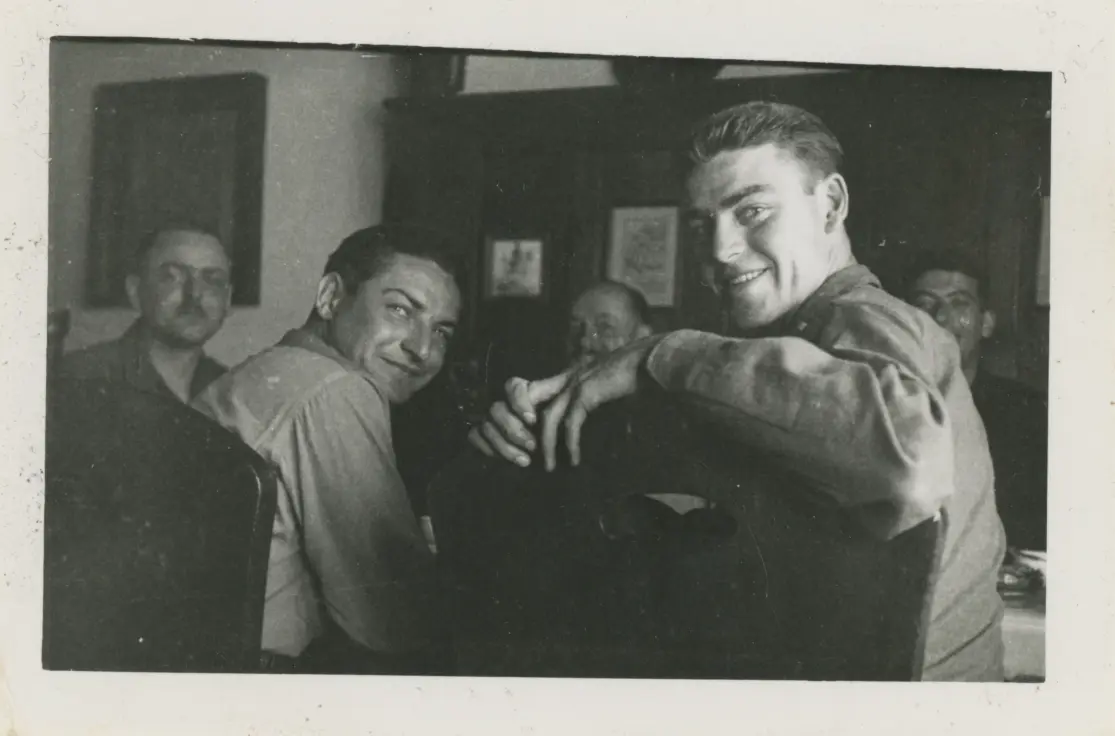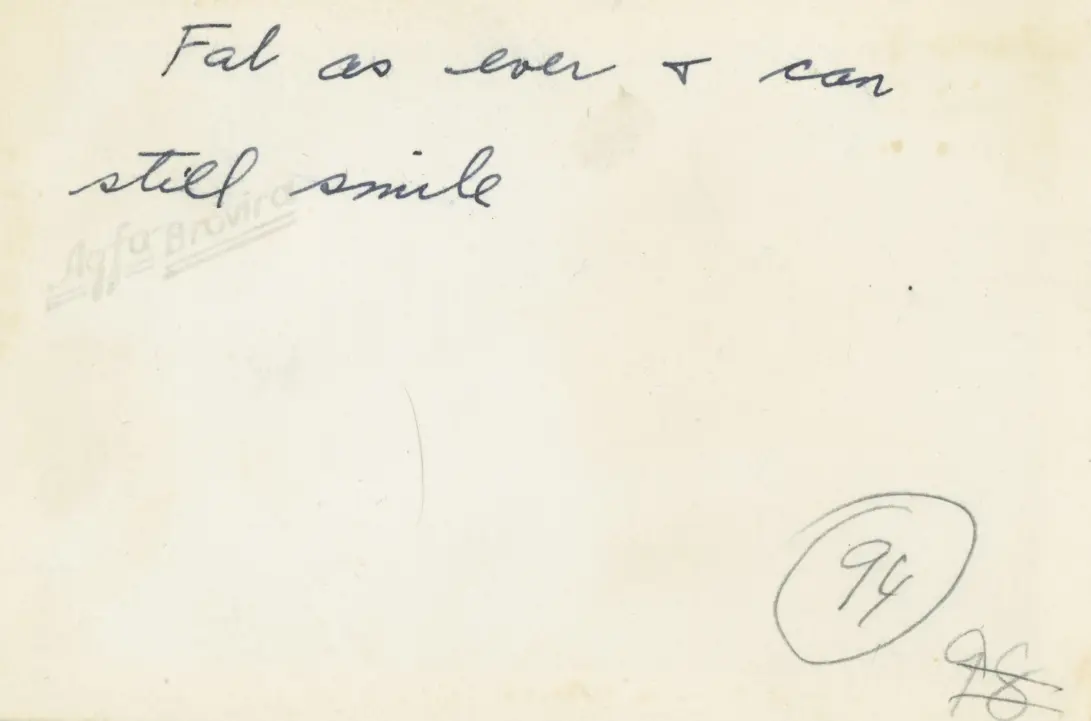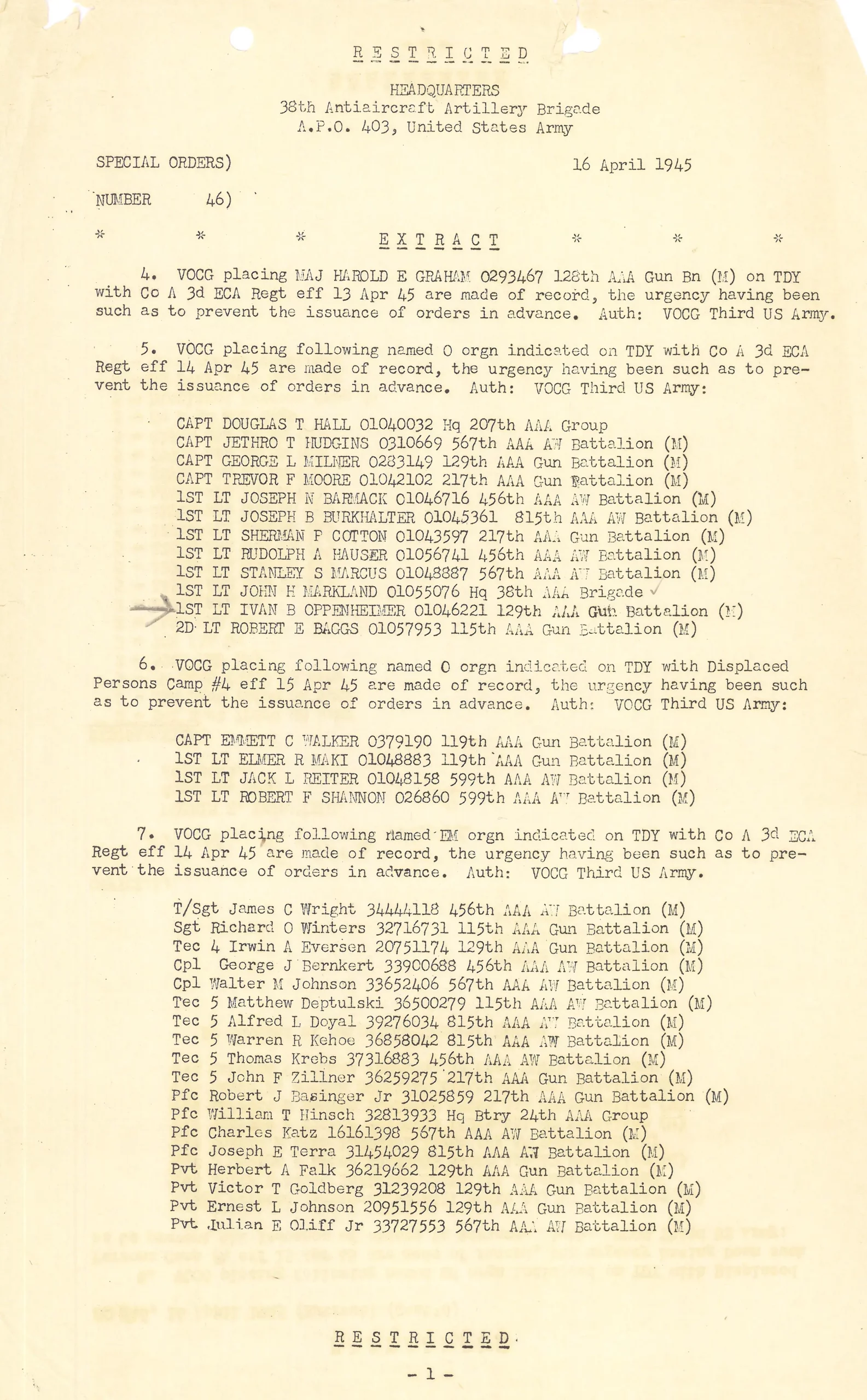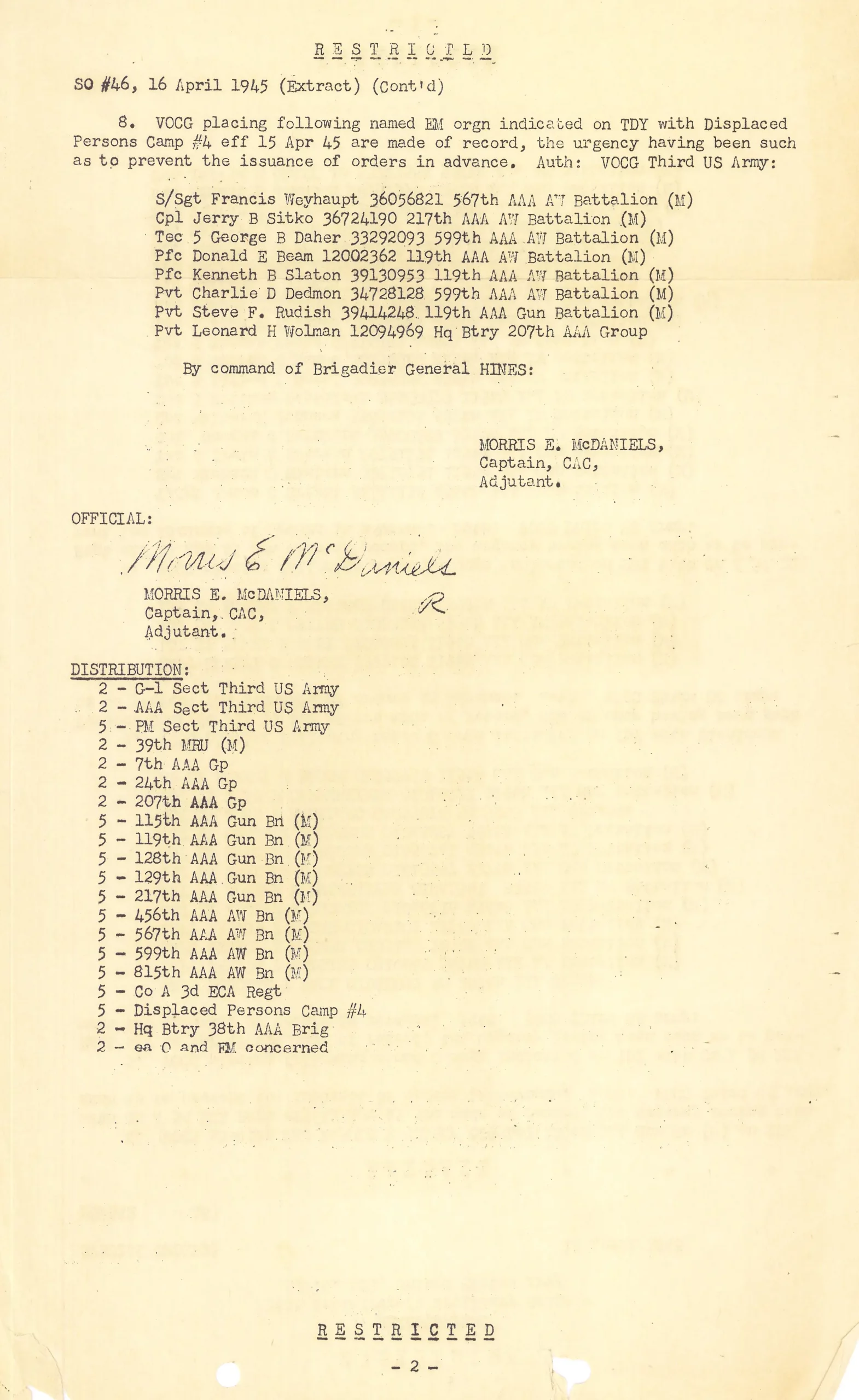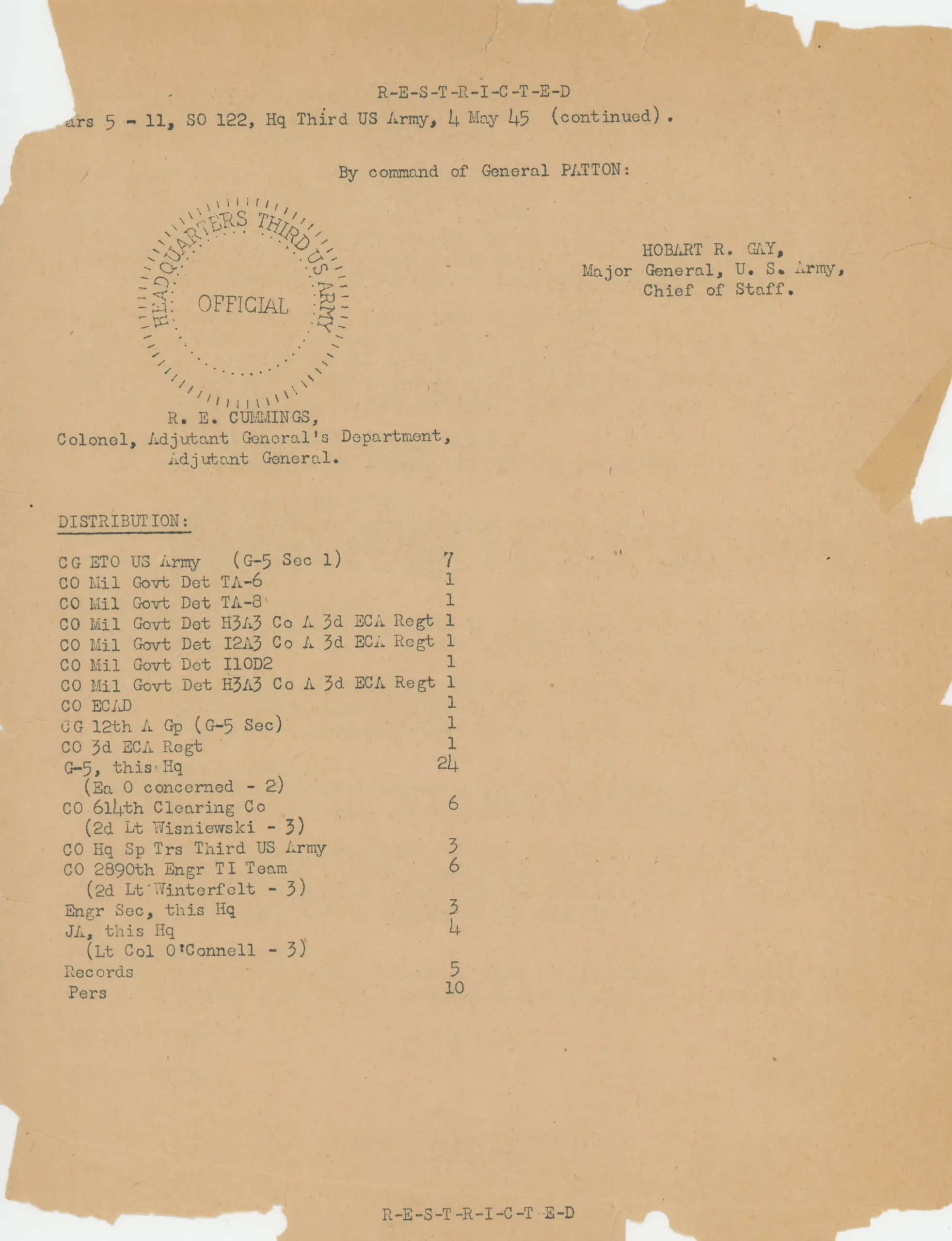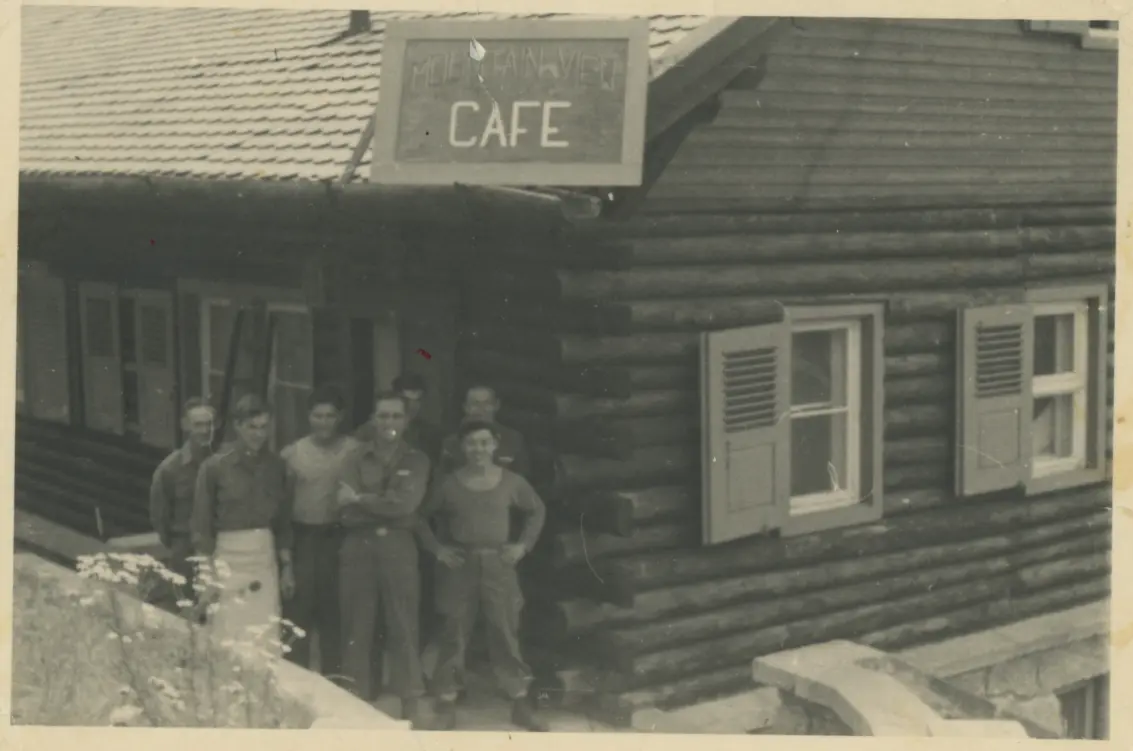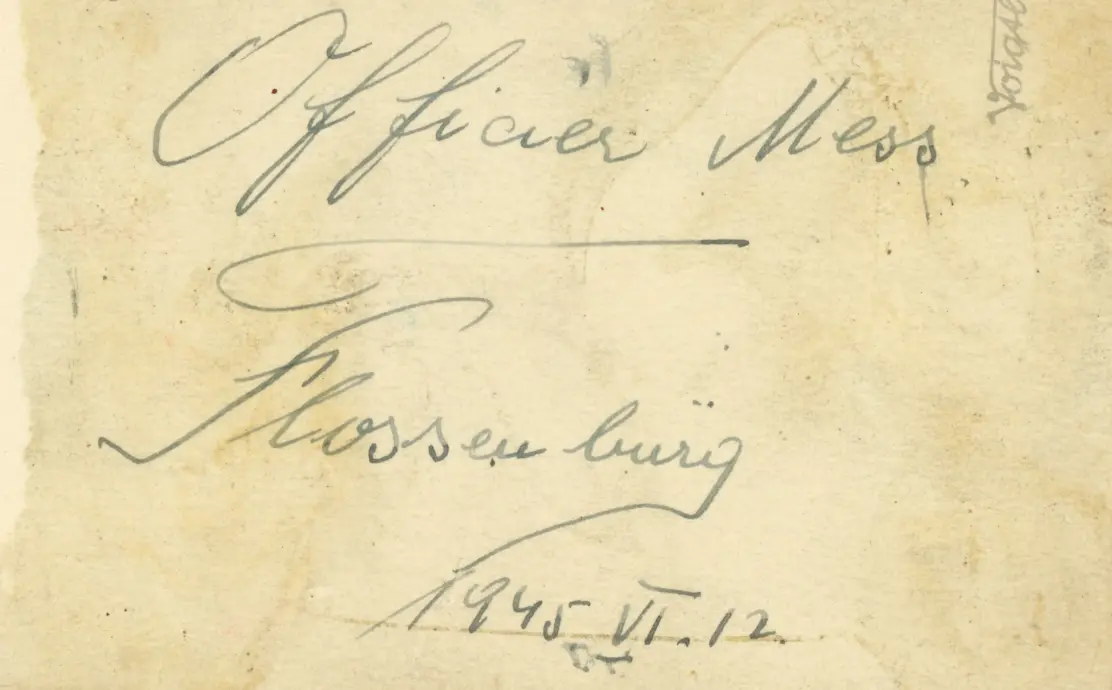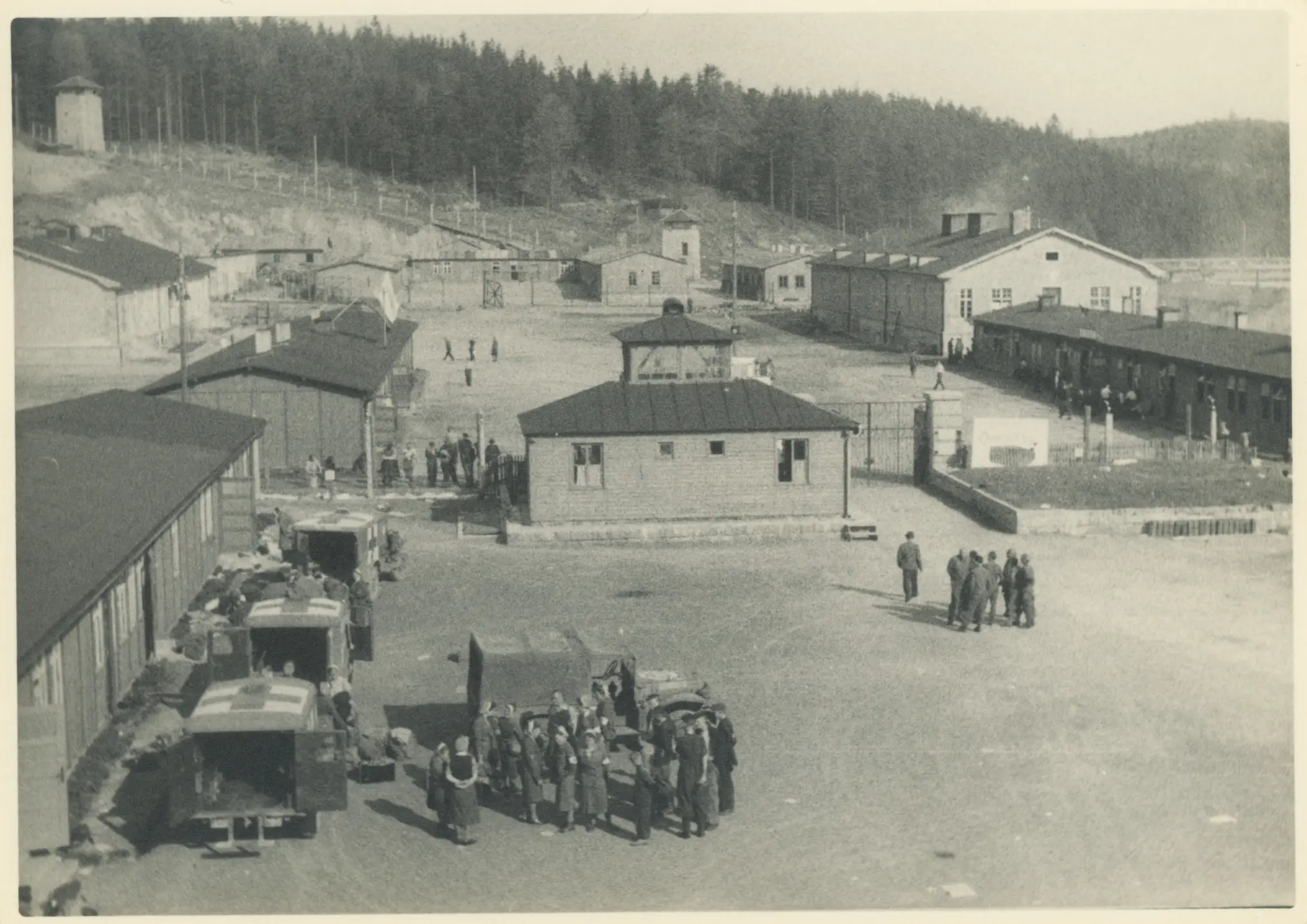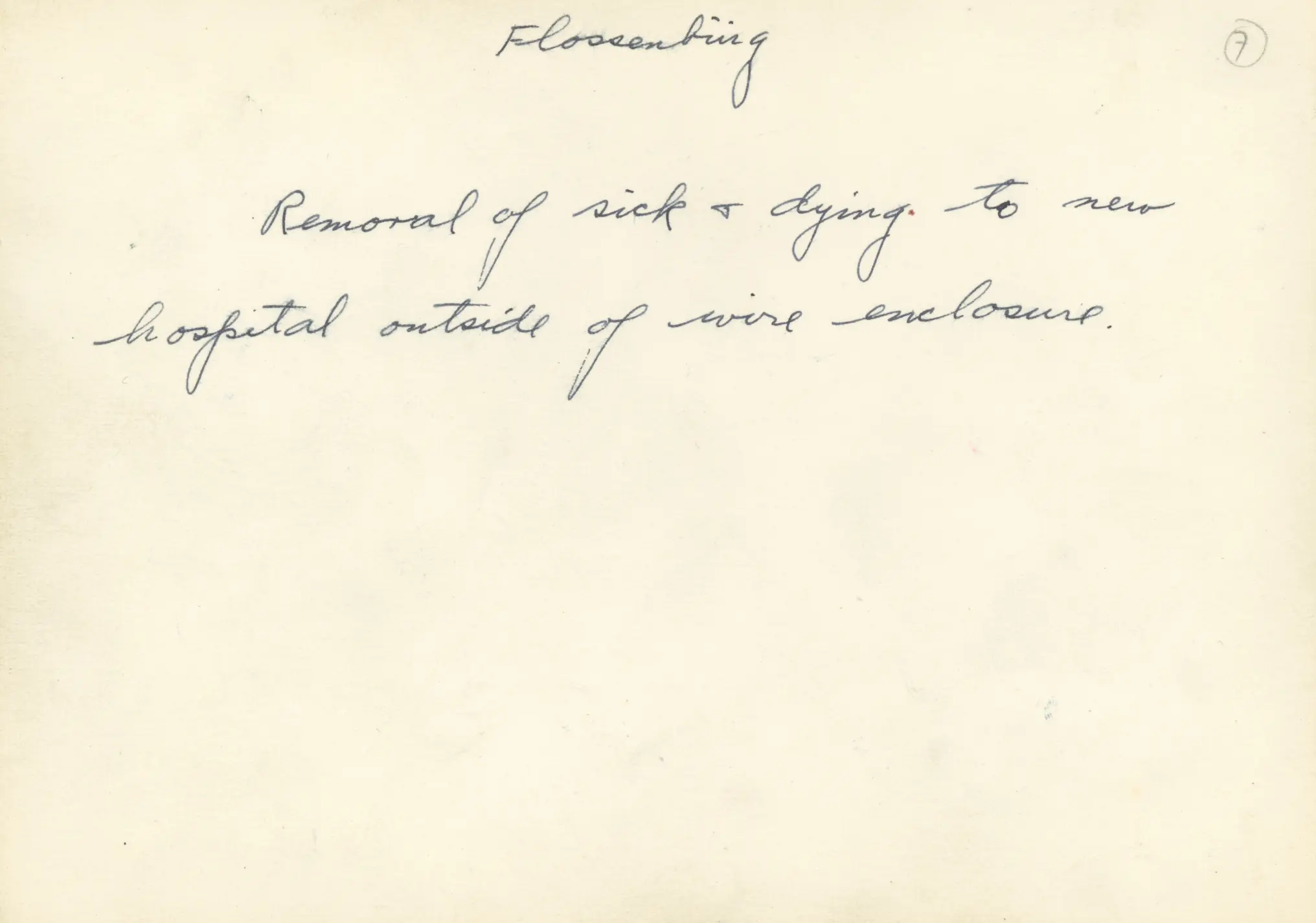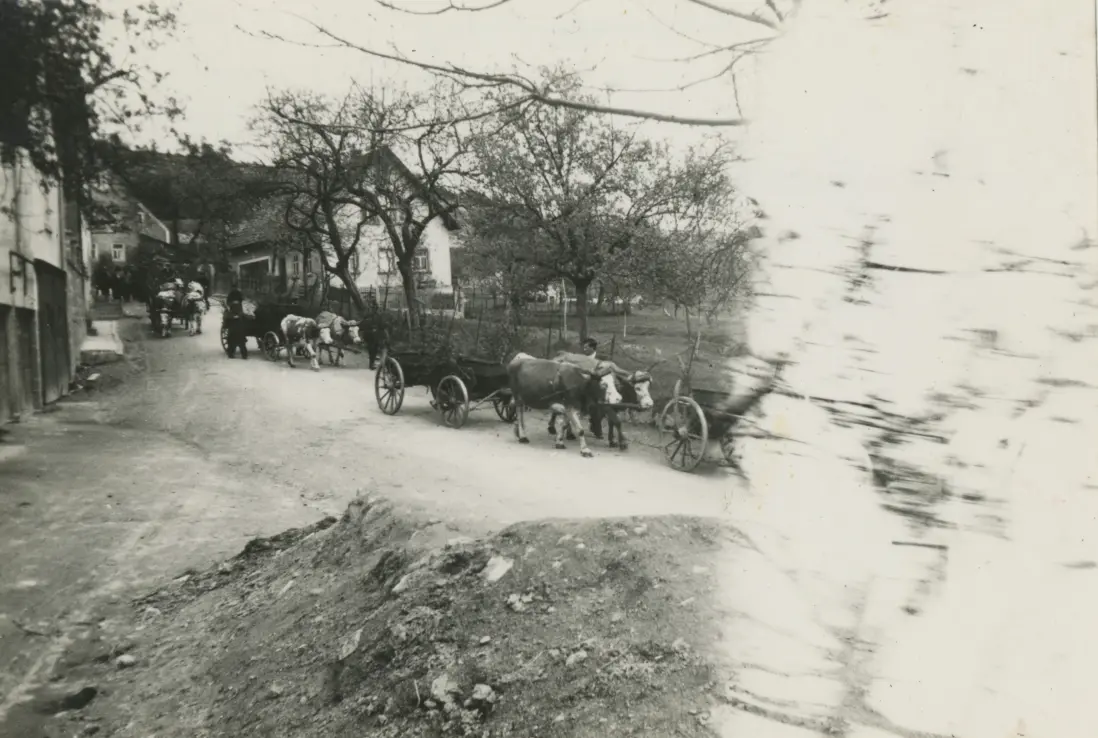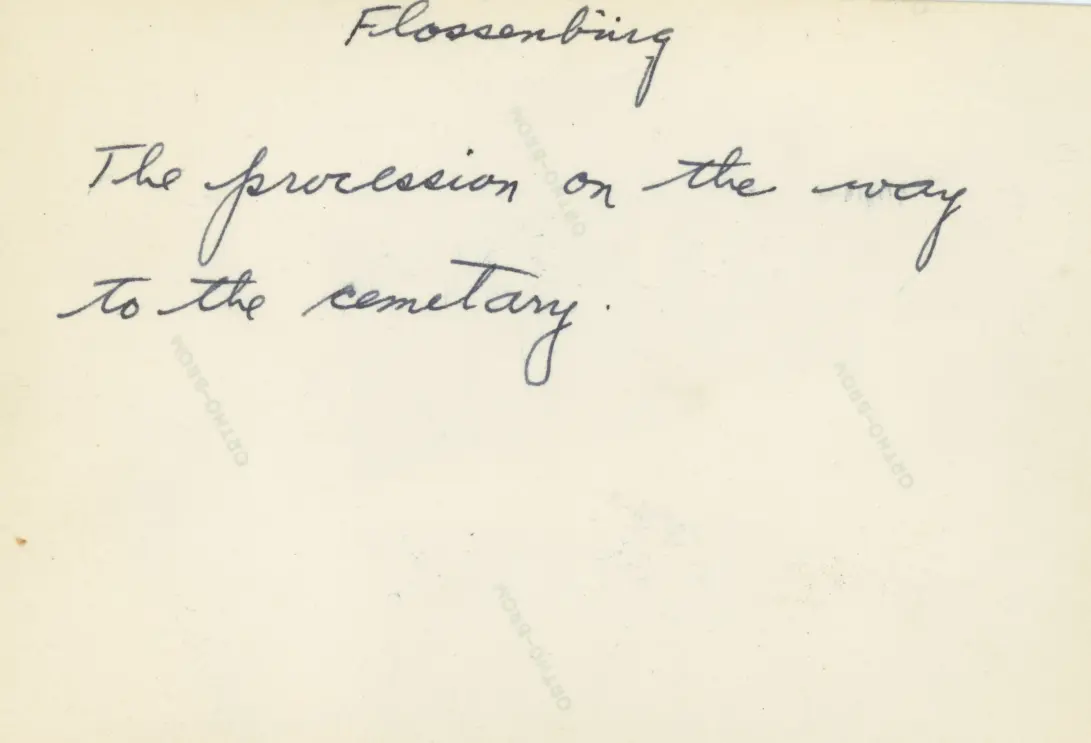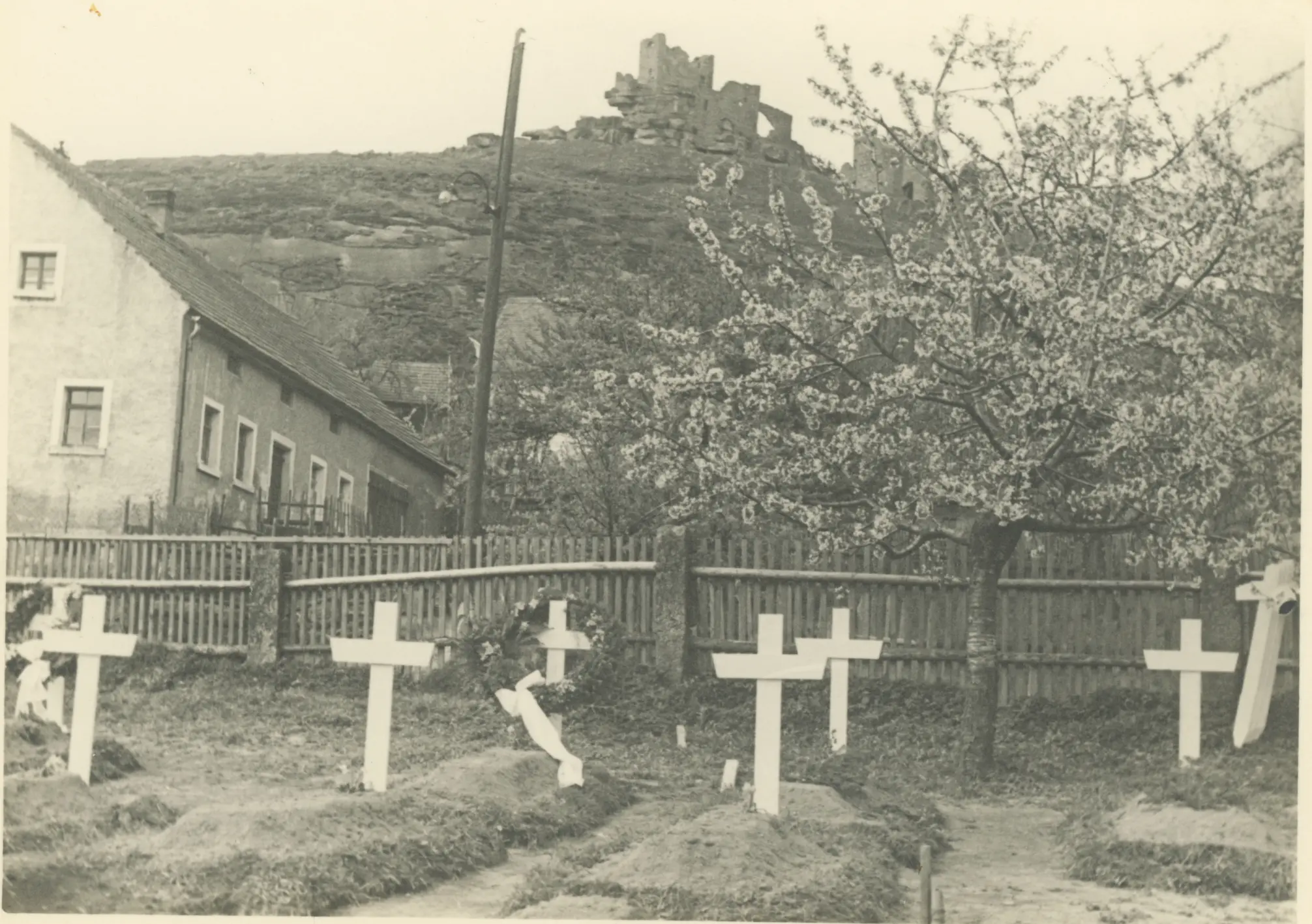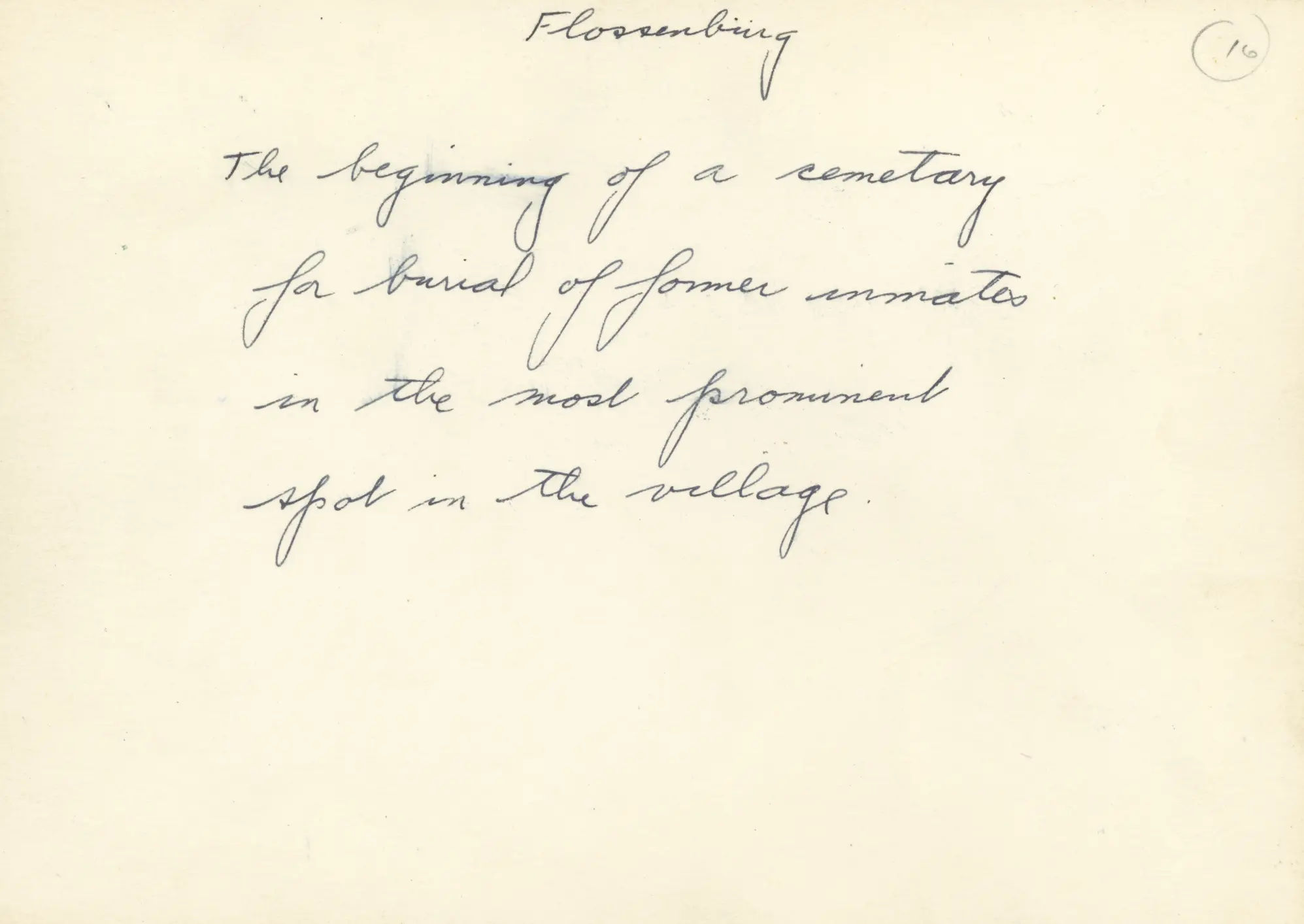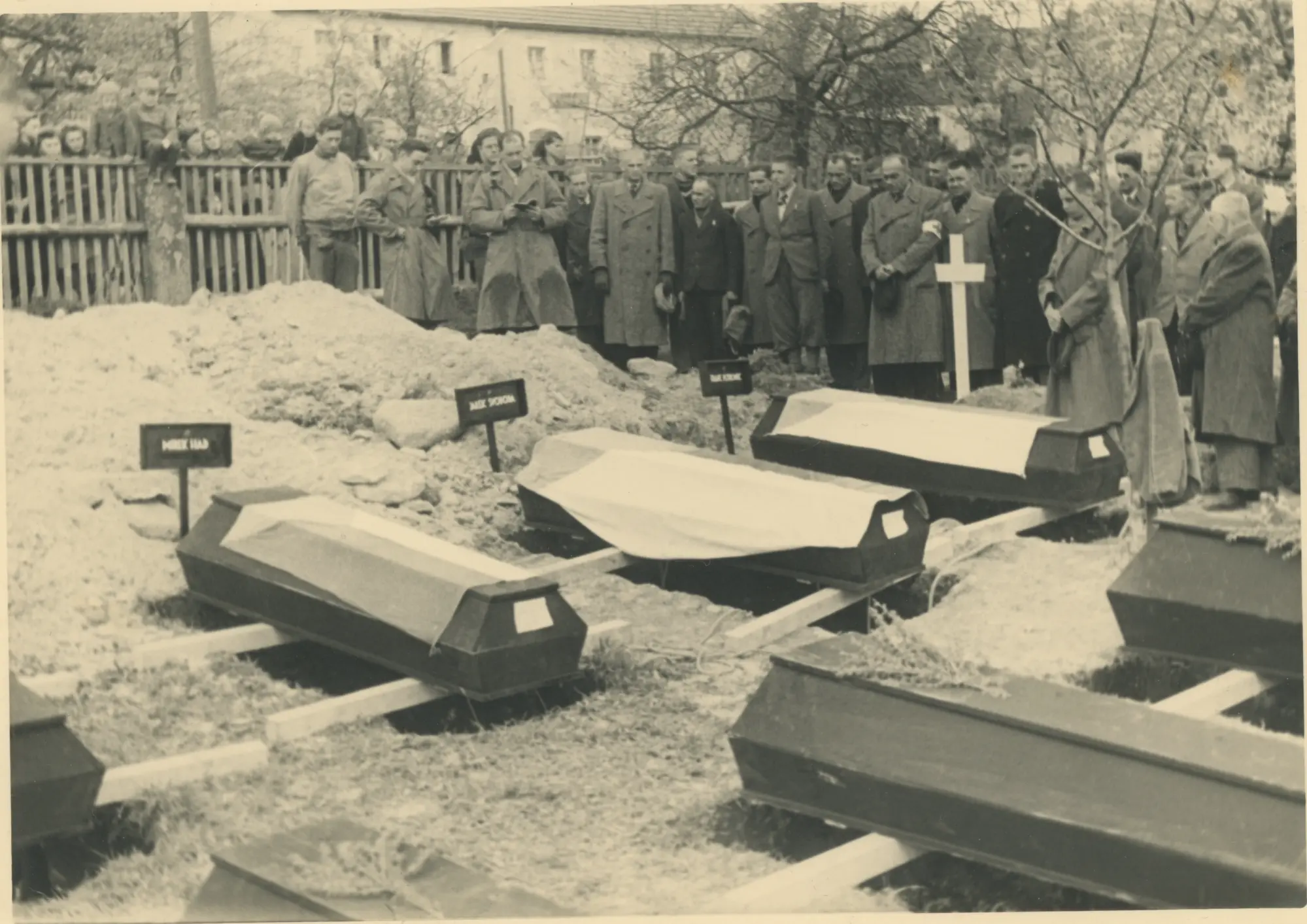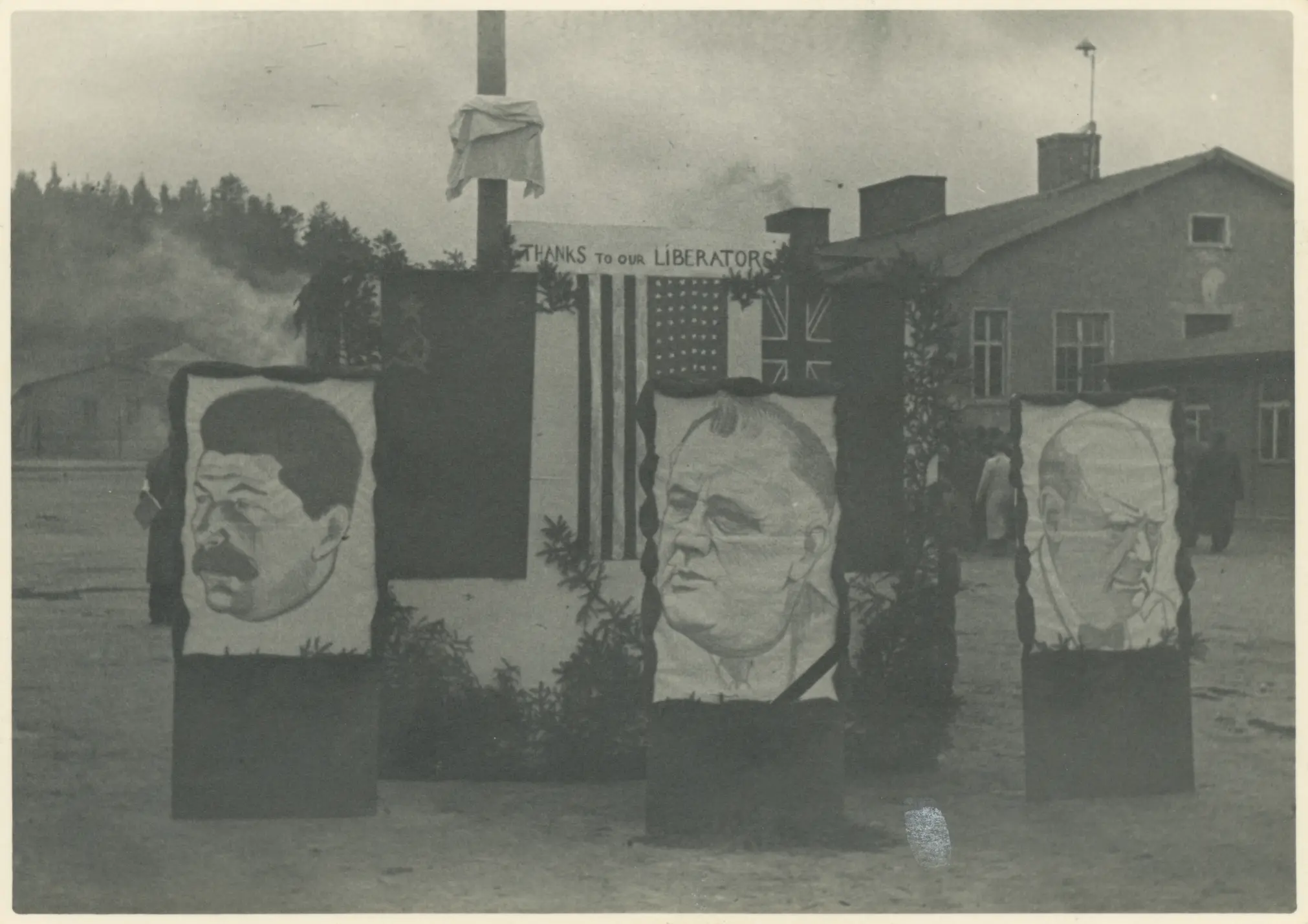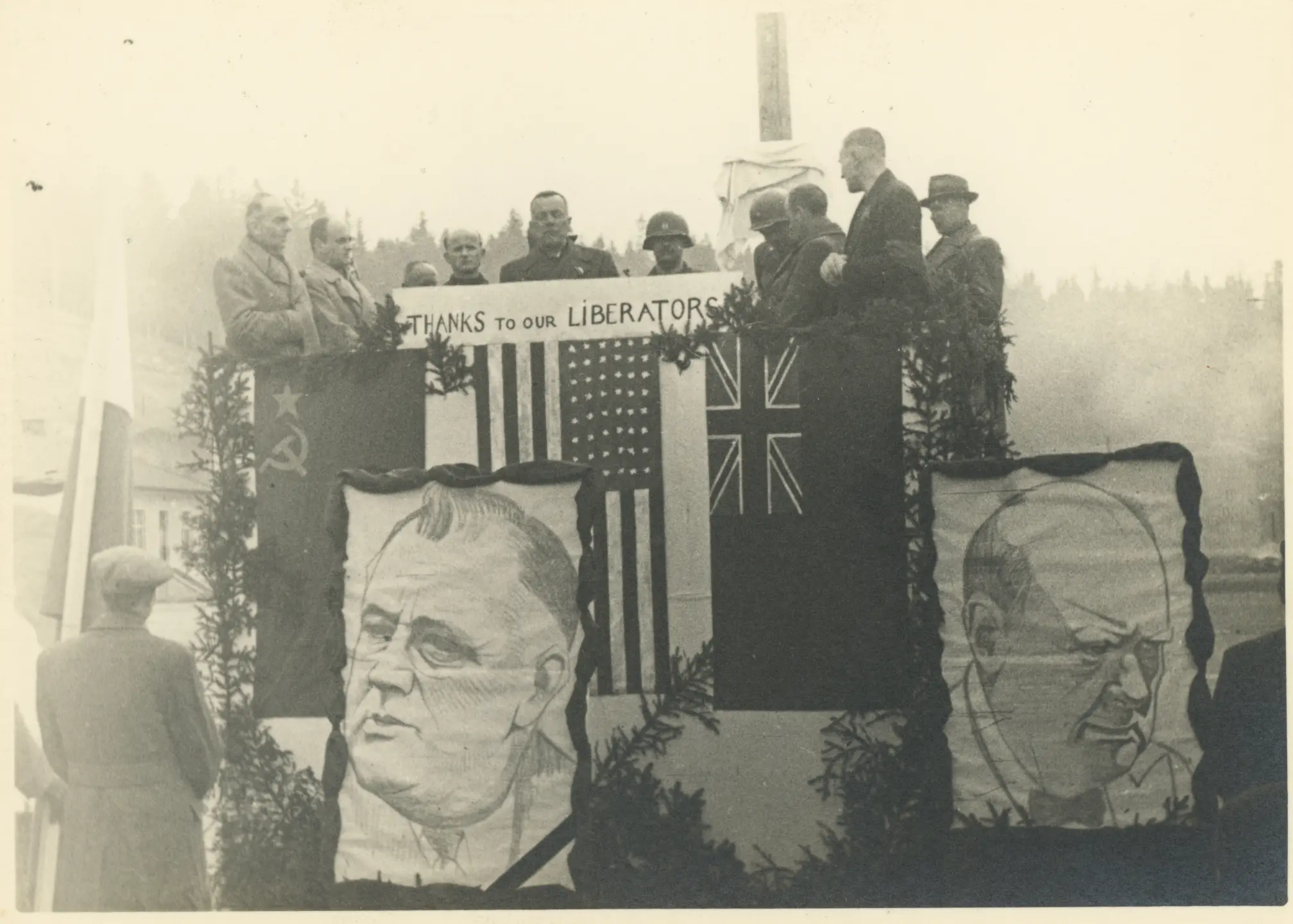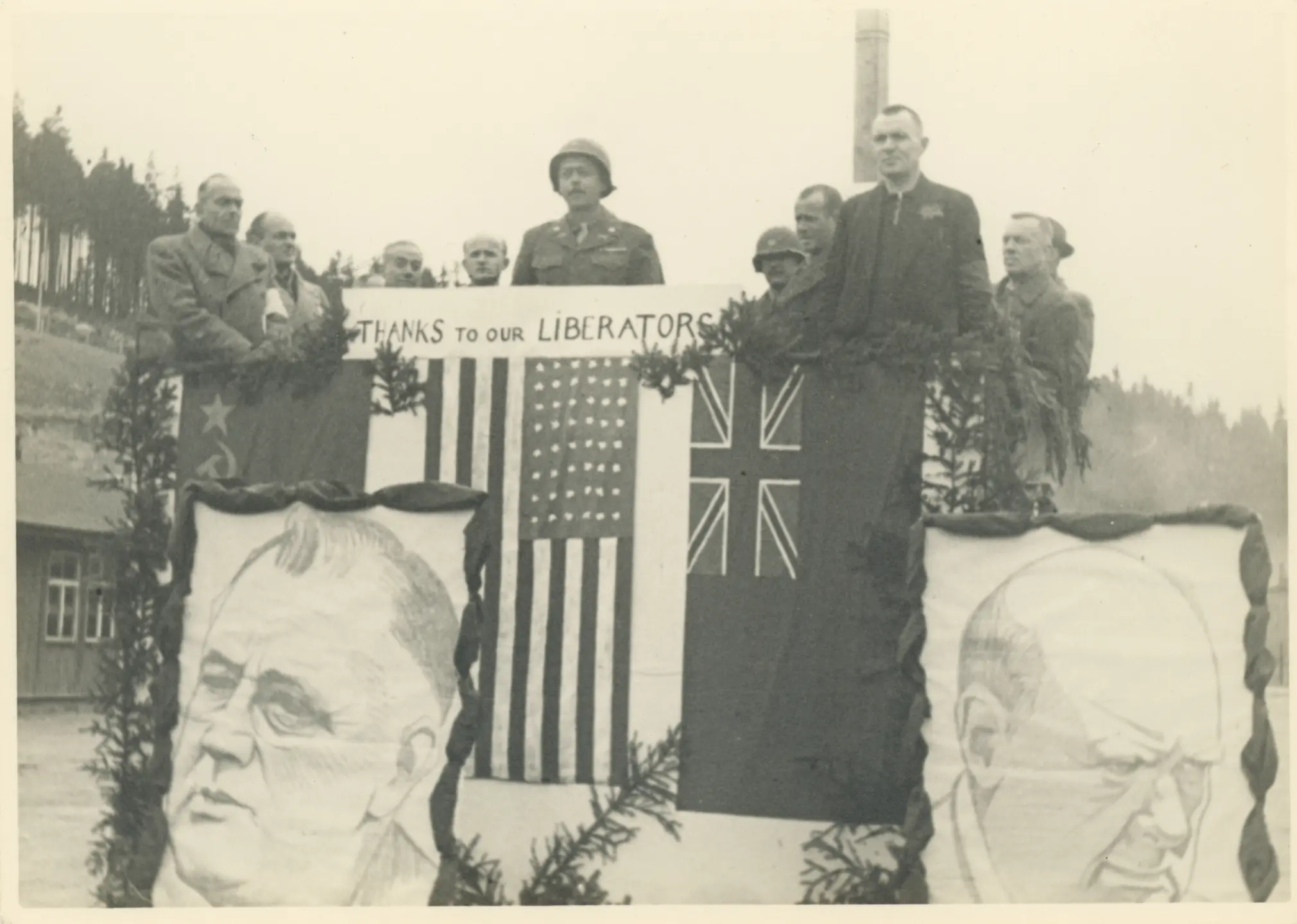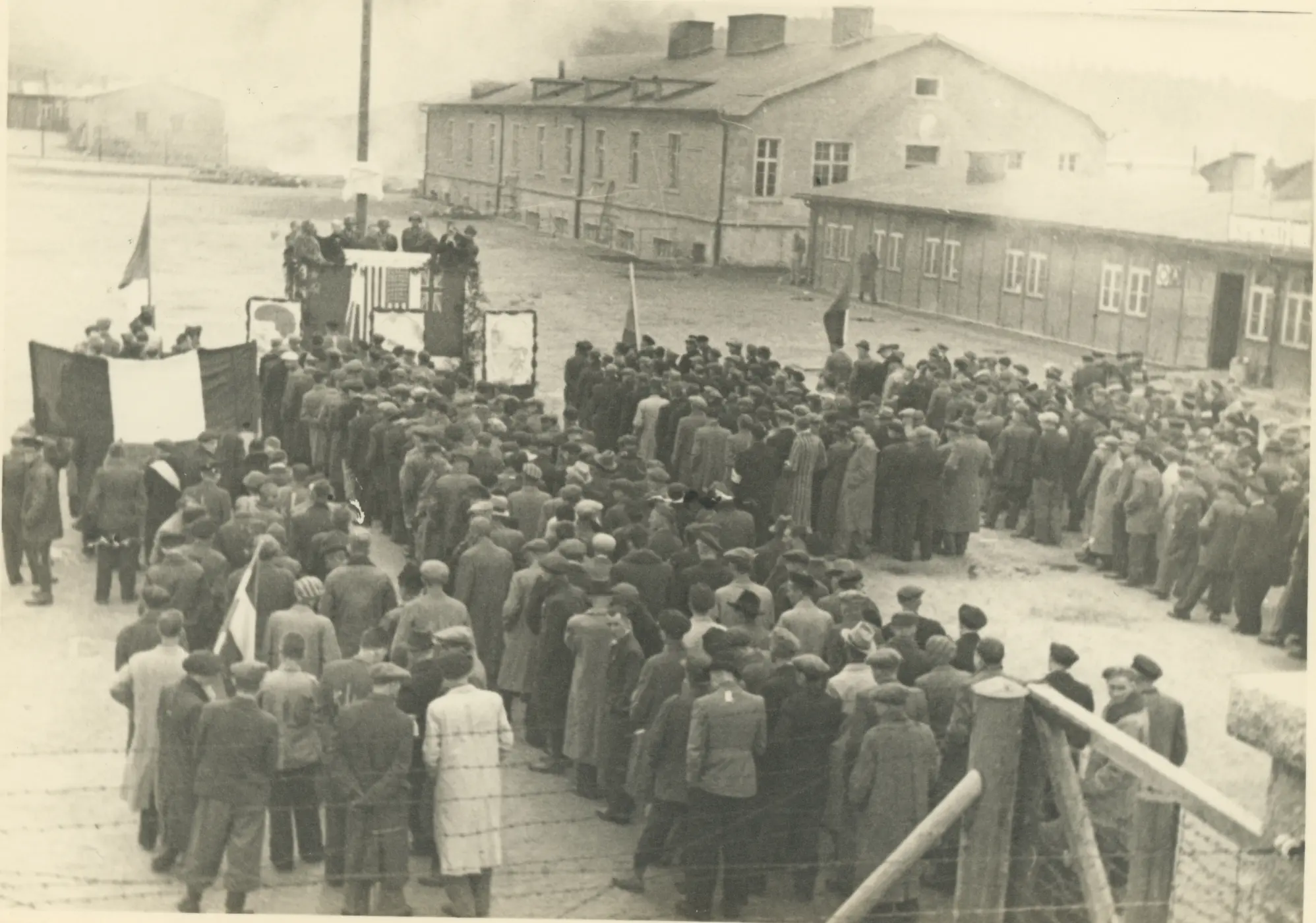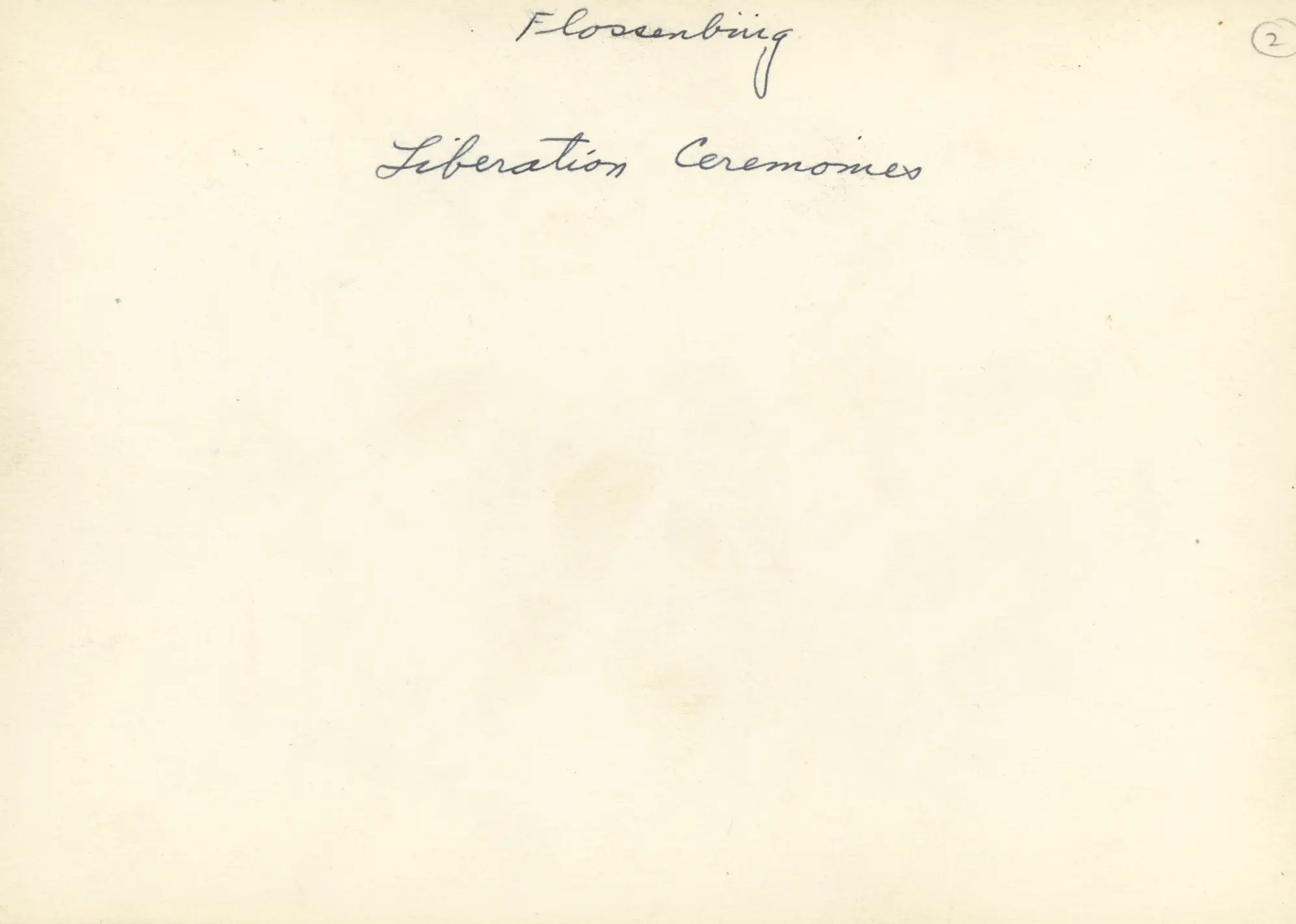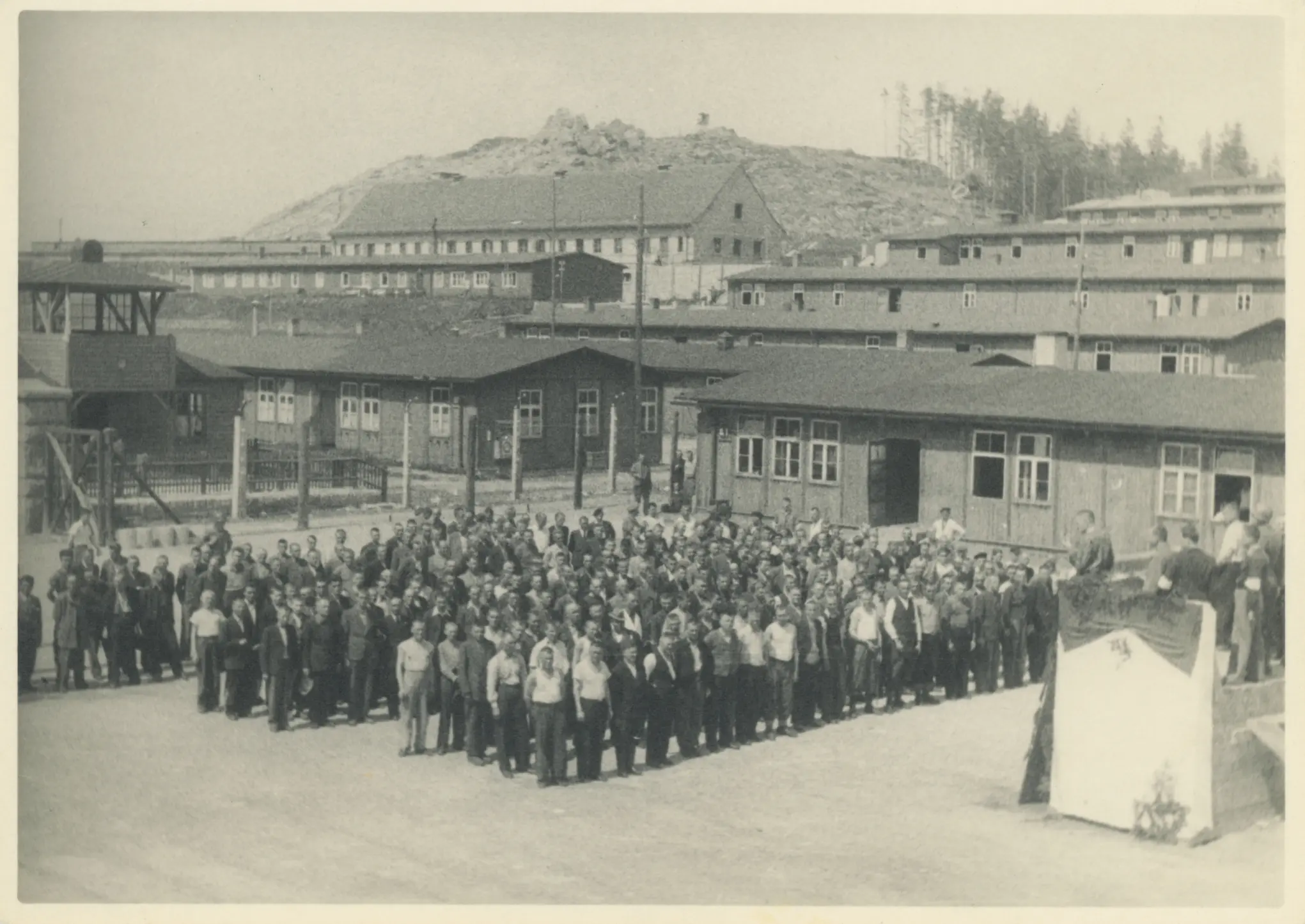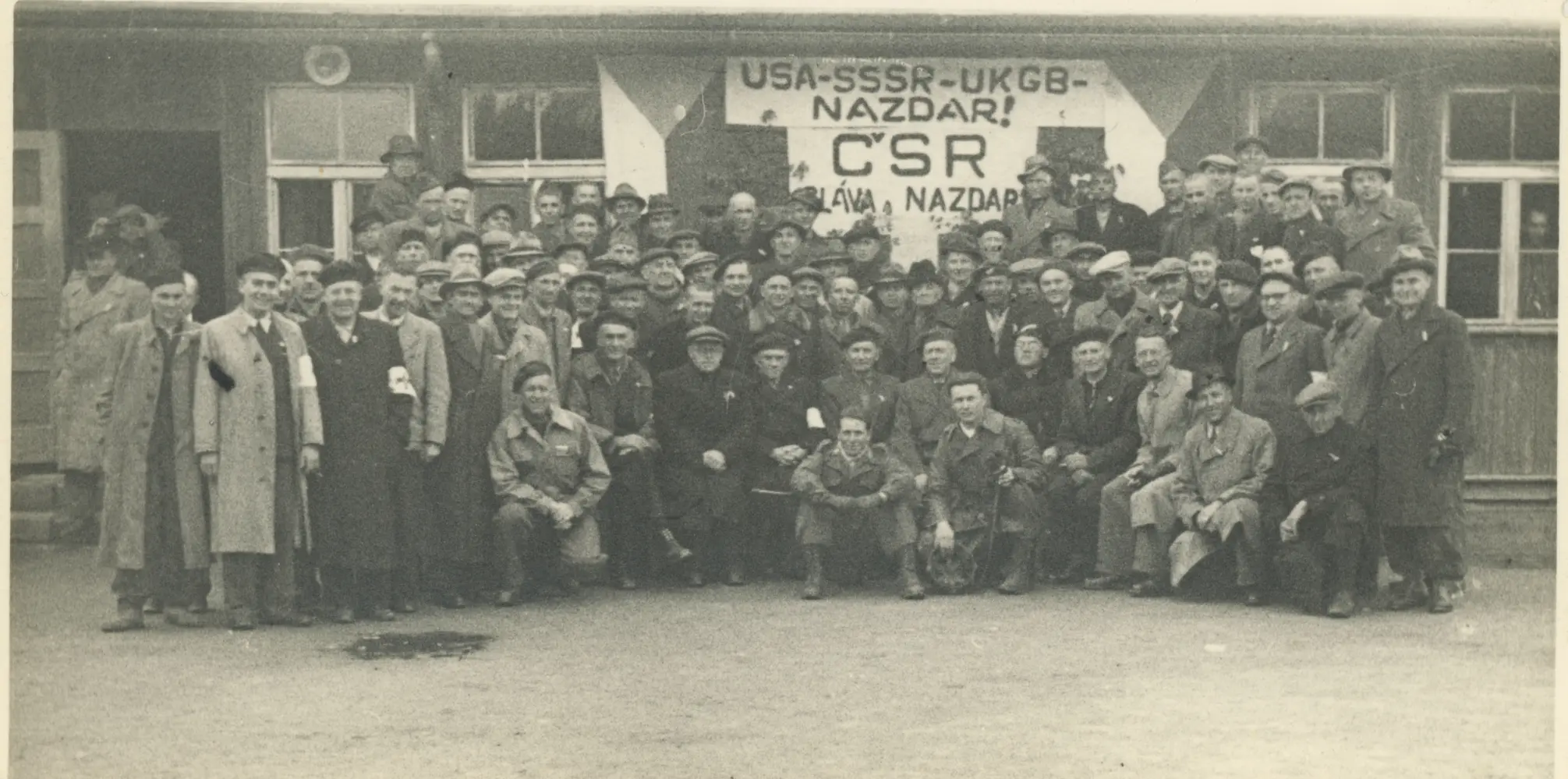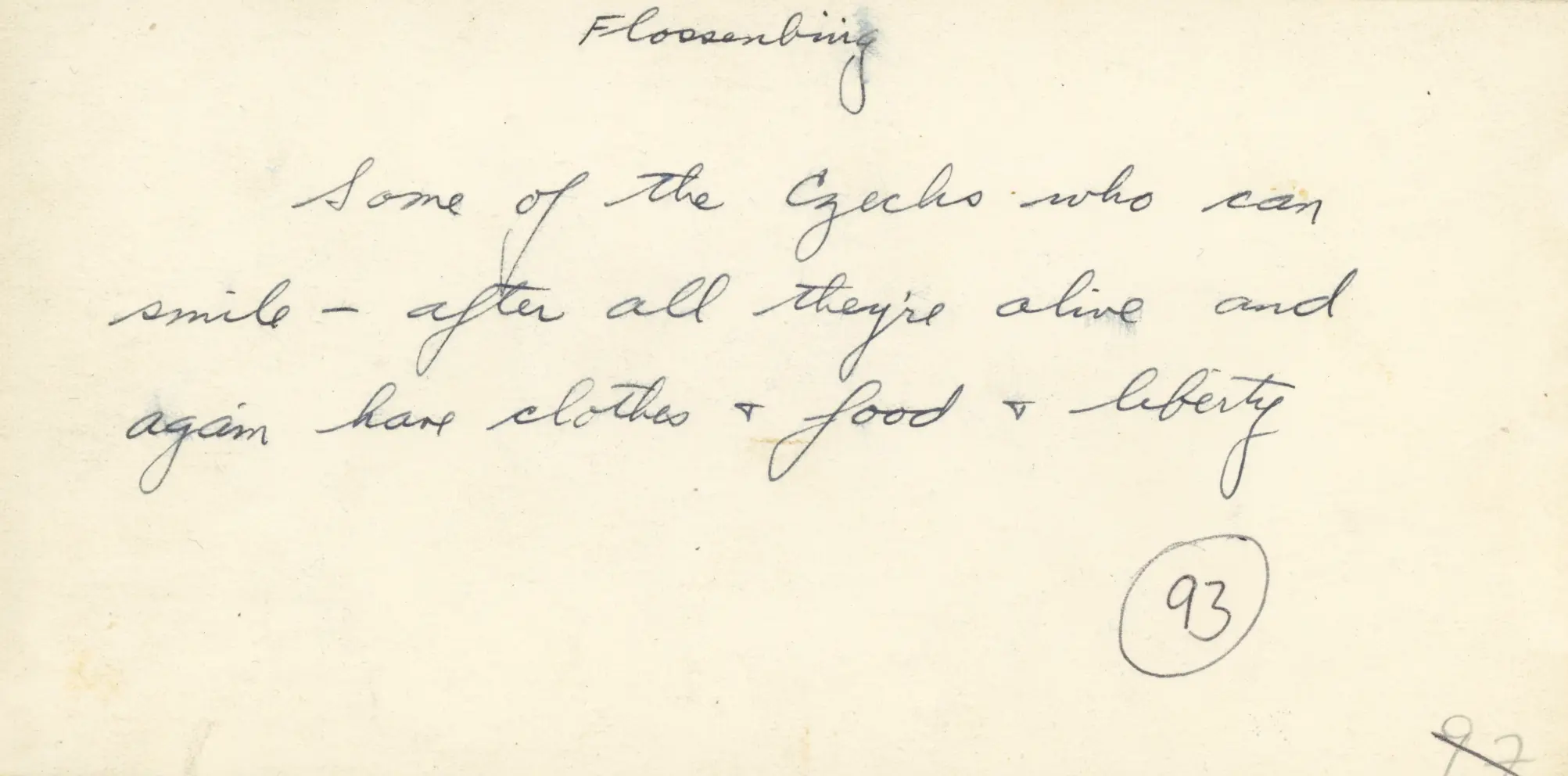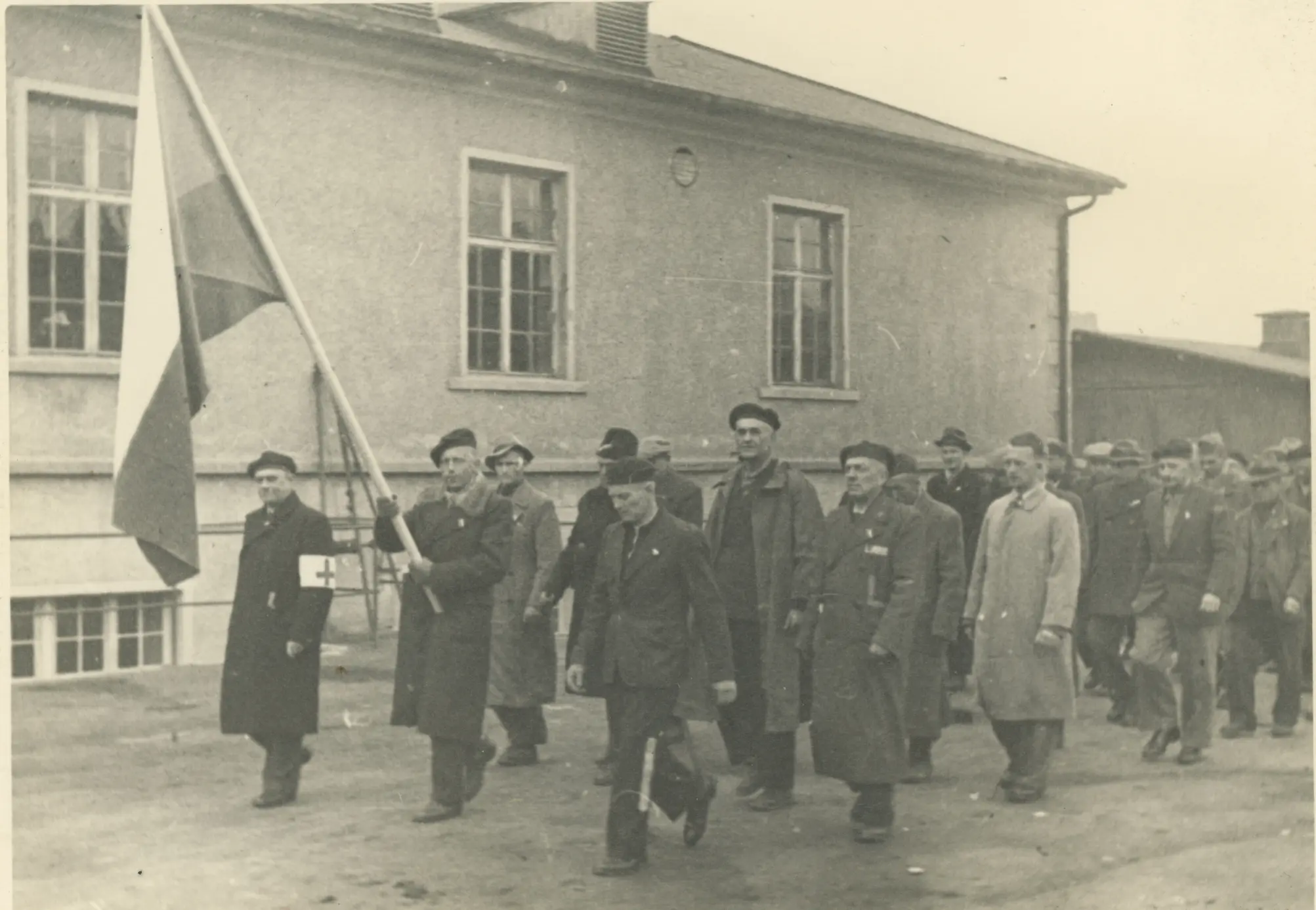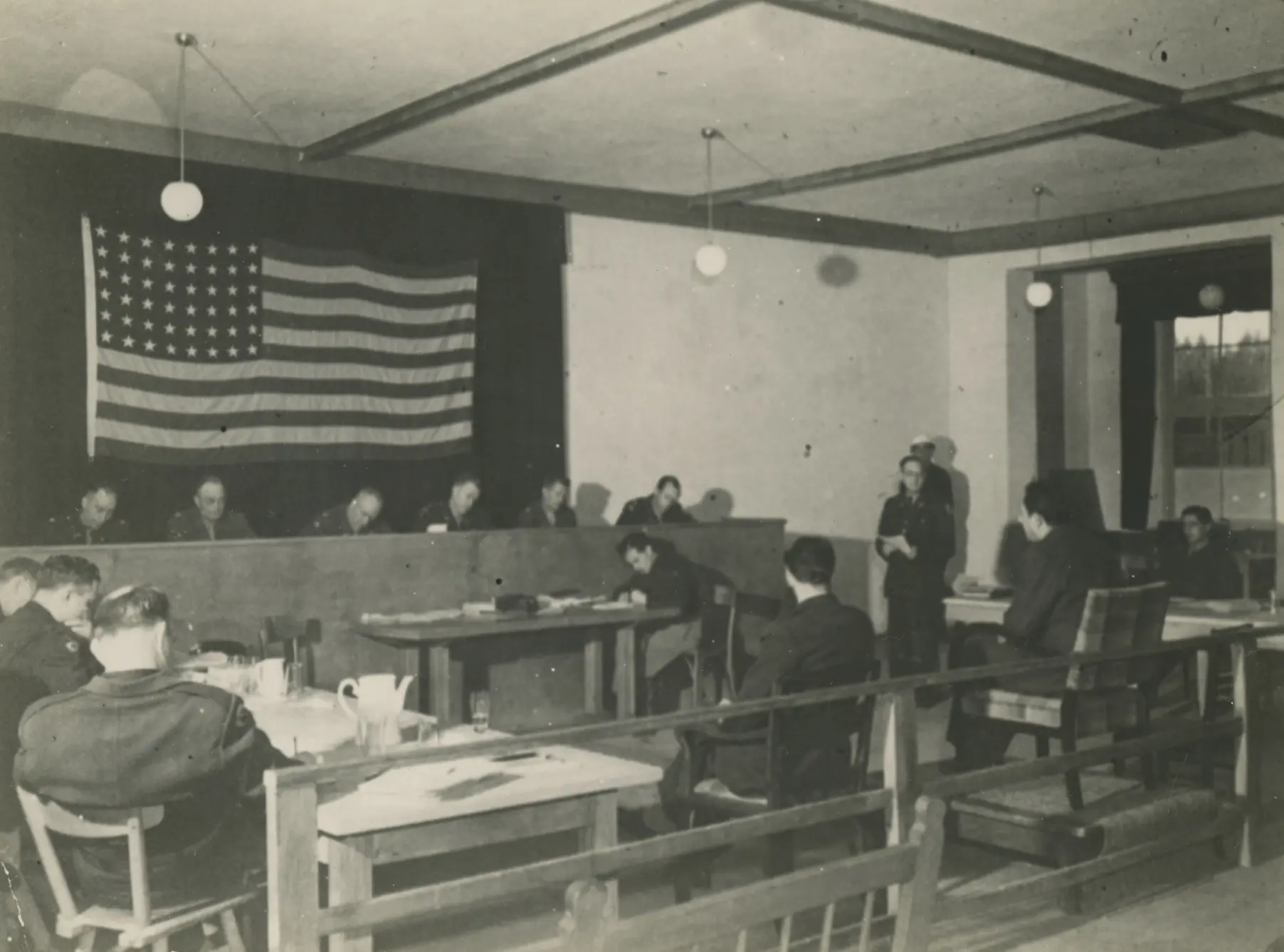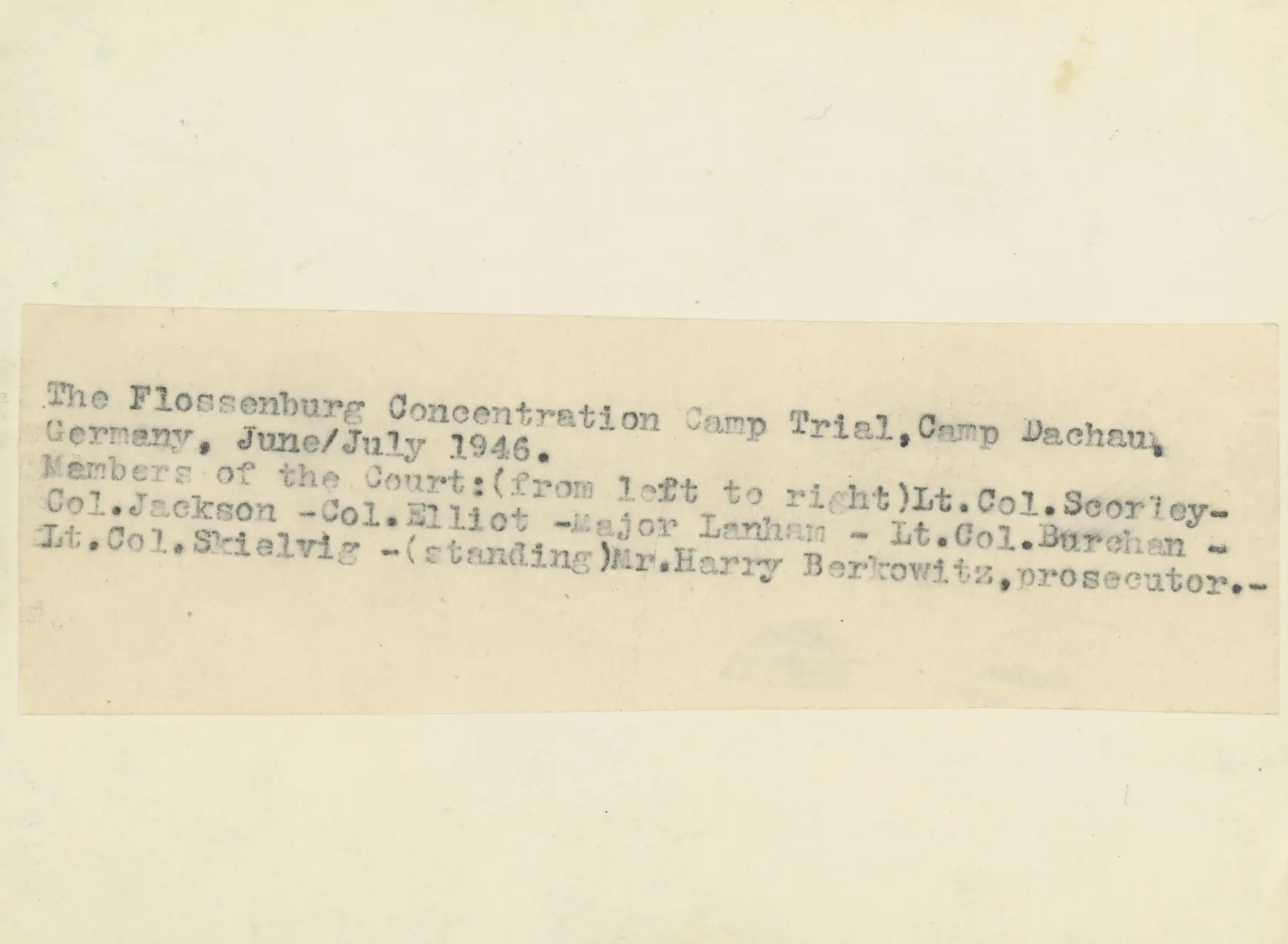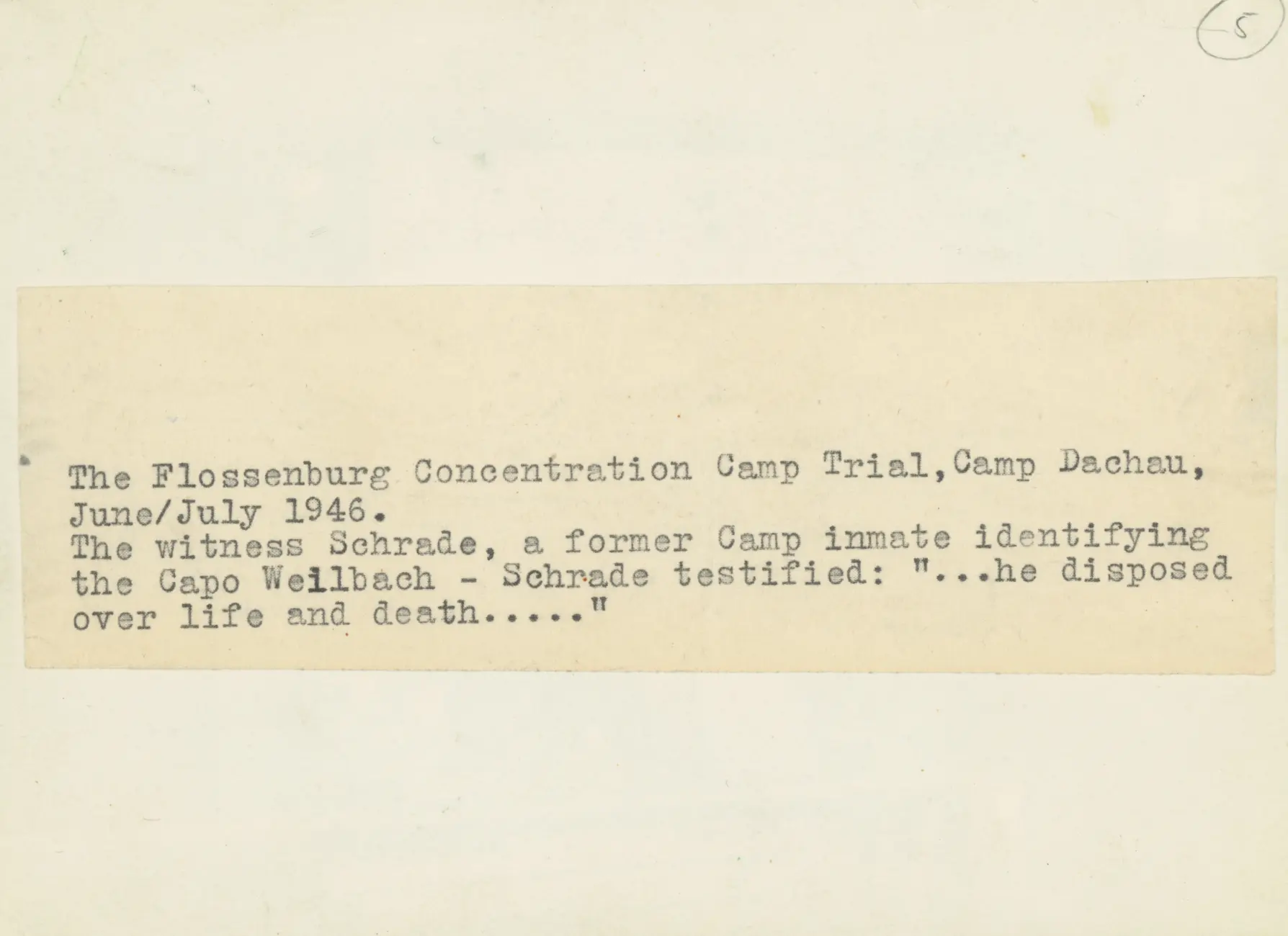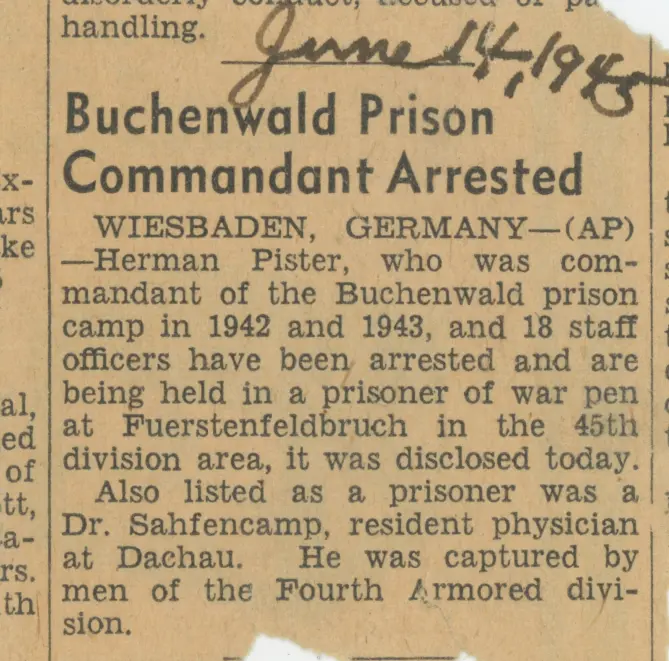Flossenbürg concentration camp
Concentration Camps were constructed immediately after the Nazis assumed power in 1933. The function of these camps was to imprison communists, political prisoners, clergymen, and others who opposed the regime, habitual criminals, sex offenders, Jehovah’s Witnesses, Roma and Sinti, prisoners of war homosexuals, and Jews. The concentration camps were intended to serve two purposes: supplying cheap labour and exterminating the Jews and other groups as a result of hard labour, torture and horrible living conditions. Before the end of World War II, more than 100 major camps and several thousand subsidiary forced-labour camps were constructed by the Germans.
In March 1938 it was decided to establish a concentration camp at Flossenbürg due to the granite deposits in the region. Construction with prisoners began in May 1938. The use of forced labour for the construction of the camp killed large numbers of political and ideological enemies.
By 1940 the finished camp construction housed over 2,600 prisoners. The first inmates who had arrived in late 1938 were political inmates. After the start of the war, Flossenbürg housed prisoners from across occupied Europe. The first Jews arrived at the camp in 1940.
The conditions in Flossenbürg were torturous. The slave labour in this camp consisted primarily of mining the stone quarries to produce material for civilian building projects. The Physical exhaustion, accidents, and the unlimited power of the supervisors depleted a prisoner’s strength in a matter of weeks and frequently lead to the death of them.
During the latter part of the war, the grounds of concentration camps were leased to the aircraft industry, including Messerschmidt in Flossenbürg. In February 1943, the first 200 prisoners were taken to work for Messerschmidt. In October 1944 war-plane production was at its peak, with approximately 5,000 prisoners slaving in the factory.
Hundreds of inmates, including Jews, Poles and Soviet soldiers and officers, were executed in Flossenbürg. The SS in Flossenbürg took part in at least 2,500 systematic executions. Shooting was later replaced by lethal injections that took place in the building housing the crematorium.
In the final year of war, the SS evacuated the concentration camps in occupied Europe. Massive prisoner transports arrived at Flossenbürg. At the end of 1943, over 3,300 prisoners were incarcerated at Flossenbürg; one year later, the number exceeded 8,000. On February 28, 1945, the Flossenbürg camp held 14,824 prisoners. Conditions in the camp became worse due to permanent overcrowding.
In early April 1945, the dissolution of the Flossenbürg concentration camp began. Thousands of prisoners were sent on death marches throughout Bavaria. Many of them died of exhaustion, were shot or beaten to death on these marches.
Between 1938 and 1945, approximately 84,000 men and 16,000 women from over thirty countries were imprisoned in the Flossenbürg camp and its subcamps. It is estimated that around 30,000 deaths occurred among prisoners registered in the Flossenbürg system.
The camp was liberated by the 90th American Infantry Division on Monday morning, 23 April 1945.
The Bavarian village Flossenbürg and the castle on the hill looked like this in 1944. The Flossenbürg concentration camp was located near the small town eight kilometers from the Czechoslovakian border.
The Flossenbürg concentration camp with the castle on the hill in 1944. The big two-story stone building was the SS administrative building. The first row of parallel arranged houses next to the administrative building were housing the SS-men and their workspaces. The Appelplatz was located in the center of the picture. The next row of parallel arranged barracks was housing the prisoners. The houses on the hill in the background were the SS-Officers homes. The former SS administrative building was later turned into an apartment building located outside of the Memorial Site of Flossenbürg.
The bright two-story building on the left was the SS administrative building. The barracks housed the SS troops. The casino and brothel, formerly used by the SS, was the long white building in the background.
This is the general view of the camp including the barracks, two rows of barbed wire surrounding them and a watchtower in the back overlooking the area.
The camp for Soviet Prisoners of war was a separate camp within the Flossenbürg concentration camp. It was located in a corner of the concentration camp and consisted of a building for disinfection, and four barracks to house the POWs. The back of the picture reads: “Each of the buildings housed 2000 souls.” This statement probably relates to the buildings of the camp for the Soviet prisoners of war.
The camp was surrounded by electrified barbed wire.
“A brief report of the measures the SS leadership took to maintain the state of the Flossenbürg concentration camp, 2 May 1945. If because of the relatively high number of deaths, the level of the camp (population) decreased or declined in such a way that large losses in work production became noticeable, the local command asked the SS leadership in Berlin by radio signal for new admissions. Only a short while later a radio signal from Berlin followed stating that, for example, the Buchenwald concentration camp had instructions to send 1,500 prisoners who were healthy and able to work marching for the “deployment decisive for victory.” There was never a lack of these types of slogans in radio signals. Several days later the new inmates would arrive in a rather neglected state and including corpses at the train station in Flossenbürg.
These new prisoners were primarily gathered up during actions that the Gestapo had arbitrarily carried out in various countries. In card file documents, which are included in this report, these actions had secret names. For example: Night and Fog (Nacht und Nebel), Seafoam (Meerschaum), Spring Breeze (Frühlingswind), and Moon (Luna).
According to statements made by prisoners, the action called Night and Fog was actually carried out by the Gestapo in the evening and during the night in Paris and its surroundings and anyone who was in a restaurant or going home peacefully was arrested and taken to a concentration camp in Germany without a trial or hearing. Why? The SS needed new workers, since the other people in the camps had been used up.
Now another action: Seafoam. This action was carried out in Paris and in other cities, and the Gestapo probably arrested those people who had read leaflets or passed on information. In general people who weren’t controlled by the Nazis and who could be dangerous to them.
Also, actions were carried out under the code name Spring Breeze, and only so that there was a name for it, people were transported as slaves under a number of cover names and secret names.
Another action in Poland was called Moon. All these detentions, carried out without trial or court hearing, were used as closed actions for excavations, because according to the SS this was probably the best method for destroying people. In many cases 60 percent died within a short period of time because of heavy physical labour or lack of care and especially because of the unhealthy climate, which, as is known, was common in Flossenbürg. Everything was geared toward destruction.
The new prisoners often went from here directly to the Außenkommando Hersbruck or to Leitmeritz. Within two or three months 1,500 prisoners were dead, and the commando was filled up again with new people.
A special explanation must be given for the secret code name SB (=Sonderbehandlung, special treatment). Prisoners who were sentenced to death by Himmler, head of the SS, after the declaration of the sentence were either hanged in confinement of the Flossenbürg concentration camp or killed by Genickschuss (= a shot to the back of the neck). The SS called this way of getting rid of people SB.”
The decision to choose Flossenbürg as a site to establish a concentration camp was heavily influenced by the large granite deposits around the village. The production of building materials was an attempt by the SS to exploit the prisoner labour. Thousands of inmates of the Flossenbürg concentration camp were forced to work in the quarry. Accidents and violence of the SS-men and Kapos led to the death of many prisoners.
These pictures show a part of the working area of the camp.
Starting in February 1943, inmates of the concentration camp had to work in the camouflaged Messerschmidt factory code-named “Detachment 2004.” They worked on tasks like assembling engines for the German war industry.
Prisoners working in the Messerschmidt factory at the concentration camp produced parts for Bf 109 (Me 109) fighter planes.
This is the view of the Messerschmidt factories from the SS-Officer’s quarters.
The crematorium building is on the left. On the right there is a watchtower and a chute to hasten moving the bodies from the main camp compound directly into the building housing the crematorium. This was not visible to the inmates.
These pictures show the crematorium itself. When the number of prisoners and deaths rose in 1940 the SS ordered the construction of a crematorium in the camp to dispose of the bodies of the dead.
These three documents list the satellite camps of Flossenbürg and number of prisoners interned at the time of liberation. The list of the women’s satellite camps of the of the Flossenbürg concentration camp, dated 27thMay 1945, includes the location of the outside details, their addresses, the type of work the women carried out, for whom they worked, and the number of women who worked in these commandos. The types of plants the women worked in include operations related to the arms industry, aircraft parts and arms supply, chemical products, and the SS porcelain factory
In 1942 some 92 satellite commandos operated under the administration of Flossenbürg. These camps were located in Bavaria. As the war drew to an end in 1944, there was a rapid increase in the use of prisoners for war-related work. By March 1945 the camp and its subsidiaries had approximately 52,000 prisoners.
This CV of SS-Hauptsturmführer Max Koegel was found in a safe in his residence on 20 April 1945 after the evacuation of the Flossenbürg concentration camp. He was SS-Hauptsturmführer and adjutant at the Dachau concentration camp. It states that he recently has been commander of the Flossenbürg concentration camp until 20 April 1945, the day of the evacuation. It further says:
“I was born on 16 October 1895, the fifth child of Koegel Andreas, master carpenter in Füssen, and his wife Felicitas, her maiden name was Schwarz. I attended primary school and the school for continuing education in Füssen. I lost my parents as a child and worked as a shepherd, porter, and mountain guide. I volunteered in the First Swabian Cavalry Regiment on 8 August 1914 and entered the fights on 22 October 1914. I served as part of the First Swabian Cavalry Regiment, the First Bavarian Infantry Battalion and the Second Infantry Regiment and was wounded three times. I quit the military on 12 January 1919 and was employed by the district administration of Garmisch as inspector. In 1921 I entered a liberal profession. I started a business in 1923 which I had to close in 1925 because of large financial losses. During the following years I worked abroad as a salesman. I returned to Germany in 1929 and was employed at the Hanfwerke Füssen. I became a member of the NSDAP in October 1931 and joined the SA at the same time. In June of 1932 I joined the SS, organized the SS group 4/129 and became a leader of a Sturm in February 1933. On 10 April 1933 I was sent to the concentration camp Dachau and have been a member of SS-TV. On 19 May 1934 I married Miss Anna Jilecek. My religion is believing in God.”
Major Samuel Gray Jr. of the 90th Infantry of the American Military on 1 May 1945. He was the liberator of Flossenbürg. The man next to him is Captain Leroy Mounday. The little boy at the gate is Jakob, a Polish Jew. He was only 15 years old but had already spent three years in a concentration camp, had seen his mother, sister and brother getting shot and had been forced to bury his brother.
The American soldier at right in the picture is Lieutenant Ivan Oppenheimer, who was one of the liberators of the concentration camp Flossenbürg.
This picture, taken in Flossenbürg in 1945, shows Lieutenant Ivan Oppenheimer at the left. He was part of the Military Detachment TA-6 APO 403 U.S. Military.
This extract issued by the 38th Antiaircraft Artillery Brigade of the United States Army is dated 16 April 1945. Under point 5 Lieutenant Ivan Oppenheimer is listed alongside other soldiers.
This extract dated 4 May 1945 and issued by the Headquarters of the Third US Army concerns personnel decisions and the distribution of tasks. Major Samuel Gray, Captain Leroy Mounday and Lieutenant Ivan Oppenheimer are mentioned in the first paragraph.
A former SS officer’s barrack was used by the Americans after liberation as the officers’ mess. The building was later turned into a domestic residence.
After liberation the sick and dying were moved to the new hospital outside of the former Flossenbürg concentration camp.
After liberation, villagers were forced to remove coffins of camp victims from the camp and bury them in Flossenbürg.
The cemetery in the village of Flossenbürg with the castle ruins in the background. A cemetery for the burial of former inmates was started in the most prominent spot in the village.
Rabbi Samson Goldstein, the chaplain in the U.S. Military, conducts a funeral service. The coffins without crosses in all likelihood identified Jews.
This liberation ceremony platform was erected in the former Flossenbürg concentration camp with pictures of Franklin Delano Roosevelt, President of the United States, Winston Churchill, British Prime Minister, and Joseph Stalin, political and military leader of the Soviet Union.
Here, the liberation ceremony platform stands alongside the pictures of Franklin Delano Roosevelt and Winston Churchill. The picture of Stalin is missing although the appear along with the Russian and American liberators.
Like in the image before, the liberation ceremony platform highlights the Russian, British, and American flags and pictures of Franklin Delano Roosevelt and Winston Churchill but not Joseph Stalin. Major Samuel Gray is standing on the platform talking.
The inmates at the liberation ceremony are wearing heavy clothing and in some cases prisoner uniforms, striped hats, and jackets.
In this picture the inmates are scantily dressed at the liberation ceremony (in comparison to the heavy clothing in another picture).
A group of liberated inmates from Czechoslovakia in front of a banner with greetings to the Allied forces USA, Soviet Union, and Great Britain.
Inmates from Czechoslovakia after liberation are marching with the Czech flag.
On 3 May 1945 the first arrest orders of former Flossenbürg SS members were announced by the war-crime section of the Third American Army Division. The American military court in Dachau heard 19 cases against SS and Kapos and handed down 25 death sentences, of which 17 were carried out.
The Flossenbürg Concentration Camp Trial at the Camp at Dachau, Germany took part in June and July 1946. The members of the court were (from left to right): Lt. Col. Scorley, Col. Jackson, Col. Elliot, Major Lanhan, Lt. Col. Burchan, Lt. Col. Skielvig (standing), and the prosecutor Mr. Harry Berkowitz.
This picture shows the witness Carl Schrader, a former camp inmate giving testimony at the trial, identifying Kapo Weilbach. Schrader testified: “… he disposed over life and death …”
This newspaper article dated 14 June 1945 concerns the arrests of former Buchenwald commandant Herman Pister, 18 staff officers and the resident physician at the Dachau concentration camp Dr. Safencamp. They were held as prisoners of war at Fürstenfeldbruch near Munich.
